Edition Four 2023
Union House to become New Science Building; six buildings to be demolished under University of Melbourne's Estate Master Plan
Joel Duggan , Alain Nguyen, and Chelsea Daniel p. 16
The Normalisation of Unpaid Trials: How Melbourne’s Casual Job Market
Exploits International Students
Harshita Roy p. 20
Foreign Winds Bring Again

Spring and Summer
Sophie He p. 46

A Museum of Graves
Jessica Fanwong p. 64
Publishing the University of Melbourne's student writing and art since 1925 ART · COMMENTARY · CULTURE · FICTION · NEWS · NON-FICTION · PHOTOGRAPHY · POETRY · SATIRE
MULTIVERSE
Acknowledgement of Country
Written by the Farrago Editors
Stories have been told on Country by First Nations Custodians long before the 98 years that Farrago magazine has been in print. Art has been made on Country long before the 98 years that Farrago magazine has existed.
We must never forget the Indigenous story-telling and art-making that predates us as inhabitants of a settler-colony.
We must never forget the pain and injustice that Indigenous peoples have faced as a result of the violence and genocide of the settler-colony that is so-called “Australia.”
We must continue to critically examine our role as a platform of student media in continued systems of oppression.
We must make spaces for the voices of Indigenous artists and writers who have always been here and always will be here.
We pay our respects to the Traditional Owners and Custodians of the land on which Farrago is published across the seven campuses of the University of Melbourne.
We pay our respects to the Wurundjeri people.
We pay our respects to the Yorta Yorta people.
We pay our respects to the Boonwurrung people.
We pay our respects to the Dja Dja Wurrung people.
We pay our respects to the true Owners and Custodians of this Country on which we are guests. Sovereignty has never and never will be ceded.
This place always was and always will be Aboriginal land.
22 From Robodebt to a Royal Commission: How Did We Get Here?
26
in the Stars: August 2023 Horoscopes
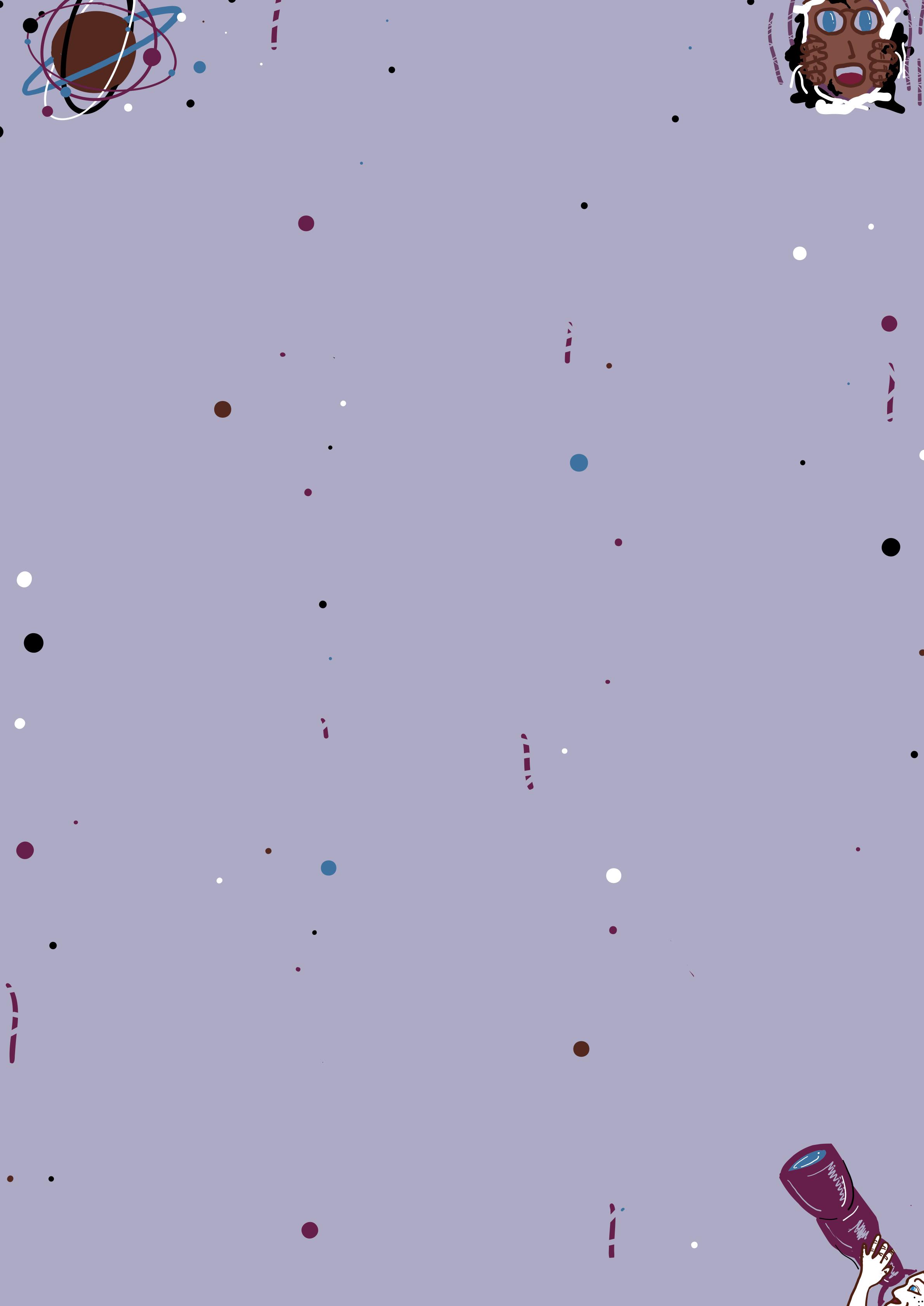
the Body
Abigail Brooks
80 The Spectators
Emily Macfarlane
ART
49 Featured Art
Helena Pantsis
53 Featured Art
Sara Yadav, Lauren Luchs and Sammaneh Pourshmaneh
PHOTOGRAPHY
50 Featured Photography
Piper Jones and Sammaneh Pourshmaneh
COLUMNS
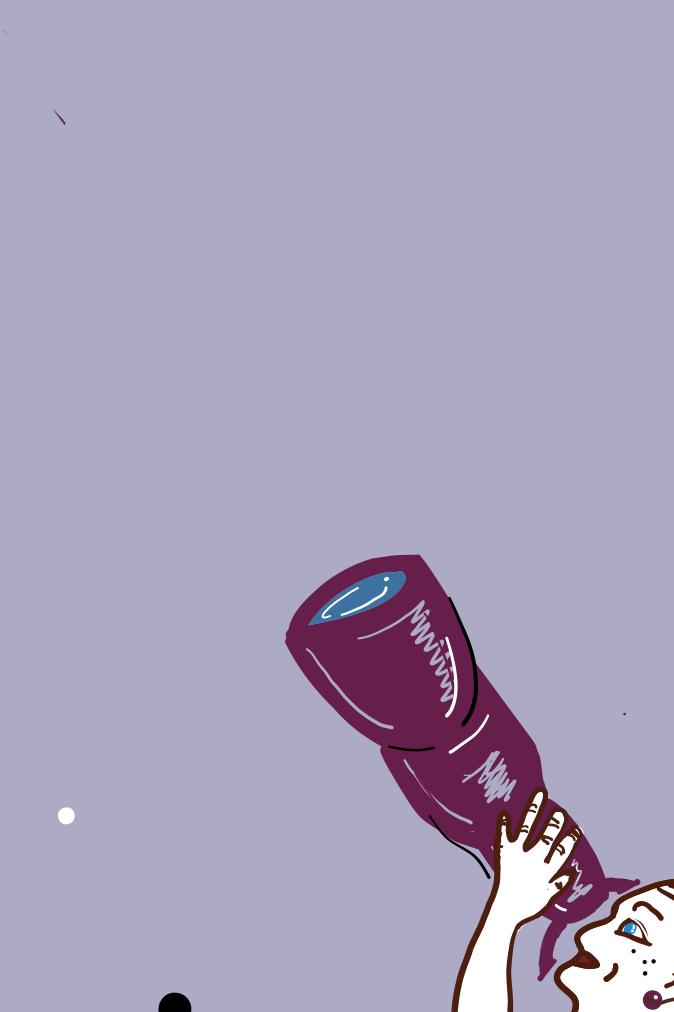
08 Different Perspectives
Luyao Shi
28 About in Melbourne
Meg Bonnes
31 There is Something in the Water: Meru
Donna Ferdinand
32 The Unauthorised, Unorthodox, Unofficial Guide to Writing a Novel Under the Age of Twenty: How not to write a novel in 24 hours
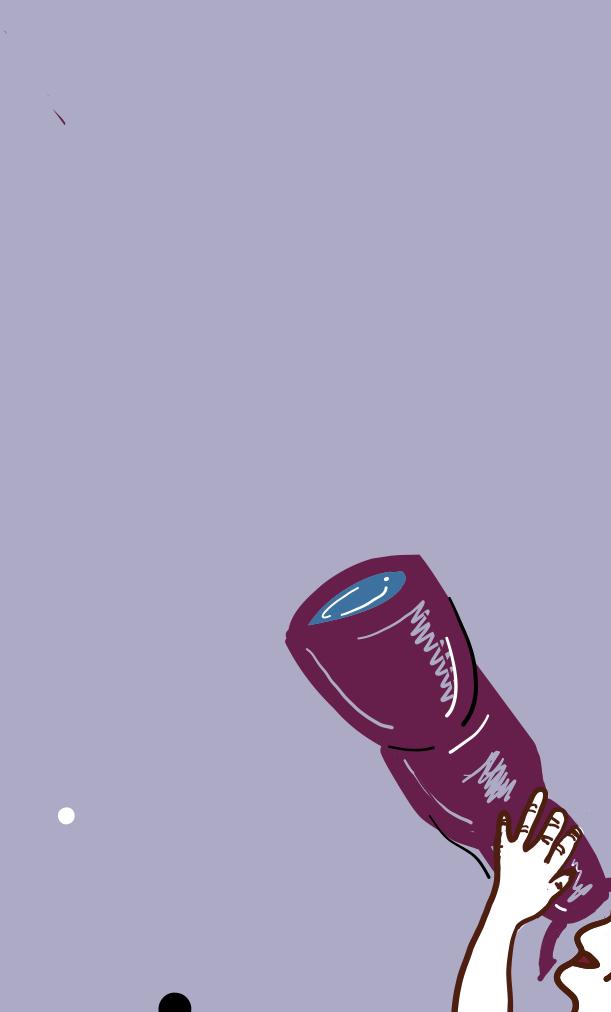
Claire Le Blond
77 Bleeding Marble: Medusa
Rhylee L.
82 Metro Disjunction: Chasing Your Ghost
Ledya Khamou
84 Hubert's Travelog: NGV
Yicheng Xu
86
CHRONIC: Fragments
Helena Pantsis
88 重复 Existence in Repetition
Zhuzhu Xie

CONTENTS FARRAGO 02 Contributors 03 Editorial UMSU 04 UMSU International Richard Ha 04 GSA Jesse Gardner-Russell 05 Southbank Updates Annalyce Wiebenga 06 Office Bearer Reports 24 Notice of Election NEWS 10 News-in-Brief
Nguyen, Chelsea Daniel, Joel Duggan and Josh Davis 11 “We’ve botched this campaign”— NUS calls for a student led 'Yes' campaign in Indigenous Voice to Parliament referendum Chelsea Daniel 12 “We’ve botched this campaign”— NUS calls for a student led 'Yes' campaign in Indigenous Voice to Parliament referendum Chelsea Daniel 13 NUS joins EROC, Fair Agenda to call for national taskforce to prevent sexual assault on campus Chelsea Daniel 13 UniMelb Chancellor Jane Hansen's installation called off amidst planned NTEU strike; overwhelming student solidarity
Agarwal
Failing students back on HECS “at the first possible opportunity", says Australian Universities Accord interim report Joel Duggan 16 Union House to become New Science Building; six buildings to be demolished under University of Melbourne's Estate Master Plan
Duggan , Alain Nguyen, and Chelsea Daniel 18 A Sit-Down Chat With Richard Ha, UMSU International's New President Rico Sulamet 20 The Normalisation of Unpaid Trials: How Melbourne’s Casual Job Market Exploits International Students Harshita Roy
Alain
Vanshika
15
Joel
Nguyen SATIRE
Satire-in-Brief
Alain
25
The Satire Team NON-FICTION
Wilson Cheng
The House
of Things Kien-Ling Liem 34 Imagining a matriarchal world
the key to world peace? Ola Wallis 36 Chapter XVI, Articles 304 – 307 (1883) Pavani Ambagahawattha 38 On Joyce’s Dubliners, Mental Paralysis and the Military Coup in Myanmar Nay Chi Nway 40 And Let the Tower Rise Donna Ferdinando 41 I Slow Down For Car Crashes Lizzie Browne 42 A Pocket of Time Kien-Ling Liem 44 A Game Of Echoes Kai J. Prideaux 46 Foreign Winds Bring Again Spring and Summer Sophie He 60 “The Shadows of History Are Never Too Far. Scratch the Surface and They Will Appear”; Shadow Spirit at the Rising Festival Larissa Brand RADIO FODDER 56 Radio Fodder's Declassified Gig Survival Guide 59 The New Boy: A Q&A With Cate Blanchett and Warwick Thornton on Their New Film About Faith and Survival. Wildes Lawler CREATIVE 62 black hole brumby Wildes Lawler 63 Intertwined Marceline Rose Di Bartolomeo 64 A Museum of Graves Jessica Fanwong 66 Narcissus Angela Yu 68 Mirror Matthew Lee 69 Another Path Michelle Yu 70 Nimrada Silva 72 Amor et Furor Nimrada Silva
do you think Pluto was upset the day he stopped being a planet?
Zavitsanos
being quiet feels like holding in a sneeze
Zavitsanos
Two Branches
Leach
this state of things
Le Blond
My thousand-year-old friend Michelle Yu
When Memory Outruns
Satire
Veronica Kwong 30 Our in-built fortune telling system
33
as a Collection
order: Are women
73
Stephen
74
Stephen
75
Michael
76
Claire
78
79
1
Illustration by Michelle Yu
(Ira) Green
Maham Mannan
Sasha Mahlab
Selina Zhang
Vanshika Agarwal
Winnie Cheng
NEWS SUBEDITORS
Asimenia Pestrivas
Claire Le Blond
Joel Duggan
Katya Sloboda-Bolton
Linh Nguyen
Linh Pham
Marcie Di Bartolomeo
Max Dowell
Nicholas Eastham
Rico Sulamet
Samson Cheung
Selina Zhang
Stephanie Umbrella
Thalia Blackney
Thomas Gilbert
CREATIVE SUBEDITORS
Ailish Steel
Annabelle Brown
Charlie Simmons
Chloe Pigneguy
Ern Syn Lee
Felicity Smith
Harvey Weir
Holly Mcpherson
Ilnaz Faizal Isobel Connor-Smithyman
Jaz Thiele Jessica Fanwong
Katelyn Samarkovski
Katrina Bell
Ledya Khamou
Livia Kurniawan
Marcie Di Bartolomeo
Mary Hampton
Matthew Chan
Matthew Lee
Mia Pahljina
Michelle Yu
Nalini Jacob-Roussety Olivia Brewer
Romany Murray
Ruth Jarra
Stephen Zavitsanos
Sybilla George
NON-FICTION SUBEDI-
Angela Yu
Annabelle Brown
Anushka Mankodi
Anushka Singh
Beatrice Van Rest
Bella Farrelly Catherine Tootell Charlie Simmons
Anya Aw
Arunika Madina
Ben Levy
Chenyi (Yolanda) Liang
Erin O'Neill
Ha Khoa Dang (Calvin)
Hannah Ogawa
Harshita Roy
Heidi Zhou
Jasmine Leong
Karen Kan
Karin Chen
Kinsley Wang
Lihini Gamage
Maehula Datta
Max Elwers
Michael Sadegi
Smiriti Hosur
Tony Hao
Yuyang (Angela) Liu
Yuyang (Kevin) Sun
FODDER BLOG TEAM

Ainsley Paton
Aqira Clark
Bella Farrelly
Catherine Tootell

Claudia Goundar
Crystal Lim
Dimple Maholtra
Harrison George
Issy Abe-Owensmith
Ilnaz Faizal
Jessica Fanwong
Joanne Zou
Katelyn Samarkovski
Marcie Di Bartolomeo
Noa Shenker
Sonya Chong
Rebecca Weynberg
Romany Murray
SATIRE TEAM
Charlie Robinson
Charlotte Handley
Julie/Jules Song
iana abrigo
SOCIAL MEDIA

Amelia Han
Bella Farrelly
Charlotte Chang
Elizabeth Browne
Katelyn Samarkovski
Maehula Datta
Nashitaat Islam
This magazine is made from 100% recycled paper. Please recycle this magazine after use.
Farrago is the newspaper of the University of Melbourne Student Union (UMSU). Farrago is published by the General Secretary. The views expressed herein are not necessarily those of UMSU. If you want to raise an issue within the union and with the university, please contact the President and General Secretary.
president@union.unimelb.edu.au secretary@union.unimelb.edu.au
EDITORS Carmen Chin Josh Davis Weiting Chen Xiaole Zhan COVER Lihini Gamage MANAGERS Akash Anil Nair Alexia Shaw Eldon Lee Iyaad Casim Jack Jeffreys Jaz Thiele Joel Duggan Lochlainn Heley Maya Hall Nishtha Banavalikar Yvonne Le CONTRIBUTORS Alain Nguyen Angela Yu Chelsea Daniel Claire Le Blond Donna Ferdinando Harshita Roy Jessica Fanwong Joel Duggan Kai Prideaux Kien-Ling Liem Larissa Brand Lauren Luchs Lizzie Browne Marcie Di Bartolomeo Matthew Lee Michael Leach Michelle Yu Nay Chi Nway Nimrada Silva Ola Wallis Pavani Ambagahawattha Piper Jones-Evans Rico Sulamet Sammaneh Pourshafighi Sophie He Vanshika Agarwal Veronica Kwong Wildes Lawler Wilson Cheng Zisis Zak Tsiouklas COLUMNISTS Claire Le Blond Donna Ferdinando Hannah Hartnett Ledya Khamou Rhylee L. Yan Ru Lee GRAPHIC COLUMNISTS Helena Pantsis Luyao Shi Meg Bonnes Yicheng Xu Zhuzhu Xie ONLINE COLUMNISTS Jocelyn Saunders Creative Literature and Writing Society – C.L.A.W.S Breana Galea NEWS TEAM Alain Nguyen Caitlin Hall Chelsea Daniel Churan Zhang Dominique Jones Elizabeth Browne Hannah Vandenbogaerde Harshita Roy Joel Duggan Julie/Jules Song Laura
TORS
Cori Rushdi Finley Japp Isabel Charlton Jaime Tan Judith Vu Kai Prideaux Mary Hampton Ola Wallis Samson Cheung Sara Vojdani Simran Khera Stephen Zavitsanos Tina Thakrar Virosca Gan STAFF WRITERS Animesh Ghimiray Chloe Frances Claudia Goundar Dominique Jones Donna Ferdinando Edward Carrick Elizabeth Browne Georgia York iana abrigo Isolde Kieni-Judd Jordan Fenske Kien-Ling Liem Larissa Brand Meagan Hansen Megha Iyer Mira Manghani Pamela Piechowicz Sebastian Hugh Stephanie Munn Velentina Boulter Veronica Kwong REVIEWS WRITERS Alexia Shaw Anushka Singh Beatrice Van Rest Caitlin Hall Chathuni Gunatilake Chelsea Daniel David Nawaratne Desmond Ng Dimple Maholtra Emma Xerri Georgie Atkins Hayley Li Shan Yeow Indy Smith Isabel Charlton Joanne Zou Judith Vu Katelyn Samarkovski Linh Pham Narii Hamill Salmon Sybilla George Tah Ai Jia Tharidi Walimunige Vanshika Agarwal Victoria Winata ILLUSTRATORS Alexi O'Keefe Amber Liang Arielle Vlahiotis Ashlea Banon Crystal Wu Duy D Emma Bui Felicity Yiran Smith Harriet Chard Indy Smith Jacques CA Jessica Norton Jocelyn Lauren Kimber Leilani Leon Lucy Chen Manyu Wang Meg Bonnes Michelle Yu Nashitaat Islam Nina Hughes Olivia Sutherland Rachel Radhika Paralkar Tina Tao Thao Duyen (Jennifer) Nguyen Zhuzhu Xie GRAPHIC DESIGN Gaius Kwong Jennifer Nguyen Nashitaat Islam Nhat Duy Dang Zhuzhu Xie PHOTO & VIDEO TEAM Adrian Wong Alain Nguyen Angela Yu
2
EDITORIAL
Imagine a shattered mirror and reflections of your face staring back at you over and over within each miniscule shard. What would you find if you walked through the looking glass into another time? Another place? Why are all the plastic googly eyes you spilt over your bedroom floor following your every move? What was your parallel self doing on April 29th? Somewhere, a supernova erupts in an explosion of glitter and gore. A butterfly flaps its wings. Someone pulls themselves up by their own bootstraps. Things start to get weird. The entire universe and beyond is your disco ball of scintillating possibility.
In News, we traverse our own ever-changing universe, briefing you on the NUS’ contribution to Indigenous Voice to Parliament campaign, an NTEU win in their ongoing enterprise bargaining campaign, the future of Union House (finally!), and new UMSU International President Richard Ha’s plans for 2023 and 2024 .
In the Creative pocket of the multiverse, you will find Pluto moping over a planetary break-up text, a piano painted with clouds, watercolour-stained marble, bashful guitars, slimy tea leaves and blunt pencils speaking of yet-written words…
In the scintillating shards of Non-Fiction, a matriarchal world order is imagined, the uncanny phenomenon of deja vu is investigated and a personal and lyrical reflection on time is spoken to someone once remembered.
In the multicoloured kaleidoscope of the Design department, we follow the fourth instalment of ‘Hubert’s travelogue’ through Fitzroy, Chadstone and Brunswick, explore the cycles of fate, growth and decay in this toxic lime green instalment of graphic column ‘Chronic’ and glimpse black-and-white mosaics of strangers in the graphic column ‘Existence in Repetition.’
It’s time to wallow in your existential angst and ecstasy and explore the cosmos of Farrago Edition 4:, Multiverse.
 Illustration by Olivia Sutherland
Illustration by Olivia Sutherland
3
by Richard Ha, UMSU International President
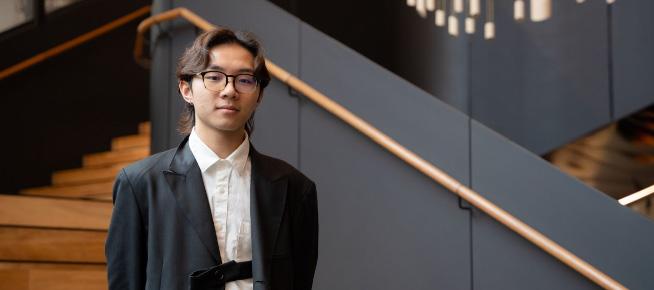
Over the period since the last edition was released, UMSU International has continued to make progress on our events and initiatives. We’ve had our annual general elections and are currently in the process of welcoming the new incoming committee! Currently, I’m in the process of learning the ropes from the outgoing President Sanskar Agarwal, so it’s been exciting, and I am looking forward to furthering the representation for international students in the coming year.
Our initiative to combat period poverty has also been further solidified
UMSU INTERNATIONAL GSA
as vending machines dispensing these period products for free are installed in various locations around campus, and a campaign promoting these will be rolling out hopefully by the time this edition is published. In addition to that, we are continuing our progress on addressing mental health issues, racism, and the learning experience directly with the University of Melbourne.
Looking ahead, we are continuing our International Brekkie program every single Monday, Wednesday, and Friday at 9.30AM outside Gate 6, and the turnout has been phenomenal every single time. We’re extremely grateful to all the students that support this integral event of ours, and the international student ambassadors and committee members for making it happen!
Further along in this semester, expect tons of exciting events from us, including an international-student focused careers fair which will be announced on our social media channels soon. Stay up to date on all things UMSU International by following us on Instagram and Facebook @umsuintl.
by Jesse Gardner-Russell, UMSU International President
Your new elected graduate student representatives have hit the ground running. We have hosted our 2-week graduate orientation program, run monthly town halls, delivered a Graduate Group induction day, advocated for improvements to exam delivery for students with disability and equity needs, provided submissions to TEQSA on NSSS and education standards, begun writing the new Graduate Research Training Policy with Chancellery, organised the inaugural GradCon in Brisbane and planned the return of the GSA Graduate Ball for November.
through the College of Graduate Research Associate Deans and the support of key stakeholders in Chancellery, has secured the largest back-to-back increases on stipends in 20 years.
This is just the beginning of the GSA’s work in this new term of office. I would like to thank all the graduate students and the GSA Board for placing their faith in me to continue leading the GSA as President and Board Chair for another year.
Like our graduate students undertaking winter subjects, research or without standard academic calendars, it has been a busy period at GSA. GSA finalised our independent elections in June. It was a humbling experience to see so many graduate students, from all walks of life and campuses, organically nominating to represent their peers.
Likewise, we are extremely proud to announce that the Graduate Researcher Stipend rate for 2024 will be lifted to $37,000 per year for full time PhD and MPhil students. When I began as GSA President in 2022, the stipend rate was $32,000. GSA’s collective advocacy efforts
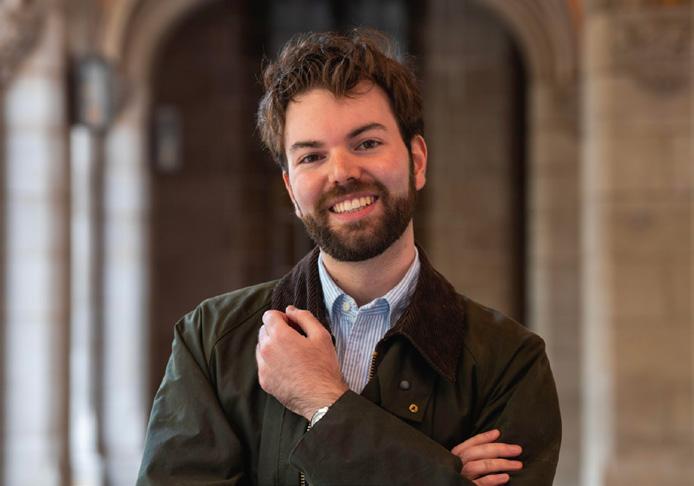
The role of GSA President has many responsibilities associated with it. However, it also grants access to the highest levels of the University Leadership, enabling the GSA to advocate for the best interests of all graduate students, whether you are doing coursework or research.
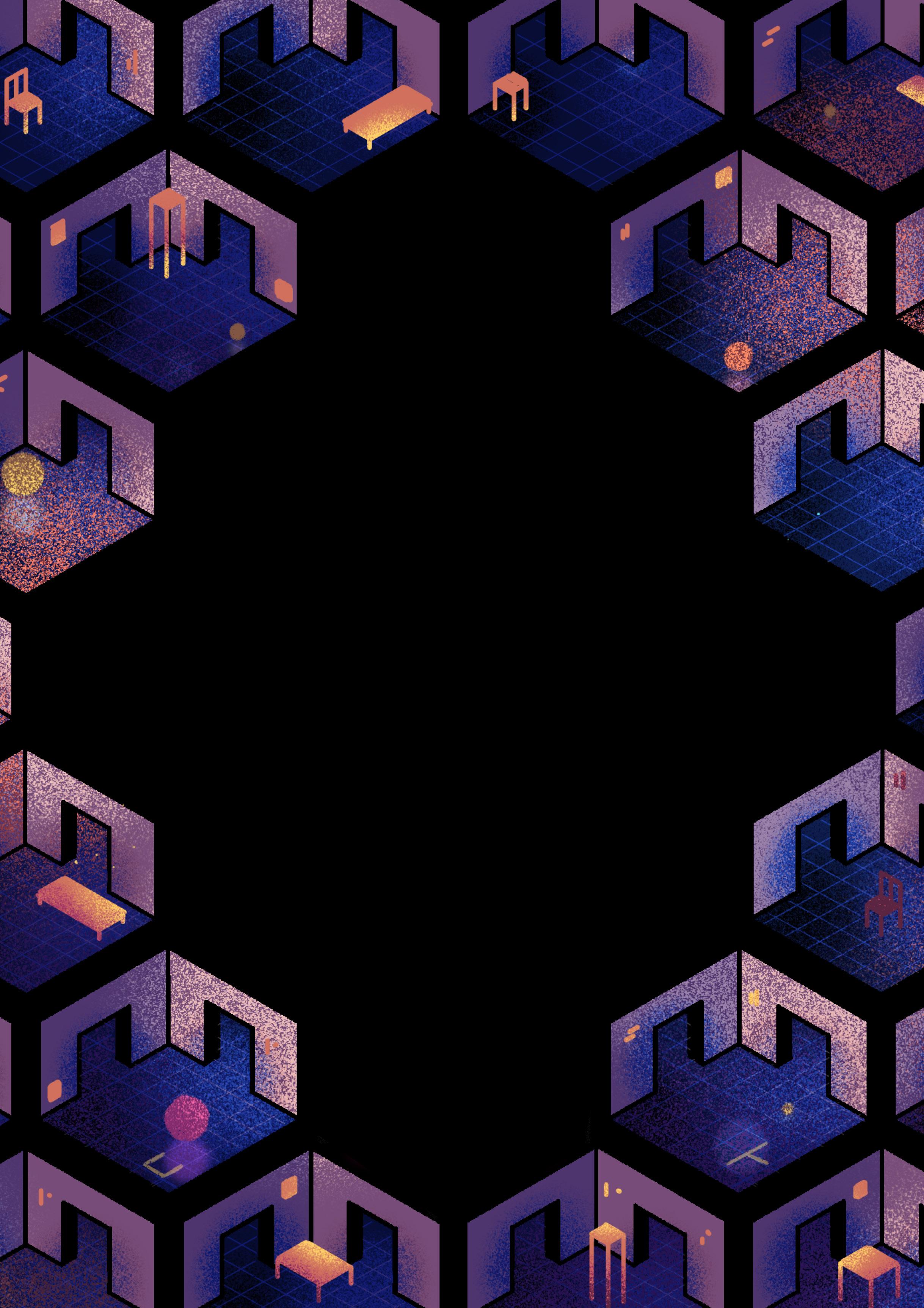
UMSU
4
SOUTHBANK UPDATES
By Annalyce Wiebenga, Southbank Coordinator
We are rolling our way through semester 2 with a packed calendar for you!
On Tuesdays we have our vegan BBQs near the Red Sheds, now running from 11:45am–1:30pm. Our breakfasts continue on Thursday mornings 8am–10am in the Hub Student Lounge—we’re trying out a new caterer!
We have our three collectives!
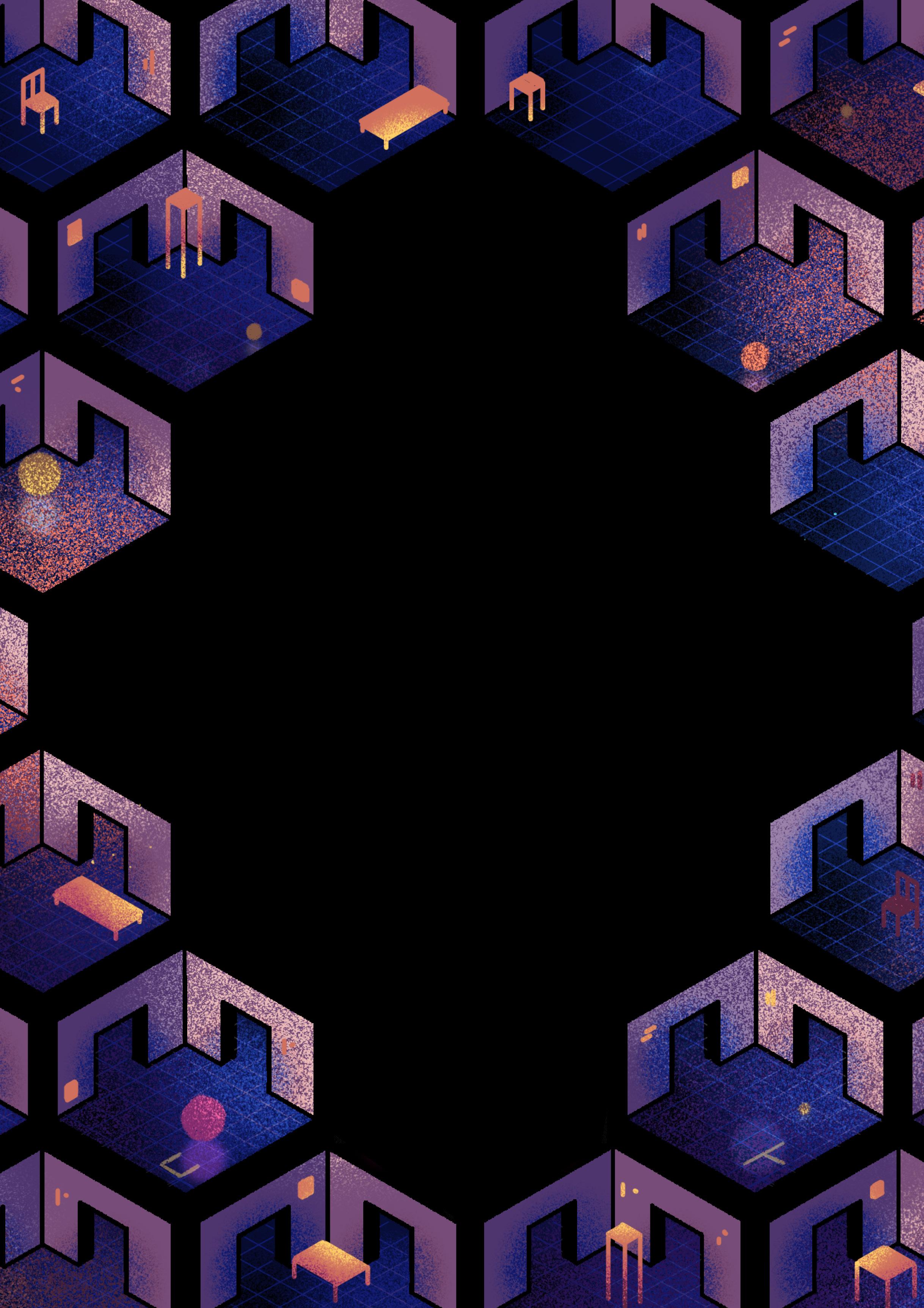
• Queer x Southbank: Weeks 3, 6, 9: Wednesdays 12:30pm–1:30pm at Betwixt. It’s a bit chilly for a picnic at the moment, so enjoy the cafe vibes instead!
• People of Colour x Southbank: Weeks 4, 7, 10: Fridays 12:10pm–1:10pm at Betwixt. Same place, slightly different time!
• Disabilities x Southbank: Weeks 5, 8, 11: Wednesdays 1pm–2pm in the UMSU Office on Level 2 of the Southbank Library. Same time, same place!
Now, the big stuff!
Our Mudfest Appetiser event with UMSU Creative Arts is Thursday of Week 4 at Betwixt. A little taste of the main Mudfest program, but scaled down to be cafe-friendly!
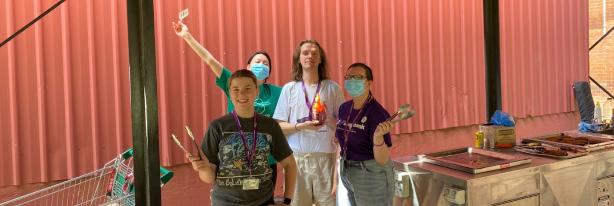
We have our Southbank Ball with the Music Students’ Society on Wednesday of Week 6. We were floored by the demand this year; if you snagged a ticket, see you there for a night of drinks, food, music and photos! If your teachers get mad about the midweek party, give them our email ;)
Keep an eye out for more events and giveaways…
You can find us on level 2 of the Southbank library behind the double doors. If the lights are on, we’re probably around! Otherwise, contact us digitally:
Facebook:
https://www.facebook.com/umsusouthbank
Instagram: @umsu_southbank, or https://www.instagram.com/umsu_southbank/ UMSU Website: https://umsu.unimelb.edu.au/communities/southbank/ Email: southbank@union.unimelb.edu.au
Keep an eye on our socials, the UMSU website, and posters going up around Southbank campus for the latest details.
UMSU
Illustration
by Weiting Chen
5
It’s been a pretty busy couple months here in the Queer Department! From chill film nights to glamorous drag shows, we’ve held quite a few events that we hope all of you enjoyed.




We are currently working very hard on our many regular collectives, so make sure to check our socials for updates on that (shameless plug: Follow us on Instagram @umsuqueer).
Additionally, we are also preparing for Queer Ball and CAMP Magazine, so stay tuned for those announcements, and reach out to us if you have any queer-ies; we hope to make Semester 2 even more slay than before!
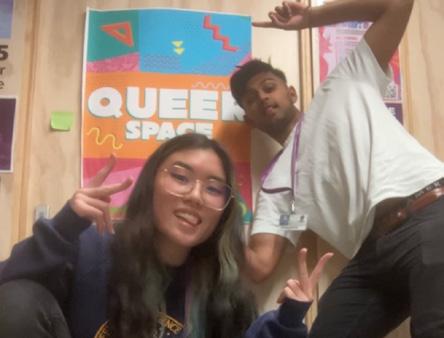

Winterfest Rug-up Op-shop and the launch of the Women’s Clothing Swap. Supporting Women in STEM. The Women’s Department wants you to get involved in Judy’s Punch, in MUDFEST x Women’s, and it all starts by visiting Building 168’s cosiest corner on Level 3.
We are also continuing to advocate for you in matters of Respect @ Unimelb, Women’s Health and Health Promotion, and encourage you to reach out to us if you’re excited to get involved with the Women’s Department. It’s a busy Semester 2 and we can’t wait to have you along for the ride. Get in touch!

UMSU
Disabilities | Alice Zhao and Adam Whitehead Report not submitted.
Indigenous | Harley Lewis Report not submitted.
People of Colour | Mohamed Hadi Report not submitted.
Queer | Mehul Gopalakrishnan and Leslie Ho
Women | Ngaire Bogemann and Alessandra Soliven
6
Activities | Arya Kushwaha and Tvisha Purswani Report not submitted.
Clubs & Societies | Kimmy Ng and Renee Thierry



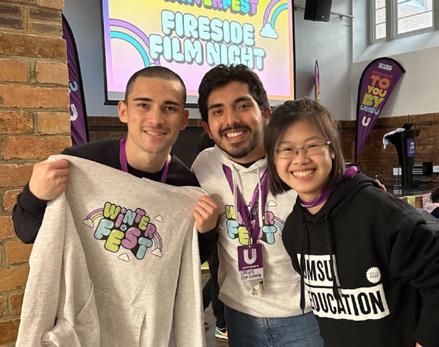
Semester Two here we come! The C&S Department has been very busy in O-Week putting together an incredible Winterfest Clubs Expo! With thousands of students in attendance, we had such a fun time meeting clubs and new students! We spent Winter Break creating resources for club executives and working on important policy for student wellbeing. We are so excited to say that the C&S Executive Training Canvas page is now live! The accompanying photo shows us satisfyingly ticking off our whiteboard To-Do lists.
Creative Arts | Savier D'Arsie-Marquez and Abbey Crowley Report not submitted.

Education Academic | Taj Takahashi and Mary Kin Chan

Time flies when you’re trying to submit this before COB!!! I hope everyone had a great time watching Pride during our Winterfest movie night, big shoutout to CME and the casuals who were literal godsends during the night. Hard to get through the rest of the year when it’s so cold but we’ll get through it!!! Also we will have another (bigger) BBQ again lol so keep an eye (and a nose?) out pls <333
Education Public | Carlos Lagos Martin
See Education Academic.
Environment | Emma Dynes and James Gallagher


We’ve been hard at work building support for UniMelb staff in the National Tertiary Education Union’s campaign for secure jobs and a real pay rise. This semester we’ll continue to support staff on strike, and we’ll also be campaigning against the AUKUS nuclear submarines deal as part of the National Union of Students’ campaign. The AUKUS deal will see hundreds of billions of dollars put towards the military, when it could be spent on welfare and education. It will bring Australia closer to a catastrophic war, and it poses the possibility of disastrous nuclear and environmental destruction.
Welfare | Yashica Mishra and Ishita Ganeriwala Report not submitted.
UMSU
7
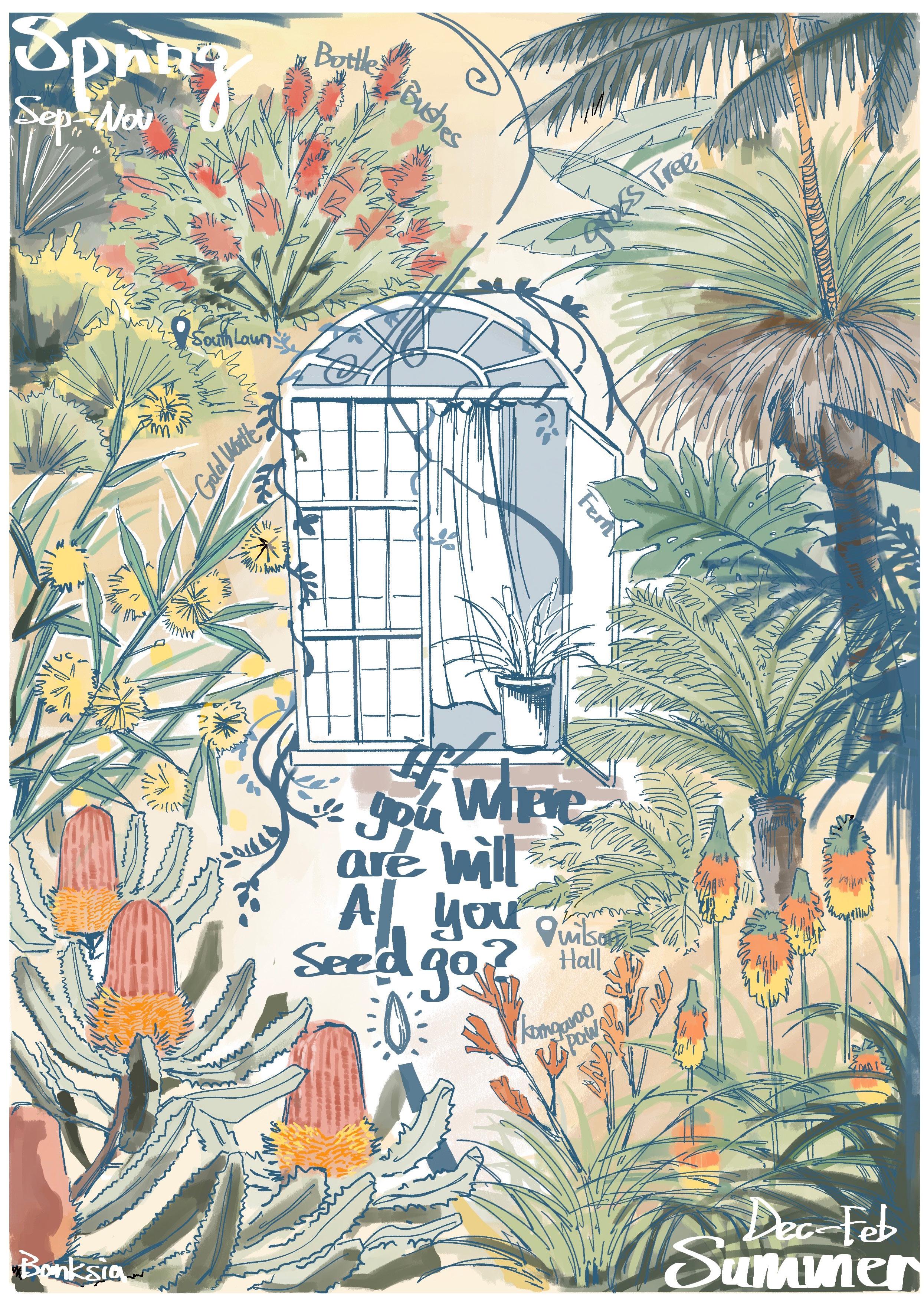
COLUMN ‘Different Perspectives’
8
by Luyao Shi

COLUMN 9
NUS IN BRIEF: EDCON '23, WRAPPED

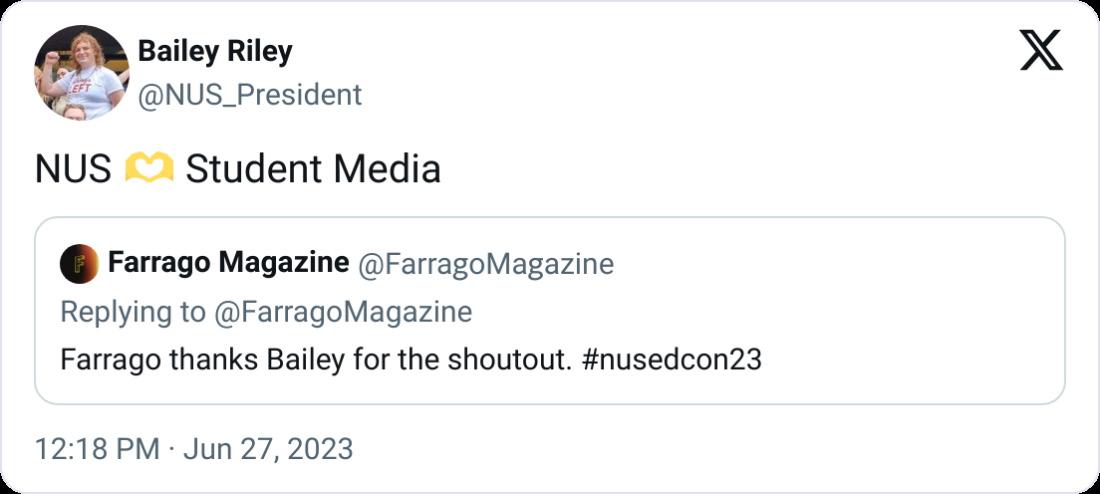



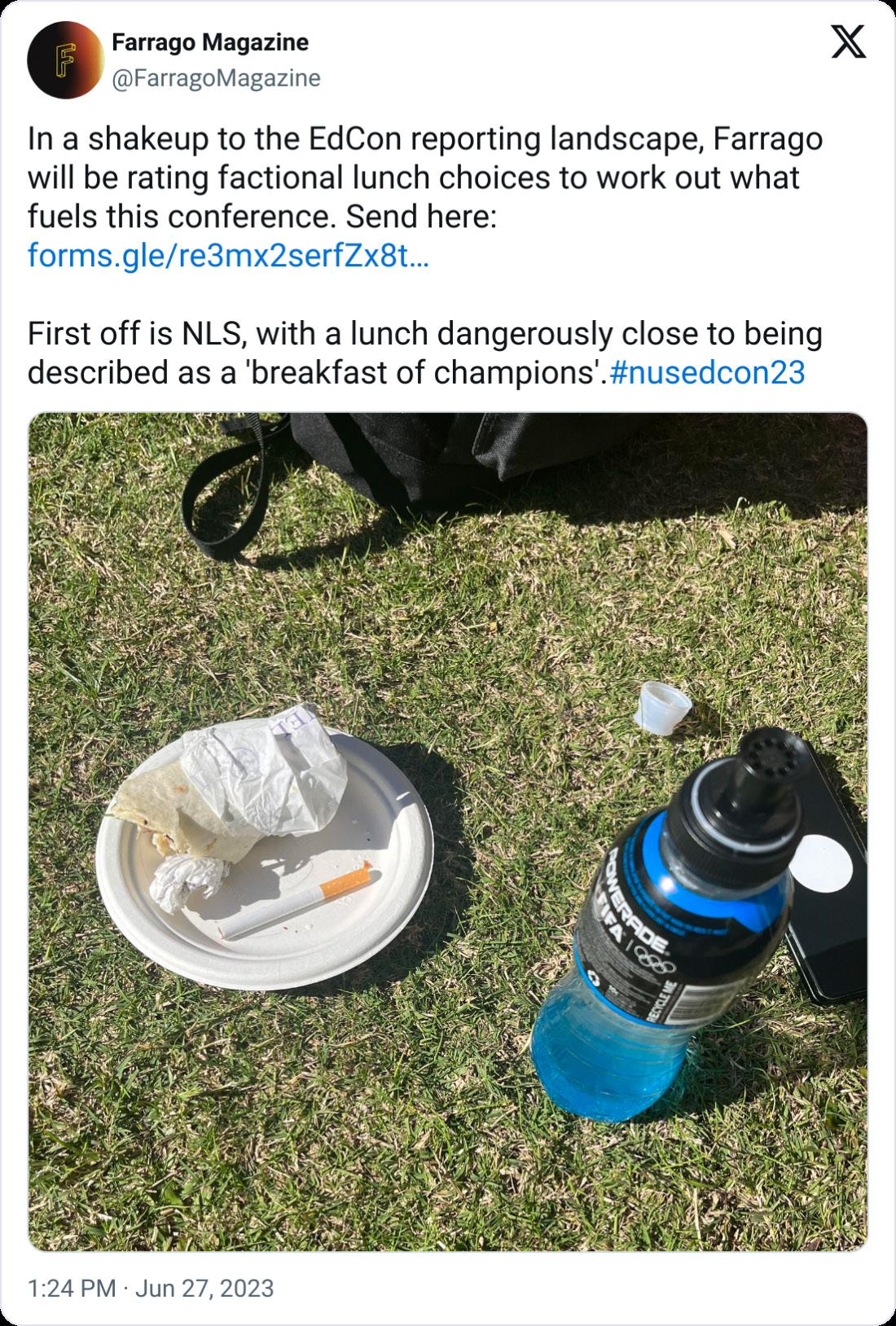
They've compiled a selection of the week's greatest hits for your viewing (dis)pleasure below:
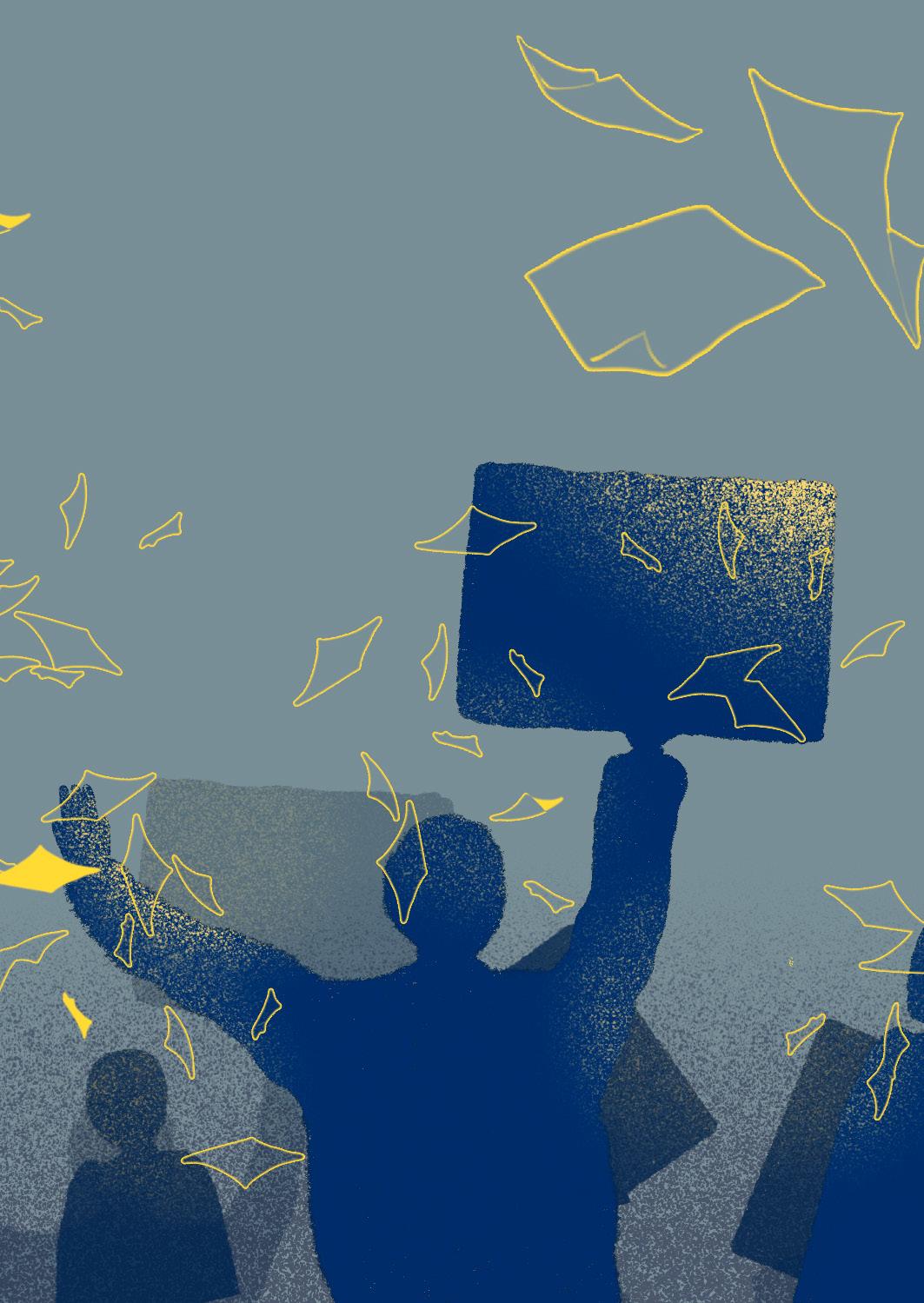
NEWS
Josh Davis, Joel Duggan, Alain Nguyen and Chelsea Daniel flew down to sunny St Lucia, Queensland to cover the National Union of Students' (NUS) 2023 Education Conference ('EdCon').
10





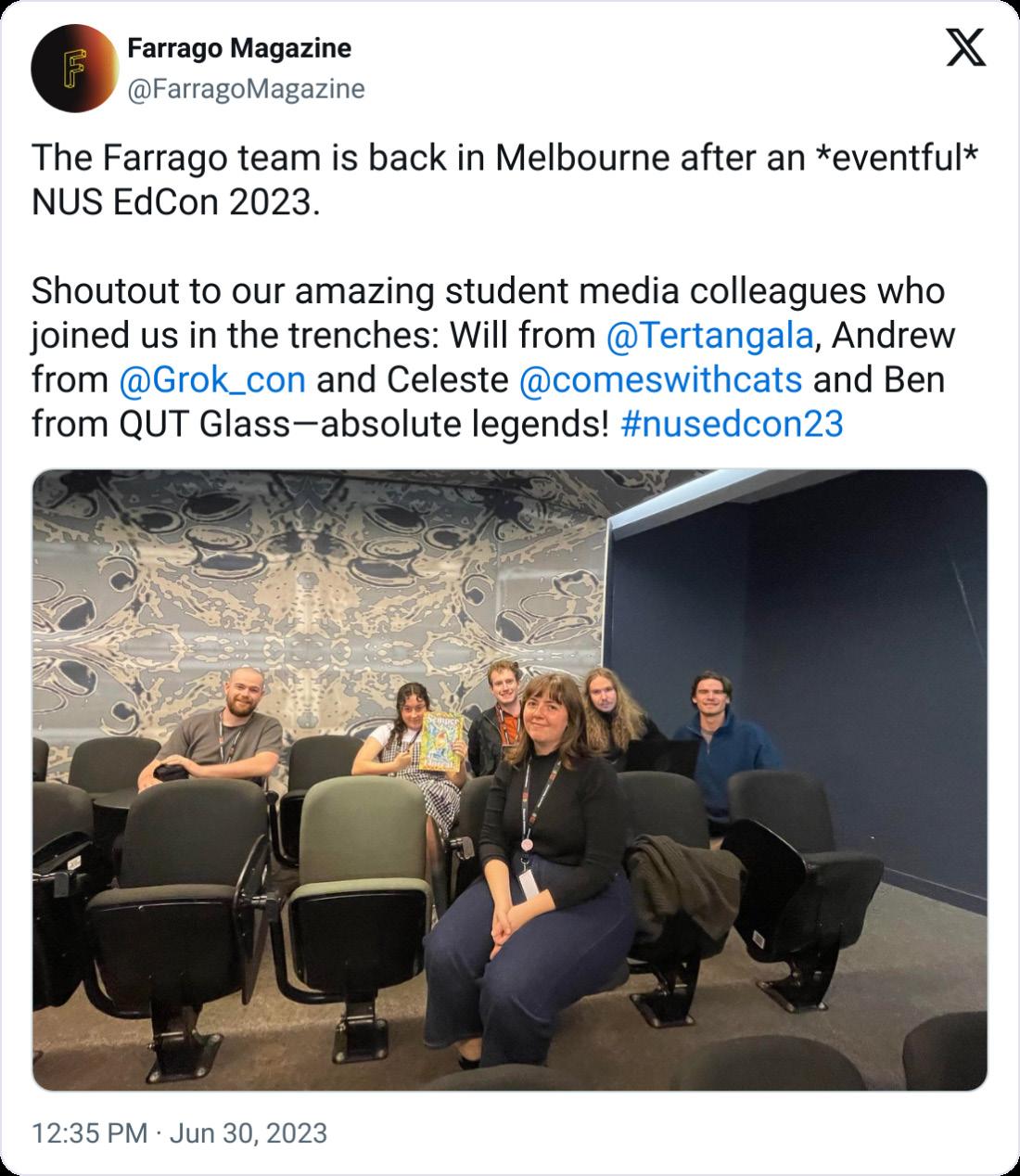

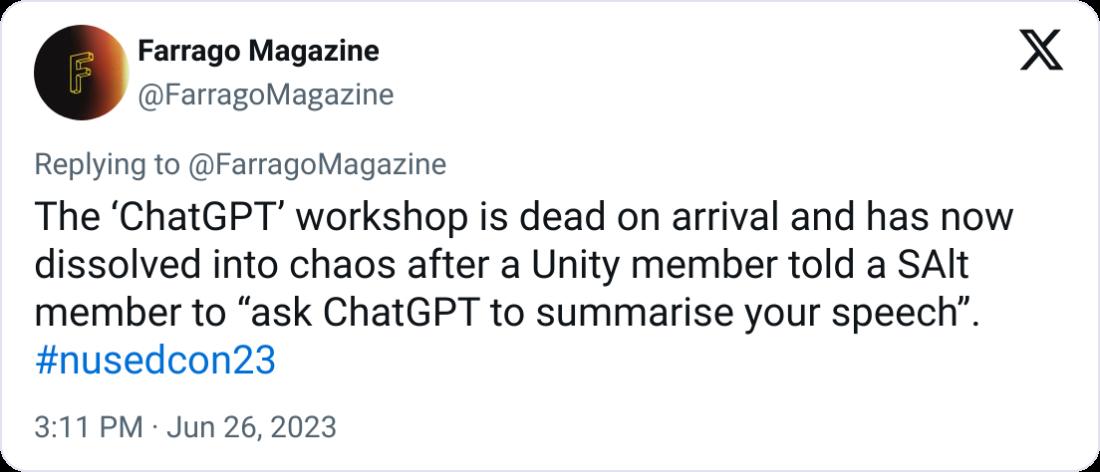




NEWS Illustration by Weiting Chen 11
Written by Chelsea Daniel
The National Union of Students (NUS) is calling for a more grassroots approach to the ‘Yes’ campaign for an Indigenous Voice to Parliament after a heated debate at June's Education Conference (EdCon) forced Labor students to concede that the party “[has] botched this campaign.”

This follows reports that support for the Voice to Parliament has fallen below a majority, with recent Newspoll figures indicating that 47% of respondents intend to vote ‘No’ in the upcoming referendum, compared to 43% intending to vote ‘Yes’.
NUS First Nations’ Officer and Wiradjuri man Patrick Taylor opened the conference’s discussion on the Voice in Tuesday’s plenary.
“The Yes campaign, as we know, has gone off on the wrong start”.
NUS President Bailey Riley, who is Wiradjuri, said that the NUS, and students more broadly, need to be organising more around the ‘Yes’ campaign.
Despite broad institutional support from universities, Riley said that “knowledge of the referendum is incredibly low” amongst students, criticising the current state of the ‘Yes’ campaign and calling for greater involvement from student unions.
“This shouldn’t be top down like Yes 23... this should be bottom up”.
Factions united on Voice support; split on Labor involvement
Whilst all major NUS factions are united in support of the Voice, tensions still exist between the Labor-aligned factions and other students over the ALP’s involvement in and management of the ‘Yes’ campaign.
NUS Queer Officer and senior Socialist Alternative figure Grace Hill accused Labor of “conceding... [to] racist No attacks”—referring to opposition leader Peter Dutton's claims that the Voice will “re-racialise Australia”—and criticised Labor's approach to the ‘Yes’ campaign.
“Why [is] a campaign that looked like it would be such an easy win... now looking like it is likely to lose?”
NUS General Secretary Sheldon Gait, who is a member of Labor Right faction Student Unity, agreed with some criticisms of Labor’s approach to the Voice referendum and acknowledged the campaign’s failures.
Drawing comparisons to the marriage equality plebiscite, where campaigning started over a year before voting, Gait said “we’ve botched this campaign... we’ve started way too late.”
Oskar Martin, a Bundjalung-Gamilaraay man and member of Socialist Alternative, condemned the Palaszczuk Government’s decision in Queensland to override the state’s Human Rights Act to make breach of bail an offense for children.
Martin also called out former WA Premier Mark McGowan for calling riots at the Banksia Hill youth prison—where the majority of detainees are Indigenous, some as young as ten years old—“a form of terrorism.” The Banksia Hill prison has been widely slammed for human rights abuses, including by the United Nations.
Riley, who is a member of Labor Leftaligned faction National Labor Students (NLS), agreed with Martin's criticisms of the party.
“I am Indigenous, I know these issues first fucking hand... I completely agree [that] we should campaign against the ALP for all the racist shit they do... of course I call Anastasia Palaszczuk a racist.”
UMSU undecided on Voice, leaning towards ‘Yes’
The University of Melbourne Student Union (UMSU) has not yet adopted a public stance on the Voice, although individual OBs have expressed their support. Women’s Officer and Gunaikurnai woman Ngaire Bogemann was vocal in her support for the voice at the conference.
“The voice isn’t a Labor Party idea... this is an ask for us by Indigenous Elders”, said Bogemann, saying that for her, a ‘Yes’ vote for the Voice is a vote for a “Yes and”, referring back the three pillars of the Uluru Statement from the Heart: Voice, Treaty and Truth.
“If [SAlt] won’t go out in the street and fight for a ‘Yes’ vote, I think that’s pretty fucking shameful”.
UMSU Indigenous Officer, Harley Lewis, “hates the whole stance idea”, as Indigenous students’ stance at the University of Melbourne “is too complex”.
“I wish I could vote ‘No’” Lewis said to Farrago, referencing his dislike of the Voice and Uluru Statement.
“But I feel a ‘No’ vote will stall progress worse than a ‘Yes’ vote”
Lewis says UMSU’s plans “are to focus more on educating students about both sides, and the context of issues”.
The University of Melbourne has previously expressed support for the Voice back in May this year. The referendum date hasn’t yet been announced, though is expected to be in October.
NEWS
Image source: National Union of Students
“We’ve botched this campaign”— NUS calls for a student led 'Yes' campaign in Indigenous Voice to Parliament referendum
12
NUS joins EROC, Fair Agenda to call for national taskforce to prevent sexual assault on campus
Written by Chelsea Daniel
This piece was originally published on the Farrago website on 17 July 2023.
The National Union of Students (NUS) has joined with sexual harm advocacy groups End Rape on Campus (EROC) and Fair Agenda to call for an independent taskforce to address universities’ failures to prevent sexual assault and sexual harassment (SASH) on campus.
This is part of the NUS’ submission to the Australian Universities’ Accords, which also recommended legislating a National Duty of Care to make universities legally responsible for students' safety and welfare.
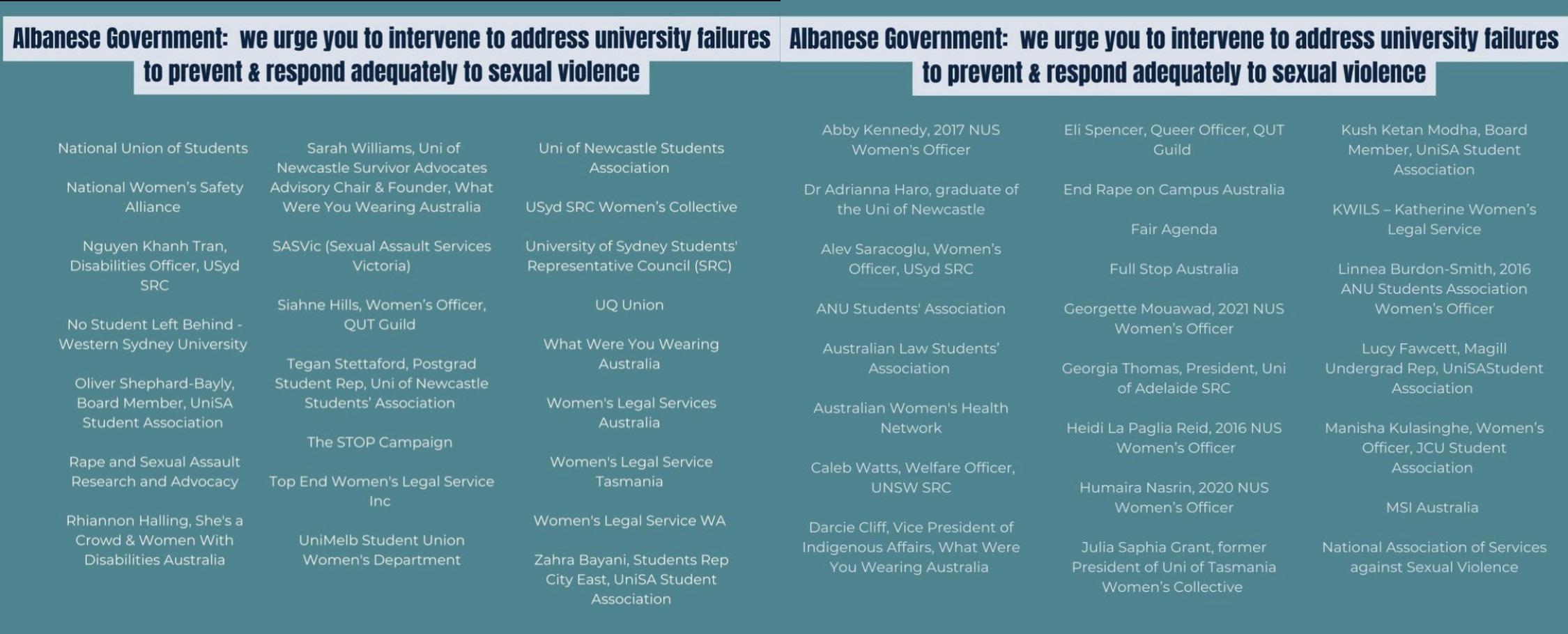
The submission recommends that the government “establishes a taskforce aimed at the prevention and response to rape on university campuses”. The taskforce would assess institutions’ responses to the National Student Safety Survey (NSSS), and would also have the power to intervene and “to mandate action from universities in response to the sexual assault crisis”.
The NSSS surveyed students nationwide on their safety from sexual assault and sexual harassment on university campuses. The survey found that one in six students in Australia have experienced sexual harassment since starting university, and one in twenty have experienced sexual assault.
Some victim-survivors chose not to report their experiences over concern
that “the university will not have the victim/survivors' best interests at heart”.
The NUS’ campaign for a national taskforce is a joint effort with Fair Australia, End Rape on Campus and The Hunting Ground Australia Project, with the groups acting on key recommendations from the Australian Human Rights Commission’s 2017 Change the Course campaign.
Advocates say the taskforce must be independent of both universities and on-campus residences, be expert-led with input from all stakeholders (including students), and include appropriate accountability and transparency mechanisms, requiring the reporting of anonymous data on the number of incidents that occur.
Whilst there is an existing body related to enforcing minimum student safety standards at universities—the Tertiary Education Quality and Standards Agency (TEQSA)—EROC founder and director Sharna Bremner told EdCon attendees that TEQSA was “the most ineffective regulatory body that I’ve ever come across.”
“It’s embarrassing at this point,” Bremner said, labeling the agency “actively harmful”.
Speaking to Farrago, Bremner said a national taskforce was “necessary” as the current process is “more harmful than helpful”. She labelled “national oversight” of universities’ responses to sexual harm a “need”, with a specific focus on college and on-campus safety required.
“Colleges refuse to provide any information on what they’re doing... we know colleges are a place where most sexual assaults take place.”
The University of Melbourne’s Sexual Misconduct Report did not specifically mention clubs and colleges, despite stating that 39.7% of harassment occurs in “general campus areas”. Nationally, 25.3% of “most impactful incidents” occurred on “student accommodation or residences”.
A national taskforce would create a separate body with a mandate to publish results and statistics from each University campus. It could also analyse the intersections of assault and harassment on campus with disability and queerness, with disabled and queer students found by the NSSS to be more likely to experience sexual assault and harassment.
“Universities have failed at this issue,” Bremner said.
“Non-binary students and trans students are at a significant risk… We haven’t seen one university do that well”.
Bremner specifically called out University of Melbourne Vice Chancellor Duncan Maskell’s recent email to students regarding graffiti and vandalism on campus, arguing that he condemned the graffiti in stronger terms than the NSSS' findings of sexual violence at the University.
“When we have property damage taken more seriously than the safety of marginalized people on campus, we have a large problem.”
NEWS
Image source: End Rape on Campus 13
UniMelb
Chancellor Jane Hansen's installation called off amidst planned NTEU strike; overwhelming student solidarity
Written by Vanshika Agarwal
The installation of Jane Hansen AO as the newly-appointed 23rd Chancellor of the University of Melbourne has been cancelled after staff from the National Tertiary Education Union (NTEU) and students from the UniMelb EBA Now solidarity campaign announced a planned strike in protest of University management's continued inaction in ongoing enterprise bargaining negotiations.
The installation, originally planned for Wednesday 24 May, was cancelled in an email to attendees on Friday 19 May due to a "planned protest," shortly after the NTEU announced the planned strike action.
“It reads to us like the [University] had no appetite to be confronted in that sort of public way with a lot of guests there,” said Chloe Mackenzie, acting president of the NTEU's University of Melbourne branch, in a statement.
The industrial action campaign has been ongoing since August last year, after the NTEU lodged their log of claims came up with its log of claims and started to take industrial action led by the strike committee.
The main goal of the campaign is for University staff to receive an above-inflation pay rise, and for the University to implement an 80% secure work target.
The campaign has been supported by student solidarity group 'UniMelb EBA Now', which is led by students active
in the University of Melbourne Student Union (UMSU) and the NTEU.
James Gallagher, UMSU Enviroment Officer and one of the leaders of the solidarity campaign, expressed his concern that the narrative of the strikes is not as simple as a "management vs staff fight", saying that this overlooks the place of students as stakeholders in the industrial action occurring on campus.
Gallagher, who worries that the Fair Work Ombudsman might intervene and ban the strikes as a hindrance to students’ education and welfare, added that it is important for students to be an active part of the campaign in order to stand up against the normalisation of staff underpayment, which is occurring whilst higher education is exported internationally for billions of dollars in profit each year.
According to the NTEU, there has been a growing trend of insecure employment in Australia’s higher education sector, with casual employees making up more than 66% of all workers in the sector.
Over 50% of University of Melbourne academic staff are employed on a casual basis.
According to Emily Kaji, NTEU delegate and Baillieu library assistant, “The University does not seem genuinely committed to providing the staff’s demands.”

Kaji says that University management has reportedly been cancelling or delaying bargaining sessions at the last
minute, which has made it difficult for union representatives to hold them accountable for their actions.
When discussing the University’s commitment to providing 80% secure work, Kaji added that “[University management] wanna put out vague messages that they care about student welfare and staff rights... but they don't want to add actual numbers that we can hold them accountable to legally.”
Mackenzie explained that constant restructures by University management, especially since the pandemic, have made it difficult for academic staff to plan for the future.
“It’s been really demoralising watching colleagues get redundant, and having to leave the [U]niversity”.
Raphael Duffy, a student volunteer in the campaign, has shown his regular support for the staff strikes through active participation in the student solidarity forums.
“I think [other students] underestimate the intransigence of the university executives and the necessity to organise a student support campaign,” he said.
Mackenzie, who was previously invited to speak at one of forums, said she has been impressed by the personal and political involvement of students so far.
Thousands of staff and students participated in the 3 May strike, which was the first strike at the University in years.
NEWS
Photography by Joel Duggan
14
Failing students back on HECS “at the first possible opportunity", says Australian Universities Accord interim report
Written by Joel Duggan
This piece was originally published on the Farrago website on 19 July 2023.
Labor’s Federal Education Minister Jason Clare has committed to abolishing the 50% pass rate rule that currently prevents failing students from accessing HECS-HELP support as part of a suite of other higher education reforms designed to make the sector more equitable.
The Australian Universities Accord Interim Report, released last month, announced five policy priorities aimed at increasing higher education participation from underrepresented groups including those who are First Nations, disabled, regionally located or of low socioeconomic status.

Introduced as part of the controversial 2020 Job Ready Graduates (JRG) policy package, the report cites the disproportionate disadvantage inflicted on underrepresented students as the reason for scrapping the 50% pass rule, and recommends considering further changes to other aspects of the package
“While the Review believes other aspects of the JRG package need reform, this change should proceed at the first possible opportunity”, the report states.
The government will work with universities to extend access to regional communities through establishing more Regional University Centres and will develop a similar strategy for suburban areas.
As part of a commitment to put “First Nations at the heart of Australia’s higher education system,” the government will also guarantee a Commonwealth Supported Place for all First Nations students, including those from metropolitan areas who are ineligible under current guarantees for regional and remote students.
The Higher Education Continuity Guarantee, which guarantees Commonwealth subsidies to public universities, will also be extended through to 2025 until a new funding arrangement can be implemented.
National Cabinet will also engage state and territory governments on university governance, with a specific focus on restructuring governing boards to prioritise expertise in higher education, improving staff and student wellbeing, and ensuring universities act as “exemplary employers”.
Beyond these “five modest, sensible priority actions to be considered immediately,” the interim report lists multiple other policy areas that will require further consideration in the future: equity
in university access, addressing skills shortages and fostering educational excellence and international engagement.
“The overall goal of reform must be growth for skills through greater equity,” states the report’s preamble.
The National Union of Students (NUS) has welcomed these changes, but called for the government to commit to further student-centred reforms, including federally legislating a Duty of Care for tertiary institutions, lowering the Centrelink Age of Independence to 18 and raising Youth Allowance payments to $88 a day.
“The Labor government missed an opportunity to end student poverty during the 2023 Federal Budget, or to commit to support students financially in the short-term. The NUS urges the Government to guarantee that there will be positive changes for students as part of the Universities Accord, and not to delay much needed support any further”, said NUS President Bailey Riley.
This interim report is the first report of the Universities Accord formed last year to build a long-term plan for Australia’s higher education sector.
The Accord’s final report is due to be released in December 2023.
NEWS
Image source: Department of Education 15
Union House to become New Science Building; six buildings to be demolished under University of Melbourne's Estate Master Plan
 Written by Joel Duggan, Alain Nguyen, and Chelsea Daniel
Written by Joel Duggan, Alain Nguyen, and Chelsea Daniel
This piece was originally published on the Farrago website on 30 July 2023.
Union House is set to become a new Science Building and several Faculty of Arts and Faculty of Medicine, Dentistry and Health Sciences buildings will be demolished amongst sweeping changes announced in the University of Melbourne's Estate Master Plan.
In an email to staff on Thursday July 27, Vice-Chancellor Duncan Maskell announced the mass redevelopment, stating that key goals included the creation of 22,000 square metres of new green space, and the upgrade of Grattan Street into a “major entry point” for the Parkville campus.
A map published in the Plan indicates that the John Medley Building will be demolished to make way for parkland intended to unite the northern and southern areas of the Parkville campus, centred around the upcoming Parkville Station.
The Faculty of Medicine, Dentistry and Health Sciences will also lose four buildings to a redevelopment of Parkville’s south-western corner that will demolish the Medical Building, the Brownless Biomedical Library, the Old Howard Florey Laboratories, and Old Microbiology, with the intention of further infrastructure investment down the line.
Students will also lose access to Building 199—the current home of student services centre Stop 1—which is slated for demolition under the Plan.
Union House, originally built in 1864 as the National Museum of Victoria and later home to the University of Melbourne Student Union (UMSU) and its predecessor organisations from 1910 until 2022, has also had its future confirmed after years of uncertainty and rumour, with the Plan listing the location as a “New Science Building” shown in an architectural render with a glass facade and solar panel roof.
Arts: Faculty of Where?
With John Medley—which hosts the School of Culture and Communication and School of Social and Political Sciences— on the chopping block, the future of much of the Faculty of Arts’ Parkville infrastructure is unclear.
Considering that Old Arts has been marked for "staff accommodation", it appears that it will be retrofitted with new offices for displaced members of the Arts Faculty.
The Plan does not specify whether the placement of a new “Journalism Lab” in the Babel Building, home of the School of Languages and Linguistics, is intended as an extension or a replacement of existing facilities.
Similarly, the Grimwade Centre for Cultural Material Conservations does not receive confirmation of a new location, although the Plan indicates that this will be announced sometime in the future.
It appears that Arts West will remain relatively untouched by these changes, as one of only a few buildings on campus that will remain solely dedicated to the Faculty of Arts.
NEWS
Illustrative render of Parkville campus facing north from Old Quad. Render credit: Hassell Ltd 16
Refurbishments for Parkville:
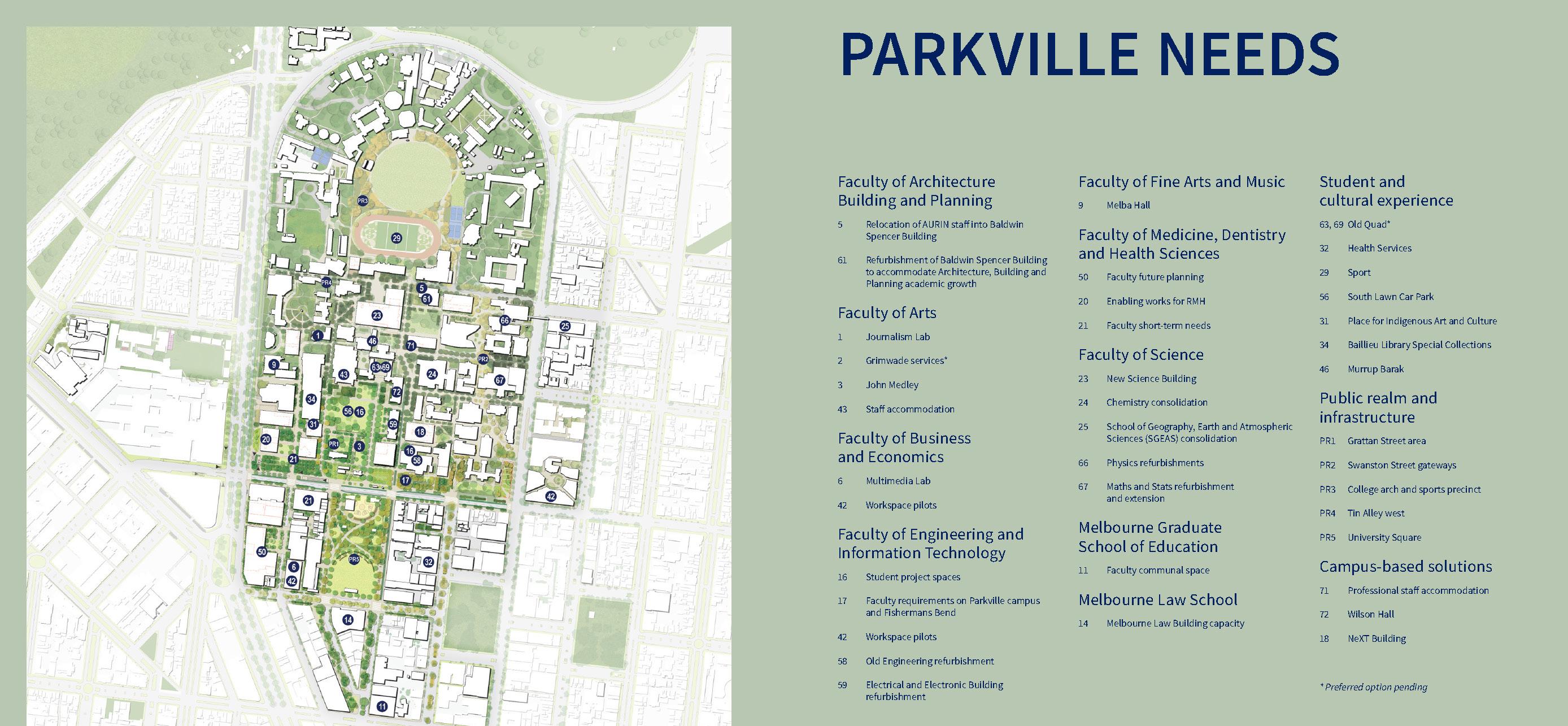
Many of the Plan’s proposed changes at Parkville are refurbishments of older buildings around the campus, including Old Engineering, the Electrical and Electronic Engineering Building, and the Physics, and Maths and Stats Building.
The Baldwin Spencer Building, which hosts the Faculty of Architecture, Building and Planning, is also scheduled for a refurbishment of the building's interior. Currently, the building consists of a computer lab design hall for postgraduate students, and some office space.
The Baldwin Spencer Building is also planned to become home to staff from the Australian Urban Research Infrastructure Network.
Meanwhile, south of Grattan Street, the University is planning to construct a multimedia lab and “workspace pilots” at The Spot.
References to the Melbourne Law School in the Plan mention an increase to “law building capacity,” which may include expansions or refurbishments of the current building.
At the southernmost part of the campus intersecting Queensberry Street and Leicester Street, the University is also looking to create a “faculty communal space” at the Melbourne Graduate School of Education buildings.
Upgrades for Southbank and Regional Campuses:
Whilst the Plan mainly focuses on Parkville, it does also contain offerings for the University’s other campuses based on needs identified during consultation.
Southbank will receive renovations aimed at upgrading public spaces around campus, along with upgraded facilities for Dance, Film and TV students.
Improvements will also be made to the accommodation and greenery of the Dookie Campus—formerly Dookie Agricultural College—which currently has residential facilities housing students studying the Bachelor of Agriculture, Diploma of Advanced Studies, and various undergraduate wine breadths.
Burnley's horticulture students can expect renovations to their public toilets and car parks, whilst forestry students at Creswick will see an expansion of their bushfire research facilities.
The Estate Plan in Perspective:
The Plan markets itself as the “most comprehensive approach to the needs of the University for 30 years,” with the last Master Plan for university facilities coming under architect Bryce Mortlock in 1991.
Captured in its subtitle, “Shared Place, Shared Future”, the overarching goal of the Plan is the unification of the Parkville campus around its historic arch-shaped central portion, which is bounded by College Crescent to the north and Grattan Street to the south .
The Plan also “seeks to ensure an equitable, sustainable and culturally safe campus experience for all.”
According to Vice-Chancellor Duncan Maskell’s email to staff announcing the Plan, the proposed redevelopments arose from an “18-month long consultation process involving many members of the community.”
National Tertiary Education Union Branch President David Gonzalez and UMSU President Hiba Adam have both stated to Farrago that their organisations—which are the main representative organisations for staff and students at the University respectively—were not contacted as part of this consultation process, calling the Plan's professed commitment to addressing the needs of staff and students into question.
NEWS
Image source: University of Melbourne
17
A page from the Univeristy of Melbourne's Estate Master Plan outlining proposed new uses for University buildings.
A Sit-Down Chat With Richard Ha, UMSU International's New President
After being elected unopposed in UMSU International's annual general election back in May, the incoming president chatted with Rico Sulamet about cultural identity, campus life, and international student advocacy.
With the UMSU International elections complete, Farrago writer and subeditor Rico Sulamet sat down with the organisation's newly elected President Richard Ha to ask some questions about his plans for the year ahead.
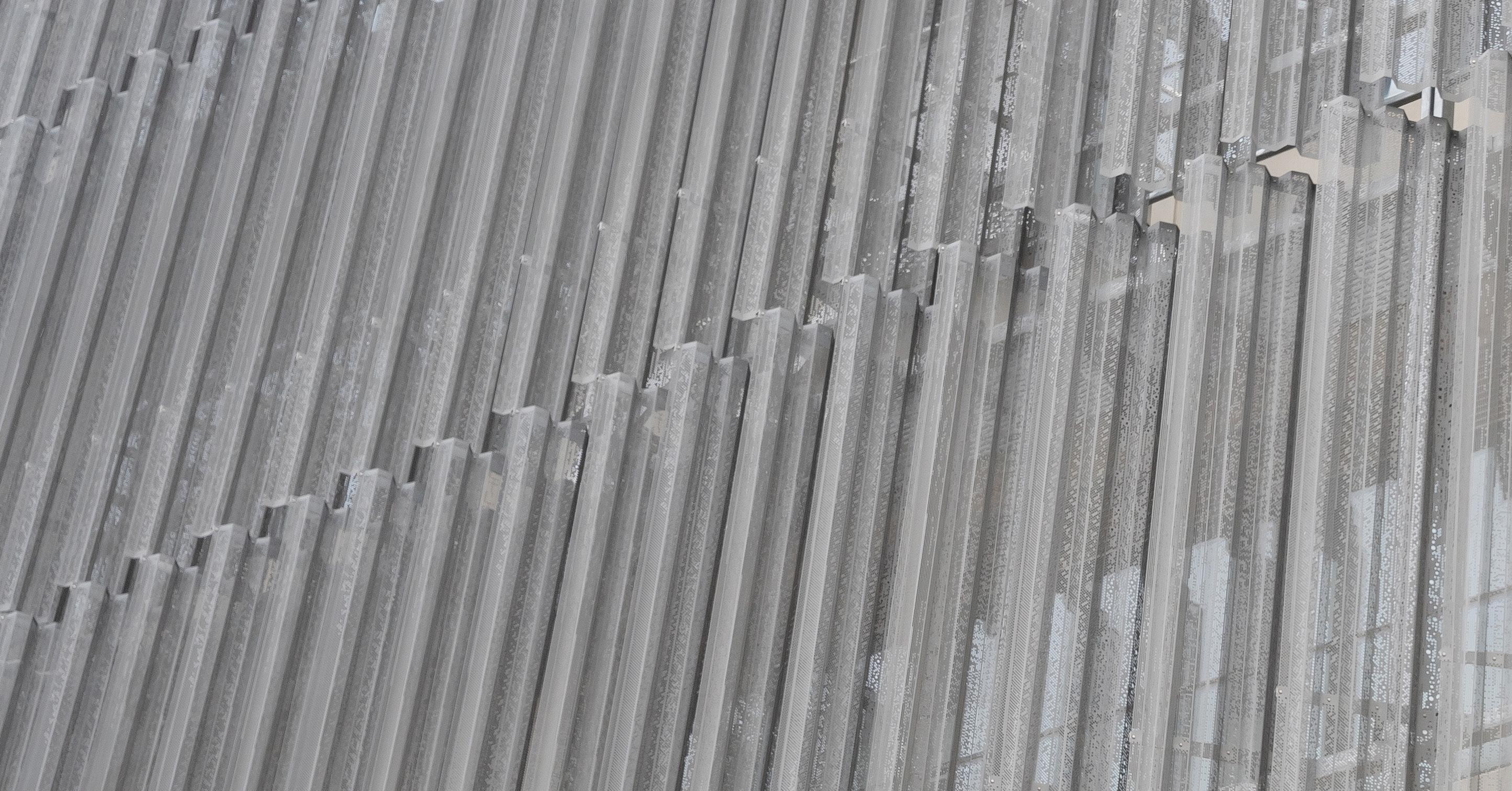
Rico: So tell me a bit about yourself—what are you currently studying? Any fun facts or hidden talents? A favourite campus area?
Richard: I would describe myself in five words as tenacious, intuitive, opportunistic, adaptive, and inquisitive. It probably varies in intensity every day but yeah that about sums it up. Currently I am undertaking a Bachelor of Science majoring in Data Science. I switched from engineering last semester, so it’s been pretty fun and challenging.
I don’t have any hidden talents to speak of unfortunately, but some hobbies I have that I do like to do in my free time would be sewing, because I alter my clothes myself and I am working on personal projects related to that. A fun fact about me—even though it is a bit embarrassing—is that I was featured on an interview on Channel 10’s The Project. It's up on YouTube if you search up my name.
[On favourite campus areas]: It’s quite hard to pick because despite being a STEM student, one of my main hobbies is appreciating really good design in every medium that it can be presented in. So, it’s either going to have to be the Melbourne School of Design area, or the New Student Precinct. They have the checklists of everything I like in a nice campus space:
good ambience, ample facilities, and lively activity. I also appreciate the cafes in these two areas because they fuel my mornings.
Being at a university that’s abundant with cultural diversity and a community of students coming from over 150 different nationalities, tell us a bit about your cultural background and nationality. How has your university experience been as an international student?
I’m Vietnamese, but having said that, I spent a majority of my childhood split between the U.S. and Vietnam, and in my teenage years Australia was also added into the mix. It’s odd because although I don’t fully identify with any one location, I feel like I’ve been afforded an opportunity to have unique cultural nuances from all around the world.
[On the international student experience]: There’s definitely ups and downs, but that’s just with anyone right? I’ve been really lucky to find friend groups and interests that help me develop my social network, but I feel like this is pretty hard for international students in general.
As you mentioned, developing a social network can be tough for international students. What are some tips or things you would recommend to help them overcome this?
A tip that I’d recommend to international students is to put yourself out there. Our university community is quite diverse, so whatever your background or
FEATURE
18
Photography by Zisis Zak Tsiouklas
interests, I’m sure there is a group out there for you. It may be very intimidating, but that initial push will allow you to enjoy uni life a lot more. You don’t have to wait for life to happen to you, you just need to make it happen yourself.
Being the President of UMSU International is a considerable responsibility, advocating for and representing the welfare and community of international students. What made you decide to go for the position?
I wouldn’t say I wanted to become president per se. Originally I was planning not to, because handling a STEM degree full-time and part-time work is already hard enough. However, seeing the impact of the outgoing President Sanskar Agarwal, I fully realized that my unique experiences and voice can have an impact on representing this diverse group of students and advocate for tangible improvements on issues that even I’ve personally dealt with before. So, I guess you could say I saw an opportunity to really uphold the beliefs that define me as a person, and represent my community to the best of my abilities.
Continuing on the topic of impact, what are you hoping to deliver to students through your position and the UMSU International team?
I think UMSU International’s impact can be very multifaceted. One of the key issues we will definitely coordinate on is the cost-of-living crisis, because international students have no governmental support that alleviates their financial struggles, as well as or-
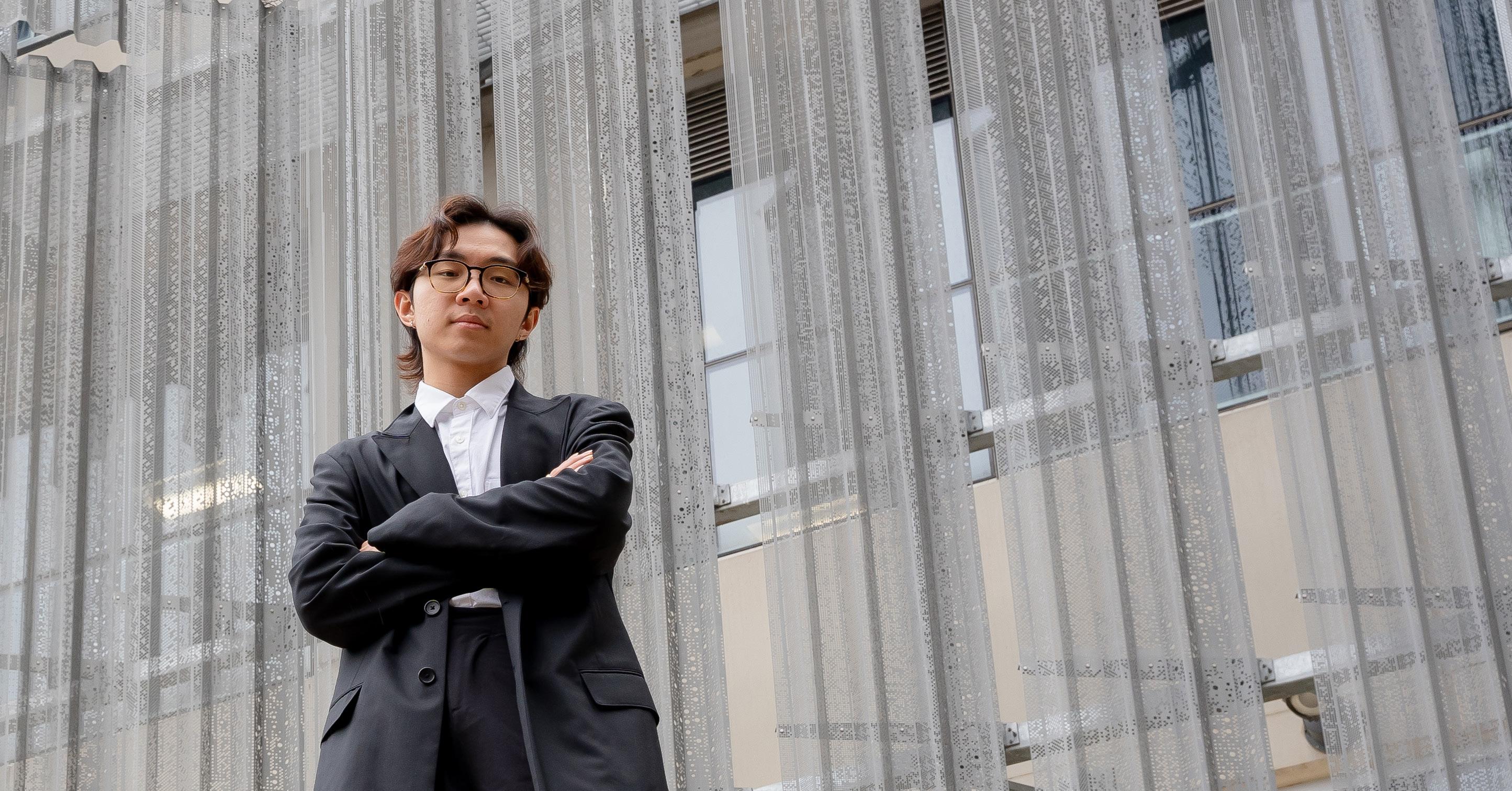
ganizational inefficiencies that make life harder for us. We aim to build atop of initiatives that we laid this past year such as the UMSU International Welfare Brekkie.
Another key issue is advocating for international graduate employability, because despite us typically putting in much more effort to land the same jobs, we’re automatically disqualified purely because some jobs are reserved for PR and Australian Citizens. In a hyper-connected world, it’s more important than ever to have diverse viewpoints and backgrounds to approach increasingly complex problems, so it’s really disappointing to see very outdated and static attitudes arise in this space.
What else is in store? Are there any big events planned? Where can we find or reach out to UMSU International?
I’ve been harping on about a lot of advocacy stuff, but we do have, as always, a plethora of fun and exciting events on the horizon very soon. I don’t want to spoil anything (to keep the element of surprise, of course) so please follow us on Instagram @umsuintl to stay up to date on all our upcoming events, big and small.
UMSU International is on Level 1 of the 168 Building, between the ERC and Arts and Cultural. We hold events very often so please do come through whenever you’re free. People can also stay up to date on our upcoming events on Instagram, we post very often leading up to all of our events and anything that may interest our international students.
FEATURE
19
The Normalisation of Unpaid Trials: How Melbourne’s Casual Job Market Exploits International Students

Shivani, 21, moved from India six months ago. In April, she was called in for her first casual job at a kebab joint on Flinders Street.
The marketing graduate was asked by the owner to do 12 hours of unpaid trial shifts before being potentially hired at $18 per hour—$3.38 below the minimum wage then.
“The minimum wage part of it, she asked me over and over again, ‘Did you read it clearly? Is that okay with you? If so, then show up’.”
According to the Fair Work Ombudsman, employees cannot be paid less than their applicable minimum wage ($23.23 per hour starting 1 July 2023), even if they agree to it.
Moreover, there are no trial shift rates and unpaid trials are unlawful where the job does not require specific skills or exceeds one shift.
But, laws are not keeping predatory employers in Melbourne from using both unpaid trials and low wages to extort free labour from international students—preying on their ignorance about Australian work rights and desperation for money amidst the cost-of-living crisis.
International students — an easy target
International students, “especially [those] who look new, innocent or desperate”, are often victims of wage theft, says Thai student Jaran.
He was offered a five-hour trial shift by the owner of a Japanese takeaway restaurant near Chinatown, at a pay rate of $20 an hour.
“I was desperate for the money. And I think he knew about that,” adds the 20-year-old.
After their trial shifts, both Shivani and Jaran were “ghosted” by their employers and when they went to the businesses to check, they were turned away.
“They made me do free work. It was pretty sad because I saw so many people interviewed and did not know how many were getting scammed,” says Shivani.
Jaran says he contacted Fair Work to report the wage theft, but was told “there wasn't enough evidence to build a case”.
“Because the text messages were just my information, giving it to him, you know, my text phone number, my bank details.”
Fears of joblessness, retribution silence students
Unlike Jaran, some international students are reluctant to report wage theft or leave their exploitative workplaces, lest they are unable to find other employment.
At an Australia Post outlet in the outer suburbs, Prateek experienced weeks of unpaid training and wage theft.
FEATURE
20
HarshitaRoy investigates how Melbourne's dodgy employers use trial shifts and unpaid training to exploit international students for free labour.
The management student works 24 hours a week as a casual for less than the minimum wage, but says he is not “foolish” for continuing with the job.
“It is difficult to find any other job, I made 50-60 applications... If I had a backup option, I would surely report it. But I do not... I would be completely unemployed.”
“It is better to have something than nothing.”
Others, like civil engineering student Li, worry that speaking out about wage theft will lead to retaliation from their former employers.
Until April this year, Li worked casually at a Chinese restaurant in Carlton for $15 per hour.
As he had limited experience, his boss told him he would not pay Li for his first trial shift because he did “things too slowly”.
Li says he was ridiculed for being the victim of workplace exploitation. His friends laughed at him for working for “such less money”.
“Those insulting me will say ‘Why don’t you practise your English and find a Western restaurant?’.”
“It seems to be a latent rule that Chinese owners might not pay you the legal wage and will exploit you.”
Li says he still fears “retribution” from his former employer if he reports the wage theft to Fair Work.
Afraid of reporting now? Take your time — up to six years.

Most cases of casual wage theft go unreported as international students like Li and Prateek either choose not to report or stick with their predatory employers.
However, if they decide to claim their stolen wages in the future, the law permits workers to take legal action up to six years after the underpayments occurred .
Naiyu Wang, a community organiser at the Migrant Workers Centre, which provides free and confidential legal support to migrants facing workplace issues, suggests keeping written evidence like payslips and using the Record My Hours app by Fair Work, which tracks workplace location and records the hours worked.
She says it serves as proof of employment in reporting cases of wage theft to Fair Work Ombudsman against employers, even years after alleged underpayments.
“Understanding your rights does not mean that you have to quit your job straight away, once you realise you are underpaid," said Wang.
"You have six years to report wage theft and get your money back.”
Note: Some names in this article have been changed to protect interviewees from retribution from their current or former employers.
FEATURE
Illustration by Weiting Chen 21
From Robodebt to a Royal Commission: How Did We Get Here?
The long-awaited final report of the Royal Commission into the Robodebt Scheme has been formally presented to the Governor-General. Prime Minister Anthony Albanese has branded it a "human tragedy" and said "it should have never happened, and it should never happen again." Undoubtedly, the final report will intensify scrutiny on the orchestrators of the scheme, legal complexities, and the government officials who were complicit.
The Robodebt program hinged on data integration between the Australian Taxation Office (ATO) and Services Australia (formerly the Department of Human Services), which administers Centrelink. Yet, implementing this data-driven initiative rapidly morphed into a bureaucratic nightmare.
Early conceptualisations relied on manual data matching, but the allure of automation took hold following the announcement of "welfare integrity measures" in the 2015-16 federal budget. These measures, aiming to streamline assessment processes and recoup historical debts, paved the way for a new digital transformation era. However, as with many grandiose plans, reality proved harsher than the initial vision.
The program's architects targeted social security payments like Newstart and Youth Allowance, subjecting recipients to a maelstrom of compliance requirements, but this also extended to other payments such as Austudy and the Disability Support Pension.

The Department of Human Services (DHS) bore the brunt of managing service delivery. At the same time,
policy responsibility rested with the Department of Social Services (DSS). This convoluted division of labour, combined with the fanfare surrounding the touted success of the program, set the stage for the calamity that unfolded.
From the outset, the cracks in the automated machinery became evident. Recipients found themselves entangled in a web of complicated processes, burdened with the onus of proof in the face of limited human interaction. Reports began to surface of incorrect debt calculations, with distressing allegations of debts from community members with severe disabilities and deceased individuals being assigned outstanding debts.
The question of who qualified as "vulnerable" within the scheme remained ambiguous, as inconsistent digital platforms and exclusionary practices plagued the program's implementation. Despite mounting concerns, the Department of Human Services insisted on the accuracy of its online compliance system, clinging to a narrative that was rapidly unravelling.
The Commonwealth Ombudsman's investigation in 2017 dealt a severe blow to the program’s credibility. It highlighted the program’s neglect of the human element and the undue burden placed on recipients for reporting, all while underlining the critical need for effective communication, engagement, and rigorous platform testing. The government’s rejection of these findings only fuelled public outrage and set the stage for legal battles that would expose other flaws.
FEATURE
Image modified from the original Entrance to Tuggeranong Services Australia service centre August 2022.jpg by Nick-D, licensed under CC BY-SA 4.0. 22
In the wake of the Royal Commission into the Robodebt Scheme, AlainNguyen takes a look at how Australia's welfare system went so very, very wrong.
In a watershed moment, the Federal Court ruled in 2019 that a recipient’s debt was "not validly made." The following year, a successful class action initiated by Gordon Legal delivered further unravelling of the scheme, securing compensation for over 400,000 affected individuals.
As public pressure intensified, the scheme's multiple facelifts failed to salvage its reputation. A 2021 Federal Court class action further lambasted the program as a "shameful chapter" and an egregious failure of public administration. Ministers and senior public servants faced harsh criticism for their complicity in a flawed system that relied on unreliable income averaging based on ATO data.
In the wake of the final report’s release, a range of recommendations emerged from the Royal Commission. Calls to review the structure of the social services portfolio, reassess the status of Services Australia as an entity, and enact comprehensive compliance policies reverberated throughout the halls of power.


The report's emphasis on clear definitions for exemptions, robust staff training, and more inclusive policy proposal processes underscored the need for sweeping reforms to prevent future debacles.
However, amidst the clamour of political manoeuvring, it is crucial not to lose sight of its effects on people, especially in the context of students. Burdened by the weight of soaring tuition fees and living costs, they have become unwitting casualties of a system that promised support but delivered turmoil.
The final report's findings expose the harsh reality students face—their mental health is compromised, and their social bonds are fraying under financial uncertainty. It lays bare the urgent need for universities to recalibrate their support systems.
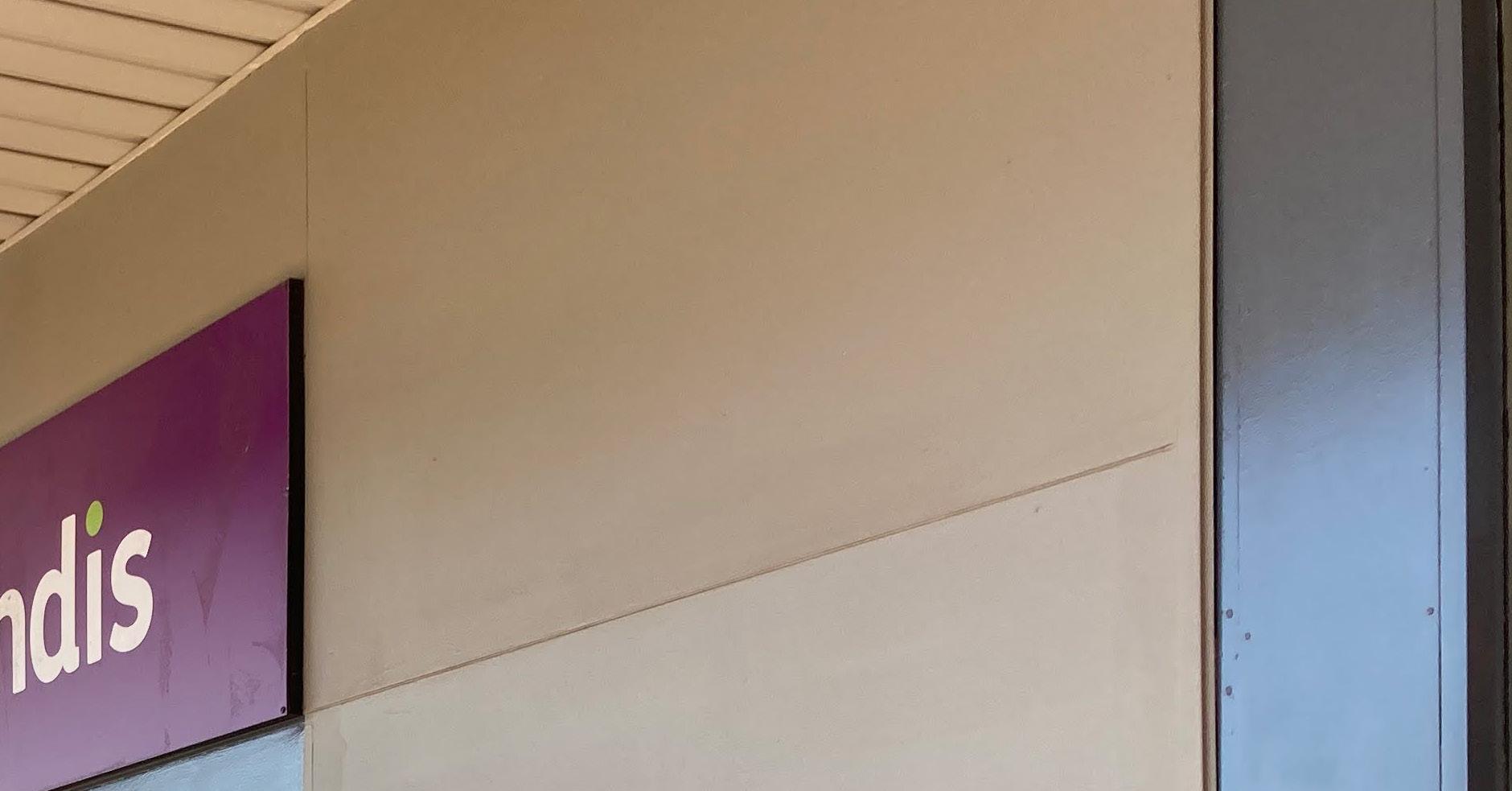
These institutions must recognise that affordable housing and comprehensive services are not mere luxuries, but essential components in fostering student well-being.
Likewise, the government must heed the clarion call and prioritise reforms that safeguard students’ financial stability and mental health.
The Robodebt scandal has shattered the illusion of the public service as a well-oiled bureaucracy, exposing the fault lines between policy decisions and their human impact. It is the responsibility of leaders to rise above rhetoric and chart a new course—one that prioritises fairness, transparency, and compassion.
Only then can we begin to heal the wounds inflicted by the Robodebt debacle, and rebuild a fairer system.
This article may be distressing for some readers. If you or anyone you know needs help:
Lifeline (24-hour Crisis Line): 131 114
MensLine Australia on 1300 789 978
Suicide Call Back Service on 1300 659 467
Beyond Blue on 1300 224 636
Headspace on 1800 650 890
ReachOut at au.reachout.com
FEATURE
Original source: https://commons.wikimedia.org/wiki/File:Entrance_to_Tuggeranong_Services_Australia_service_centre_August_2022.jpg 23
NOTICE is hereby given of the 2023 University of Melburne Student Union (UMSU) annual student elections. Positions to be filled include (i) Officebearers, Committes and the Students’ Council, (ii) delegates to the National Union of Students, and (iii) several vacant positions to be filled through by-election for the remainder of 2023. This is your chance to help shape the future of the Student Union.
The formal notice of the election, including a full list ofpositions, canbe found at the Election Website (see link below). The website also contains a copy of the Electoral Regulations, under which the elections are governed.
Information for voters
All students are eligible to vote. The election will be held online on the 4th–8th September You’ll be sent an email with instructions on how to vote, and we’ll have polling help points at Parkville, Southbank and Burnley during the week.
election guide:
The Farrago election guide will contain policy statements from candidates and tickets, and be available online and at polling help points.
Note students who are on leave during election week, or who are not enrolled in higher education award course, are not generally eligible to vote: contact us if you’re unsure.
Information for candidates
Nominations were open from Monday 24th July to 12noon, Friday 11th August 2023. No late nominations can be accepted. Information for candidates including forms and deadlines can be found on the Election Website.
Where to learn more
The election is run by an independent Returning Officer. More information, including contact details for the Returning Officer, can be found on the Election Website, below.
umsu.unimelb.edu.au/elections
returningofficer@union.unimelb.edu.au
of election election website
Notice
Returning O�cer Stephen Luntz Above Quota Elections Pty Ltd
UMSU 24
SATIRE-IN-BRIEF
Written by the Satire Team
Girlfriend Who Participates in “Beige Flag” Trend 100% Knows She’s Showing Off a Green Flag.
 Written by Charlotte Handley
Written by Charlotte Handley
In a viral TikTok, the 24-year-old describes how her boyfriend subtly takes photos of things she likes while out shopping, to remind him of what to buy her later. Though the creator insists it is a neutral thing to do, the comment section appears to unanimously agree that it is the greenest of flags. Farrago spoke to one particularly salty commenter, who went as far as saying the flag was “fluorescent, glow in the dark green.” “If you’re locked down and in love while the rest of us are struggling through single-girl-winter, just say that.”
Latest Billionaire with a Death Wish Launches Rocket run by Nintendo Wii into Space
Written by Alexia Shaw
Sir Bartholomew Rexington, 54, will lock himself inside a metal Pringles can alongside four other members of the one percent in order to go to space.
Run by the same developers that brought you Nintendogs, the rocket has been deemed “a death trap” by every engineer on earth—and James Cameron.
“We’re gonna chuck some Mentos into these Coke bottles to generate our thrust, and then we’ve got this Kmart Anko air purifier to help with oxygen levels.” says Rexington. “I know what I’m doing. I’ve watched Interstellar twice.”
The rocket is due to malfunction—I mean, launch, in one week’s time.
Melbourne Influencer Shares Her Tips For Getting Through Winter Stuck at Home.
Written by Charlotte Handley
In an exclusive interview lined up by Farrago, the 22-yearold told us about what the upcoming break will look like for her.
“All my friends are holidaying in Greece during the university break. And I’m not jealous at all. I mean, they’re missing out on Melbourne during winter. Plus, we have our own Eiffel Tower right here: the Arts Centre spire!”
When asked how she really felt, we couldn’t help but notice her eye twitch before her face returned to normal.
Woman Sells All of Her Organs for a G-Reserve Taylor Swift Ticket
Written by Alexia Shaw
Chelsea Baggins, 22, was one of many unlucky Swifties who missed out on tickets to the highly anticipated Eras Tour. Fortunately, for the low price of $100,000, her tax file number, and all of her organs, Miss Baggins was able to acquire a resale G-Reserve ticket off the internet.
Unfortunately, Ms Baggins will be unable to see the concert as she no longer has eyes, nor will she be able to sing along without lungs, but hey—at least she’s in the stadium.

Gilmore Girls to Reshoot all Yale Scenes at UniMelb
Written by Alexia Shaw
Eagle-eyed students may have recently spotted Alexis Bledel on our Parkville campus, sporting Sony headphones and a Crumpler bag. As The University of Melbourne is now ranked the 14th-best university in the world (while Yale sits at a pathetic 16th), Gilmore Girls showrunner Amy Sherman-Palladino felt it was necessary to re-film Rory Gilmore’s college years at an institution with more “prestige”.
“The show is quite frankly embarrassing in its current form,” said Amy. “We wanted to show Rory as a highly intelligent, successful young woman. That means she should be downing pints at the Clyde, not studying in her dorm room. We’re just glad we realised our mistake.”
SATIRE
Illustration by Ashlea Banon
25
Satire in the Stars: August 2023 Horoscopes
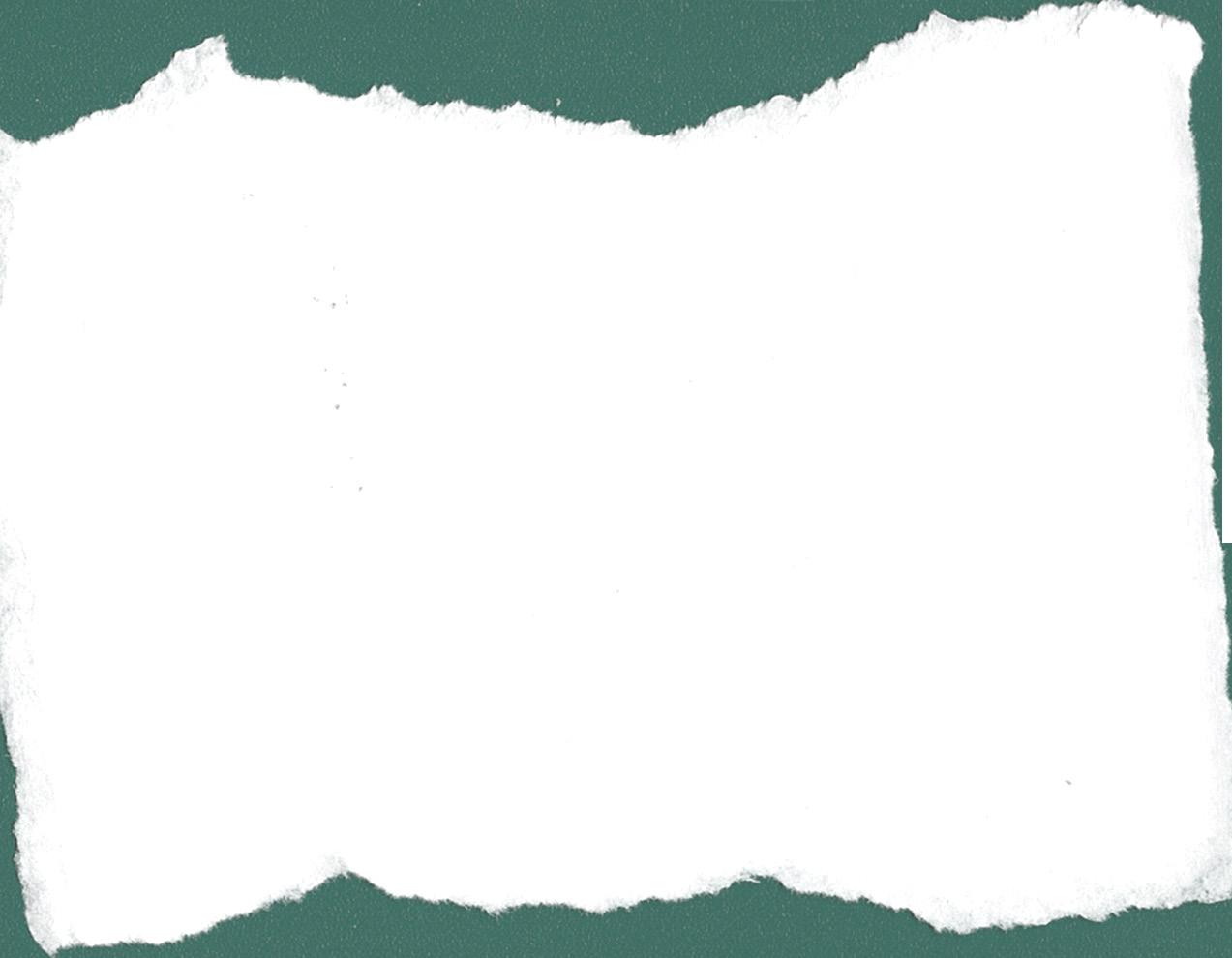
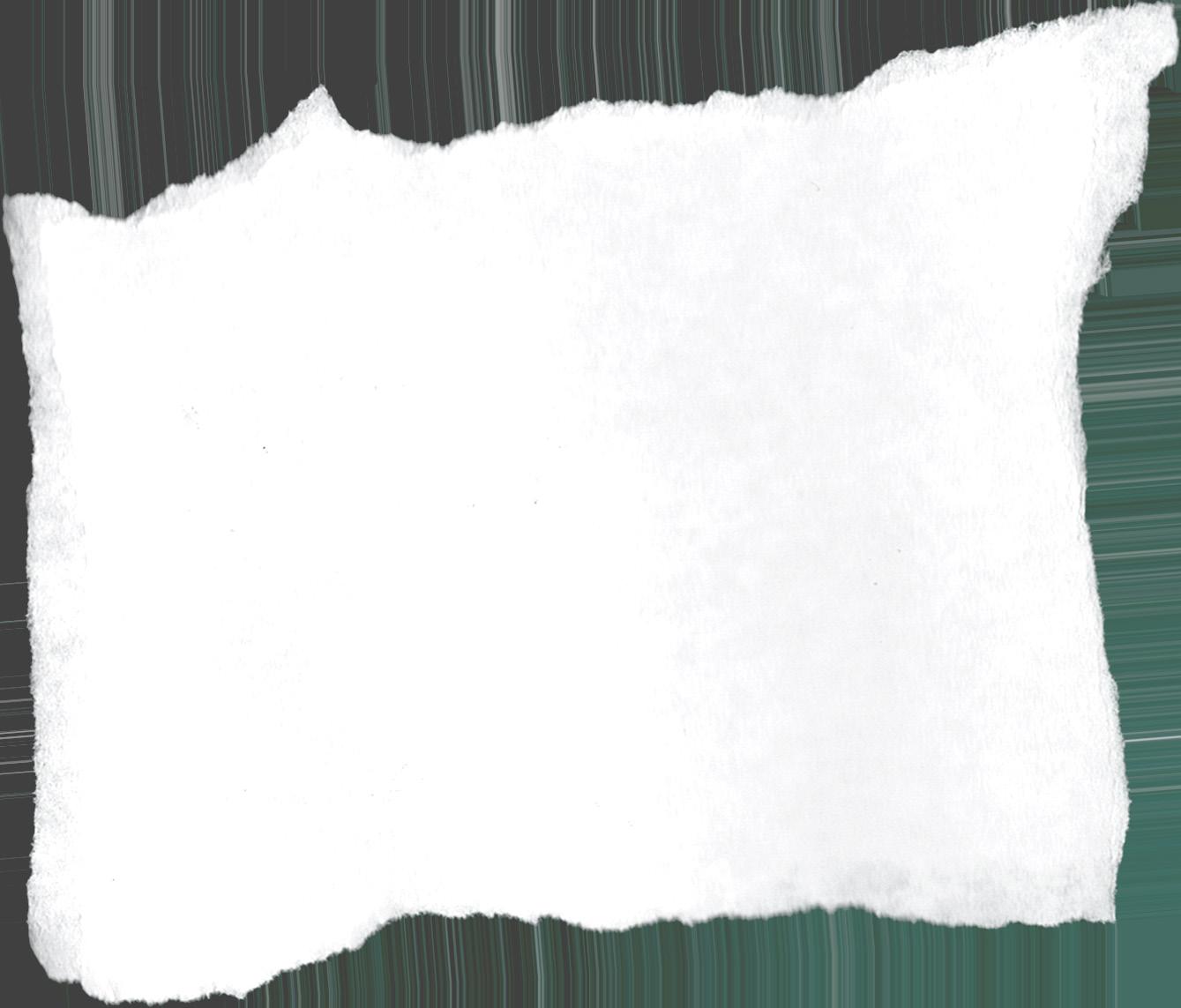 Written by Veronica Kwong
Written by Veronica Kwong
Aries: March 21 - April 19
With the north node entering your sign mid July (where it will remain until January 2025) you’re going to be making all your problems everyone else’s problem, even more than usual. In other words, you’ll be continuing your typical, childish Aries behaviour. If you want to finally be mature, use this time for growth and reflection on your impulsive and irrational behaviours. For once. Don’t do something stupid. Instead, use the north node energy to work harder and smarter, cut out anything or anyone that gets in the way of your goals this August.



Gemini: May 21 - June 20
Since you are so indecisive and can never make up any opinions yourself, let this horoscope be a stepby-step guide for how you should live your life. In August it would be best for you to stop talking so much. I understand this must be hard for a sign ruled by Mercury, planet of communication, but not discussing every single little detail of your life with your barista will do everyone a big favour. Be particularly aware of this during the Mercury retrograde in Virgo that is to occur towards the end of the month (it might make you extra annoying and chatty).
Leo: July 23 - August 22
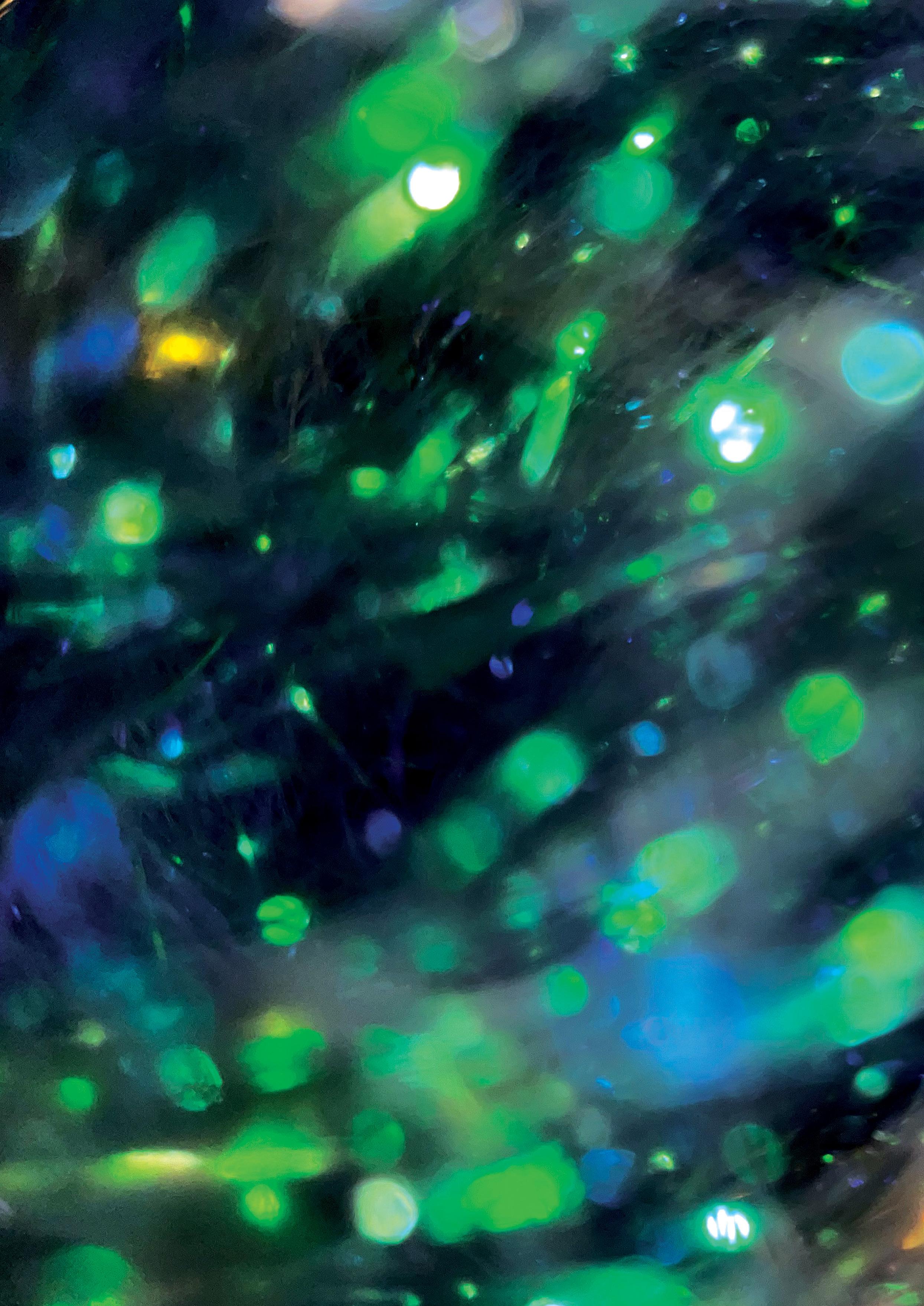
With both Venus and the Sun in your sign, your life will improve immediately. You will meet the love of your life and you will achieve all your goals and dreams. You Leo narcissists know you are the best, so you will receive only the best treatment this month. This is your sign to buy that extra iced coffee and treat yourself this month, because you are the best sign and you deserve it. The New Moon in Leo on the 16th of August will also be a great time for you to finally get out of bed and start the projects you’ve been planning on doing for months now.
Taurus: April 20 - May 20
Watch out for the venus retrograde. This might make you even lazier and more stubborn than usual as your ruling sign appears to move backwards. With Venus retrograde in Leo squaring Uranus this Winter your love life might become even more confusing and intense. You will be experiencing romantic love in extremes. Either you will find the love of your life, or you will break up and lose the person you love most. Just make sure you don’t reconnect with any exes. Maybe if you finally listen to other people’s ideas instead of always thinking you are right, you can avoid this.
Cancer: June 21 - July 22
Cancers are really misunderstood. Just because they are water signs does not mean Cancers are not crybabies. But with Mercury in your sign until the middle of September, watch out for unexpected emotional outbursts. You need to remember that cancer is represented by the crab, an animal with a strong, defensive shell. Don’t always let people see how soft you are inside, especially with Venus going retrograde. You may want to guard your heart and be wary of those closest to you.
Virgo: August 23 - September 22
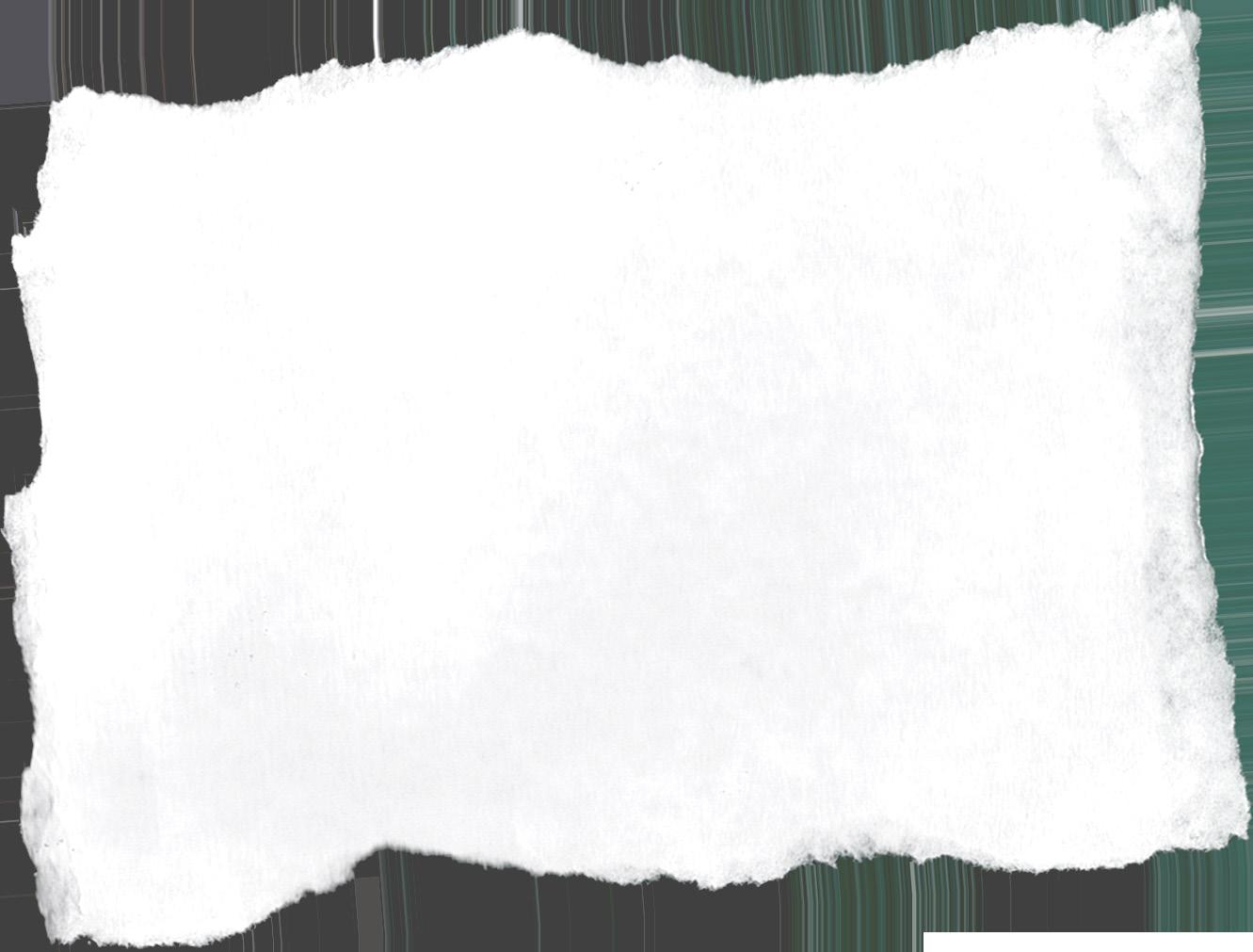
With Mercury in your sign opposing Saturn in Pisces, get ready for some confusion and misunderstandings. Even though you Virgos are stereotyped as organisational freaks, we all know this isn’t true. This month it will help you to embrace your inner chaos. Learn to live with it. Just make sure you don’t let your ex back into your life again, as people from your past might try to resurface during this month. The last quarter moon in Taurus on the 8th of this month will really help you channel your inner Marie Kondo and let go off everything and everyone that isn’t serving you, essentially cleaning up your life.

SATIRE
Content
Warning: Expletive language
26
Libra: September 23 - October 22


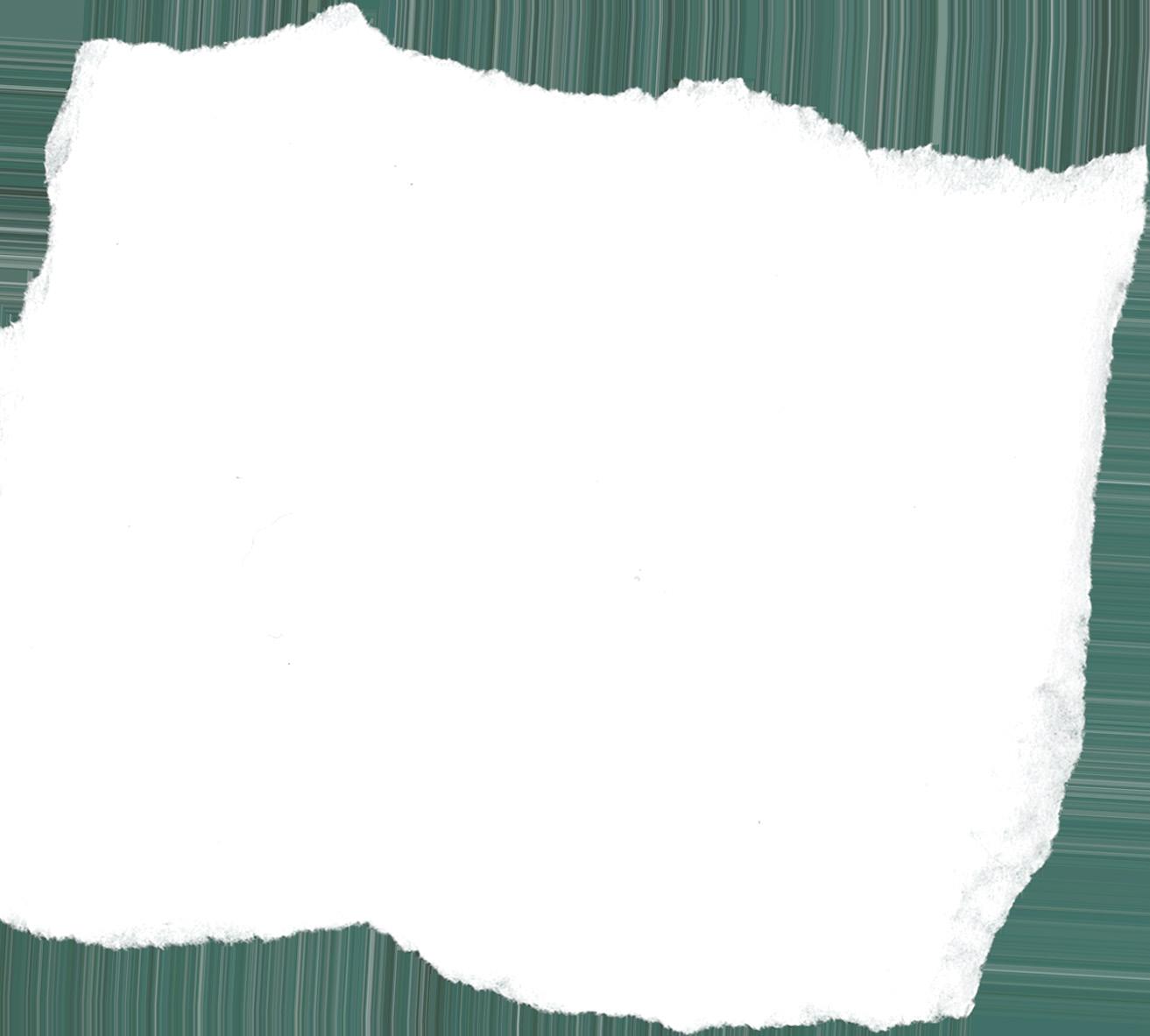
Like Taurus, you will also need to watch out for the venus retrograde. Core beliefs of a Libra may come into question: Do these jeans really look good on me? Is this really my shade of blush? Am I being enough of a bitch? All key and absolutely not superficial or shallow cornerstones of your little Libra personality will be put under the microscope. Check yourself for even more passive aggressive and spiteful behaviour (classic Libra) when Mars enters your sign on the 27th of August.
Sagittarius: November 22 - December 21

Now that you’ve come back from Europe after running away from all your problems (as usual) you’re going to have to start dealing with them. You can’t keep travelling or moving cities to avoid the deep rooted commitment issues which plague and eventually ruin every meaningful and intimate relationship you have built. Just because you are optimistic about starting a new life, does not mean you don’t have to fix your old one. Unpack your suitcase and go to therapy.
Scorpio: October 23 - November 21
With Jupiter in Taurus no one buys your ‘mysterious’ and ‘broken’ persona. Stop telling everyone you only drink black coffee and hiding the most uninteresting facts about yourself. No one cares that you actually drink cappuccinos and listen to Jazz. With Venus in Leo you should allow yourself to be true to who you are and embrace the beauty in your life. As a fixed sign this is one of the only moments of peace you will get before your ruling sign, Mars, will sextile Chiron at the end of August. Good luck!
Capricorn: December 22 - January
Aquarius: January 20 - February 18

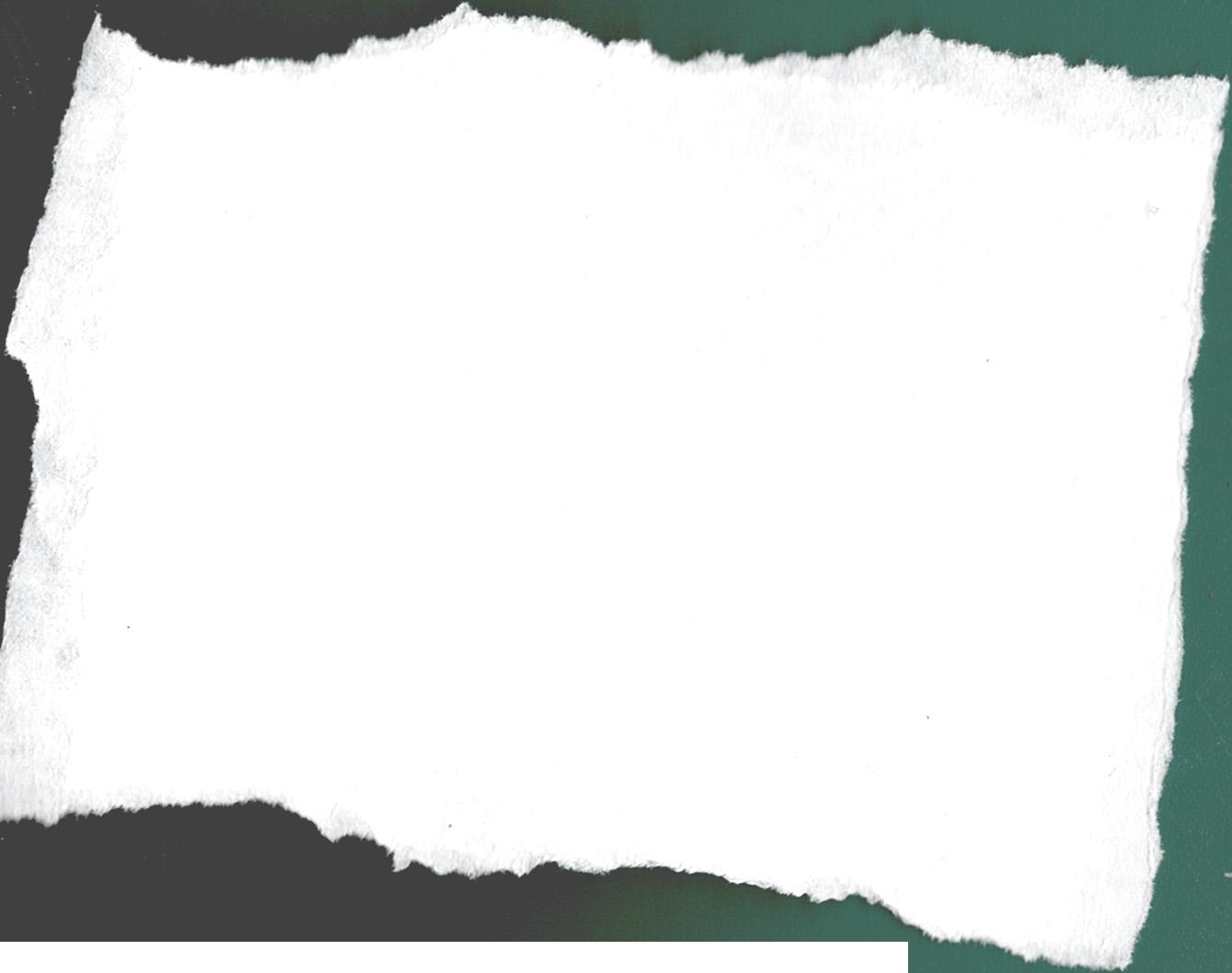
Being a fixed sign, Venus in Leo is helping your love life and especially your finances. This is your sign to work even harder to achieve your goals, but stop trying so hard to be ‘quirky’ and ‘different’. It’s not working and you are embarrassing yourself. Just because you don’t listen to Taylor Swift doesn’t mean that you are better than everyone. Once you start embracing the fact that you are allowed to be basic and put on ‘Blank Space’ when you’re on aux, money will flow into your life like never before.
With Mars in Virgo trine Jupiter in Taurus on the first day of the month, watch out for even more stubborn behaviour than usual, as the earth signs are illuminated during this time. This will be amplified by Mercury in Virgo opposing your ruling planet, Saturn in Pisces. Like Taurus, you need to listen to other people and stop trying to be right all the time. This will be an even bigger challenge for you than usual with all the earth energy around the start of the month, but for the sake of all your friends, please at least try.

19
Pisces: February 19 - March 20
You may find yourself working harder this month, with Saturn in your sign. As the planet of concentra- tion, limitations and tenacity, Saturn will provide you with hardships that force you to do more dirty work. This might be hard for your sign as your head is usual- ly stuck in the clouds. As a water sign, you’re prone to daydreaming and caring more about the subcon- scious than what is actually happening. Hopefully Sat- urn’s shift into your sign will change that this month.
SATIRE
27
Illustration by Ashlea Banon

COLUMN 28

COLUMN
29
'About in Melbourne' by Meg Bonnes
Our in-built fortune telling system
Written by Wilson Cheng
You ever know exactly what someone is about to say? Not like a guess, but like you have physically experienced the situation already. But you couldn’t have, right?
“Deja vu” describes this false, unnatural and overwhelming familiarity with a situation or place.
Sometimes this feeling originates from dreams – prophetic dreams – where nothing special ever seems to happen. The dream is forgotten. And yet when the time comes, we are transported back into the dream, but with the blurriness replaced with the sharp edge of realism. You knew the people would be sitting like that. You know exactly what they are about to say, and then they say it. They never seem to believe you, but who would? You’re a prophet.
Sometimes there is no dreaming involved, and all we feel is the unwarranted sense of familiarity. It’s so overwhelmingly strong that we wade through our memories in search of a memory that’s never there. These moments of such hyper-awareness – of the surroundings and of our own consciousness – are so surreal they can leave us sometimes in awe, sometimes with a sense of impending doom. Your perspective zeroes in like a camera lens on the scene in front of you, your peripheral vision disappears, your mind detaches from your brain, your body autopilots and you are outside your body.
Even such a quotidian act as walking to university can make us feel a spontaneous familiarity so strong it can take our breath away. Familiarity alone would be no problem, but it is the intensity that bedazzles us.
Research for both deja vu (already seen) and deja reve (already dreamed) are both very limited, considering they occur randomly and in short bursts. Despite many theories, the cause of deja vu is still unknown.
Maybe it’s supernatural.
Deja vu is life telling us that we’re on the right path. We are where we’re supposed to be. Our future selves have been where we are, and that’s why it all feels so familiar. That’s how we knew the words before they were said, that’s why we felt like we were connecting with something transcendental. A touch of deja vu is as weird as it is heartening. In the same way astrology and a number of other unproven beliefs provide a way for us to self-soothe and find more direction in an overwhelming world, deja vu can relieve rather than discomfort and confuse.

Or maybe, deja vu occurs when we experience something already experienced in an alternate reality. We do not occupy the singular universe; in fact, every decision made makes a par-
allel universe branch off where the other decision was made. Then we feel like we have been somewhere because our alternate self has been there in their universe. We are gifted “a momentary glimpse to the other side”. We’ll never know how different their lives are to ours, or use their powers to save the multiverse, but at least we’re connected somehow.
Maybe, deja vu occurs when our brain accidentally stores a short-term memory as a long-term memory. Then the present situation gives the sensation of recalling a long-term memory. Or perhaps the present moment is perceived as a memory because the part of the brain that stores memories, and the part of the brain that recalls memories are both firing at the same time.
While we can quickly dismiss deja vu as a trick of the mind, those suffering from deja vecu (already lived) fail to make such discernments. They sometimes stop watching TV and reading the newspaper, because they know what is about to happen. One such deja vu sufferer was described as “someone who felt as though everything in his life had happened before”.
Maybe our brain makes incomplete, vague memories from things seen in dreams, things seen in our peripherals, and things seen while distracted. When a situation is similar enough, our brain fills the holes in and assures us we have experienced it before.
Maybe, deja vu results from a mini seizure in the temporal lobe, corroborated by testimonies of people with temporal lobe epilepsy experiencing deja vu shortly before having a seizure, or losing consciousness. For them, deja vu isn’t a fleeting sensation, it’s intense and scary. It’s frequent, it’s nauseating, it’s disorienting, it’s panic-inducing. One person with temporal lobe epilepsy describes her actual experience of deja vu as feeling like she “can remember everything that’s ever happened, and everything that will ever happen, and it’s all tied together, and there’s this, like, extreme sense of oneness with the universe, which is also quite sickening”.
But maybe it’s just a glitch in the matrix? Maybe you really can tell the future? Maybe one of your eyes saw something before your other eye, or one ear heard something before the other ear?
But you couldn’t have, right?
NON-FIC
Illustration by Ruisi Wang
30
Content warnings: References to death; descriptions of insects; descriptions of self-harm

There Is Something In The Water Meru
Written by Donna Ferdinando
I think I must look hollow in the shifting light blaring from the screen of my laptop. The sweltering air has led to a window flung wide open and the hopes of a breeze to slither in from the stolid night outside. It's monsoon season and, in the attempts to alleviate the humidity that lies like a warm, damp towel on the back of my neck, I've killed the lights. A woman with dark hair is droning softly from my screen and her drone bounces off and crawls up the walls until it is all I can hear in the shifting air. From the window comes a slight breeze and it prickles against my shoulder. I pull my blanket tighter around me and hope that somewhere in its thin, woven, crumbling fabric I can draw a modicum of warmth.
It's the night of 28 September, to be precise, and the dark-haired woman’s speech is growing quicker and quicker and I don't think she’s taking a breath, to be quite frank, and her fingers are clawing through her hair and I think it must hurt the way she is tugging at it and I wonder at how she hasn't ripped the chunks straight out of her scalp—skin and all. The clip cuts just as her eyes begin to roll back into her head and the droning is replaced by a male voice that explains that the woman (her name evades) was later hospitalised in an asylum after her family reported sweeping out a veritable pile of dead cockroaches and moths from under her bed. A picture pops up and the woman does not have dark hair at all but a wispy, mousy, blunt, brown bob cut. She's got crow’s feet in the corners of her eyes. Or are they smile lines? She looks like the type of person who smiled a lot and I think that the narrator is missing an important part of the story because the woman looks like my mother does in a warm woollen sweater and gentle, caressing hands calloused from hard labour. People do not go mad from nothing—and what a cruel word ‘mad’ is, so isolating and othering—and I do not like what the insects imply that she had simply let them rot under her bed or, god forbid, she had taken to eating them for as the narrator states only their exoskeletons had remained as if decay and being unable to clean one's room aren't universally common occurrences.
Ah, and there it is. Almost said as a side note, an addendum, a miscellaneous thought thrown out into the wind as if it were of no consequence at all. Her son had died. Horrifically. Rode his motorcycle in the dead of winter when the ice coating the road is vicious and barely visible to the air. Skidded straight off the road into the fence of a neighbouring farm, rousing the livestock in the process. The fence itself would not have been dangerous had it not being made of rusted poles and barbed wire. When they had found him he had been more body than man. His mother, the mousy-haired woman had had only him and he only her and of course she cried and of course she screamed and sobbed and yelled and punched and ripped and slapped and then finally sat quietly in a black dress and black gloves while people barged into her little home that she had forged and expected her to give them the appropriate response, the appropriate gesture, the appropriate persona to their condolences. As if grief was a part to be played, a costume to be worn. I would have snapped too, I think.
It's monsoon season and when it's about to rain the meru rise from the earth and take flight. That's what my mother told me. They use their frail wings to carry themselves to the nearest source of light and cling to it as their wings fall to the floor and then they do too, eventually struggling among the remnants of their flight. I click pause and turn on the lights. I leave my room for seven minutes, maybe eight. And when I return, they are clinging and swirling around the translucent shades of my overhead lights. I kill the lights again and in the silence I can hear their buzz quieten and soft pattering upon the floor. If I step out of my bed now and do a little walk around, their little bodies would shatter under my feet and maybe in a few days only their exoskeletons would remain, whether through decay or the sadistic machinations of an army of ants. And I wonder and ponder, if
COLUMN
Illustration by Weiting Chen
31
The Unauthorised, Unorthodox, Unofficial Guide to Writing a Novel Under the Age of Twenty
How not to write a novel in 24 hours
 Written by Claire Le Blond
Written by Claire Le Blond
A subjectively long time ago, this edition of the column was intended to be a chronicle of an all-nighter on the fifth floor of Arts West. It was a plan concocted by myself and a dear friend, who shall remain nameless for dramatic effect even though people who have the misfortune of knowing me will almost immediately be able to guess who it is. Due to the glory of adulthood and timing, we never pulled that all-nighter. It is unlikely we ever will. To compensate, I offer a hypothetical chronicle of that all-nighter, how it might have or could have happened in the alternate versions of ourselves that we dare not reconcile with.
Fifth floor Arts West. A flask of boiling hot water, at least six packs of instant, the rich warm aroma of cheap powdered coffee sitting on the tables. Uneven visuals, lights flickering on and off, as is custom at that time of night in a strictly environmentally conscious building. Most likely a frostier season, the cold would lurk, icy tendrils snaking across the carpeted floors to the wheels of our chairs and then straight into our hands as the pens against our finger callouses quiver on bleached parchment paper. I’d like to think that this version of myself would have been practical enough to bring along a warm blanket; however, considering my compulsive dedication to doing everything the hard way, this is unlikely. We would have spent the time writing. Or talking about writing. Most likely the latter. I can guarantee my friend would have fallen asleep before me. I can also guarantee I would have started dozing off around two am. I can’t guarantee that we would have woken up before the sunrise, but I like to think it’s possible.
It would have been maybe half past five or closer to six. I would have set an alarm on my phone. Snooze. Ten minutes pass. Ring! Snooze. Ring, ring and ring again, glorious god. The phone beckons in time with the sun. We would pray the Melbourne sky was in a generous mood. And as a reward for our faith, we would have watched the sunrise. This humble sunrise, stealthy rays slipping slowly through the grey-black fabric of the night. This is the sunrise of the other versions of ourselves, potentially in another universe, potentially in a universe that doesn’t exist at all, or perhaps in the universe that only exists beneath my fingers on the keyboard, black patterns of clicks and back spaces sprawled over a white valley where colours come alive to every sense but visual.
I understand very little about multiverse theories. Reflecting on the concept that there’s another me, or several or thousands fills me with a significant level of incomparable existential grief and morbid curiosity. I can barely cope with one me. What would I even do with another one? I am aware that the multiverse is equally possible as it is impossible. I know for a subjective sense of certainty there’s little way of proving it. To make matters better, I heavily dislike time travel plots that often come hand in hand with these ideas. To me, as a writer, time travel is a lazy way of writing oneself out of the science (looking at you Endgame). It’s fiction anyways, why not be creative? From another perspective consider the now Oscar-Winning film Everything Everywhere All at Once. The Daniels use the multiverse as a metaphor and a tangible plot device. The multiverse isn’t simply a fantastical tool for endless spin-offs nor a matter of scientific wonder; at the end of the day, it is a story. A story about mothers and daughters, generational trauma, cultural differences and optimistic nihilism. Even with the multiverse, the story persists.
Writers, in their own way, are one of the forces that keep stories persisting. Like multiverse theory, there is always another story, another version, another draft. Whether it be on a backup disk that may or may not have been left behind on a desk a ten-hour drive away or curled up in the messy spirals of a well-loved leather journal that tries its best not to grow mould, there is always another story.
Thousands upon thousands of universes live inside the head of a writer. You would think that they’re a little squashed in there, mulling about in the confines of the id. Shelved side by side, on top of each other, blending, blurring, blotted between the lines, everything, everywhere all there at once.
For all it’s worth, to be a writer, is to be the keeper of your own quiet multiverse.
Speaking of different versions of ourselves, for full disclaimer I am no longer under the age of 20! Huzzah! Might have to change the column title now, oopsie doopsies.
COLUMN
32
Illustration by Nina Hughes
The House as a Collection of Things
Written by Kien-Ling Liem
When you have a house, and the house has been yours for years, and you can see which path you most frequently took to the living room in the indents of the carpet, and the hole in the wall that you say you’ll fix but you never do; I miss having a home like that. A home where if you wanted something as random as a stapler or clothespins or baking soda, you would just ask your mom, the librarian of the house, and she would direct you to the exact aisle of what you were looking for, and even in alphabetical order. In my house now, I do not have a stapler or clothespins or baking soda because I never thought to get those things in the first place. I have not lived here long enough to be a house collector, and I am constantly moving, nothing settled, nothing permanent.
A home is a collection of life clutter. A home is one big memory.
When you go house shopping, or any kind of shopping, in fact, you are buying things that you think you’ll need: clothes hangers, dish soap, an extension cable, a lamp, a bin, plates, mugs for morning tea, kitchen scissors, craft scissors, a bed, a coffee table, a television, soap, a first aid kit, to pay for internet, sponges, a mirror, a charger and glue. And you do need all these things. But what about the things you don’t realise you need? Like a tape measure, and batteries, sandpaper, aloe vera gel and lollipop sticks for when you feel crafty or when you want to make ice lollies.
A home that is yours has many items of collection and memorabilia collected over the years. Some call it hoarding. Some say it is like a museum, like putting yourself on display. Most would not invite strangers into their home, because it’s a place of privacy and vulnerability and exposure.
A home truly lived in is a home with layers.
A home truly lived in has a sense of permanence, and when you live away from home nothing is ever really permanent. Accommodations are never really yours, and you know you’ll move out in a year or two anyway. Things are always moving; change is constant; a life interrupted.
But what makes something yours? Why is this your house, your room? Is it the money you’ve exchanged to own it? The key you have to insert into the apartment door? Put a few posters up and it's yours. Spread a little bit of yourself across the walls, blemish your essence into the photos your put up, then maybe it becomes yours just a little more. Live there for six months, a year, then another, then the room is yours, the house is yours—a sense of permanence requires time. Permanence connotes forever, an endless time, something unchangeable and undying, and a home cannot be yours forever, so, just for now, let those four walls be yours momentarily. Build your foundation there, where you will put up a new semester planner every six months, where you will watch the seasons change from your window and dread the day you’ll have to use the heater, where you will continuously stress about essays to write and word counts to fill, where you will sit on your bed with your roommate and analyse gossip like you’re women in STEM, where you will fall in love, fall out of love, where you will cry and laugh and dance and change, where you will frame photos and put them up and pretend like you’re crystallising time, a little to the left, up a bit, now hold it still there, and there it is, a snapshot of time, a memory made, a sense of permanence instilled into the house.
A layer of permanence and belonging laid down.
What could the next layer be?

A collection of endless pens you don’t need, An instrument you don’t play anymore, Clothes you’ve outgrown, Clothes you’ve grown into, Magnets on a fridge, a to-do list from February but it’s now June, At least one childhood photo,
And you. All versions of you. The version of you when you first stepped into the empty house, walls barren and pale. The version of you that felt fulfilled after your first grocery run and filled the vacant fridge. The version of you that came home after a couple drinks and left a mess in the kitchen, the version of you that came home after falling in love, that came home heartbroken, the version of you that had piercings, that always wanted to be out on Friday nights but now found comfort in their home.
The house serves as a collection of things, as a collection of you.
Have you ever had a house-warming party before? It’s a funny phrase: H-O-U-S-E W-A-R-M-I-N-G. Come into my home, have a glass of wine and look at how I’ve put up posters of my hometown and arranged these lilies. Come into my house and warm it with your presence.
COLUMN
33
Illustration by Meg Bonnes
Imagining a matriarchal world order: Are women the key to world peace?
Written by Ola Wallis
Violence, war, aggression, threats, domination. These are what shape our international climate.
However, feminist political theory undermines the central assumptions of traditional, often Western male propagated theories that “violence is regrettable but endemic”, and inherently part of human nature (Burchill, 2005). This old school idea about international politics forms the basis of how we, Australians, view violence and war; something considered unfortunate but ultimately normal. When it comes down to it, peace seems largely impossible to achieve through this lens. Instead, feminism proposes the notion that patriarchy as a power structure normalises violence, domination and hegemony. Feminism denaturalises the idea that political systems need to inherently be maintained by force. The patriarchy is seen by feminist theorists as a “metanarrative of domination that makes all other forms of domination possible” (Wilmer, 2015). War can be seen as an expression of dominance and control enabled through aggressive masculine norms under the patriarchal system. Essentially, patriarchal societies reward and normalise masculine hostility and dominance on such a basic level of everyday life that these traits trickle into the very fabric of our international political system and the ways in which disputes are resolved.
But what if all of this was unlearned, from the ground up?
Let’s take a look at the matriarchal societies of the world.
One way of reimagining a completely different world order is to consider how things would look without a patriarchal system. The logical replacement appears to be a matriarchal one, but how would this look, and is it even possible?
What is a matriarchal system, to start with? Well, it’s not just female domination.
Matriarchal systems are organised on the basis of gender equality, where women hold power and authority in society as well as men. They are systems where peace and femininity are chiefly respected, over dominance and hegemonic masculinity.
What could this look like? Well, taking away the masculine ide-
als of aggression and domination could force us to look at nature as not something to be tamed and moulded to our will by human machinery, but a system to nurture that we are just one part of.
Examples of matriarchal systems have existed for hundreds of years in human societies. Past North-American Indigenous communities are said to be “non-patriarchal” and run by a “Clan Mother”, as well as being constructed around an understanding that all living beings are interconnected and highly “sacred” (Wilmer, 2015). This deep respect for all life was fundamental to these female-led tribes, resulting in a general contempt and lack of necessity for violence, and instead, a culture based on peaceful negotiation and harmony.
Looking towards China, the existing Mosuo tribe is led by female leaders, and property is passed down by female lineage. Here, violence, particularly against women, is not tolerated.
“It’s not allowed to hit a woman in our culture,” said Giruduzhi, a Mosuo man (Higgs, 2017). Building on this, Yizu, a woman from a village nearby said, “It is expected in Mosuo culture that men and women be kind equally” (Higgs, 2017).
Comparing the concepts of preserving and promoting peace between patriarchal Western culture and tribal non-patriarchal Indigenous cultures reveals how violence is inherently connected to the patriarchy. Thus, an analysis of war cannot be complete without regarding the impact of the patriarchy as a power structure on the readiness of states to implement force and aggressive tactics within their interactions.
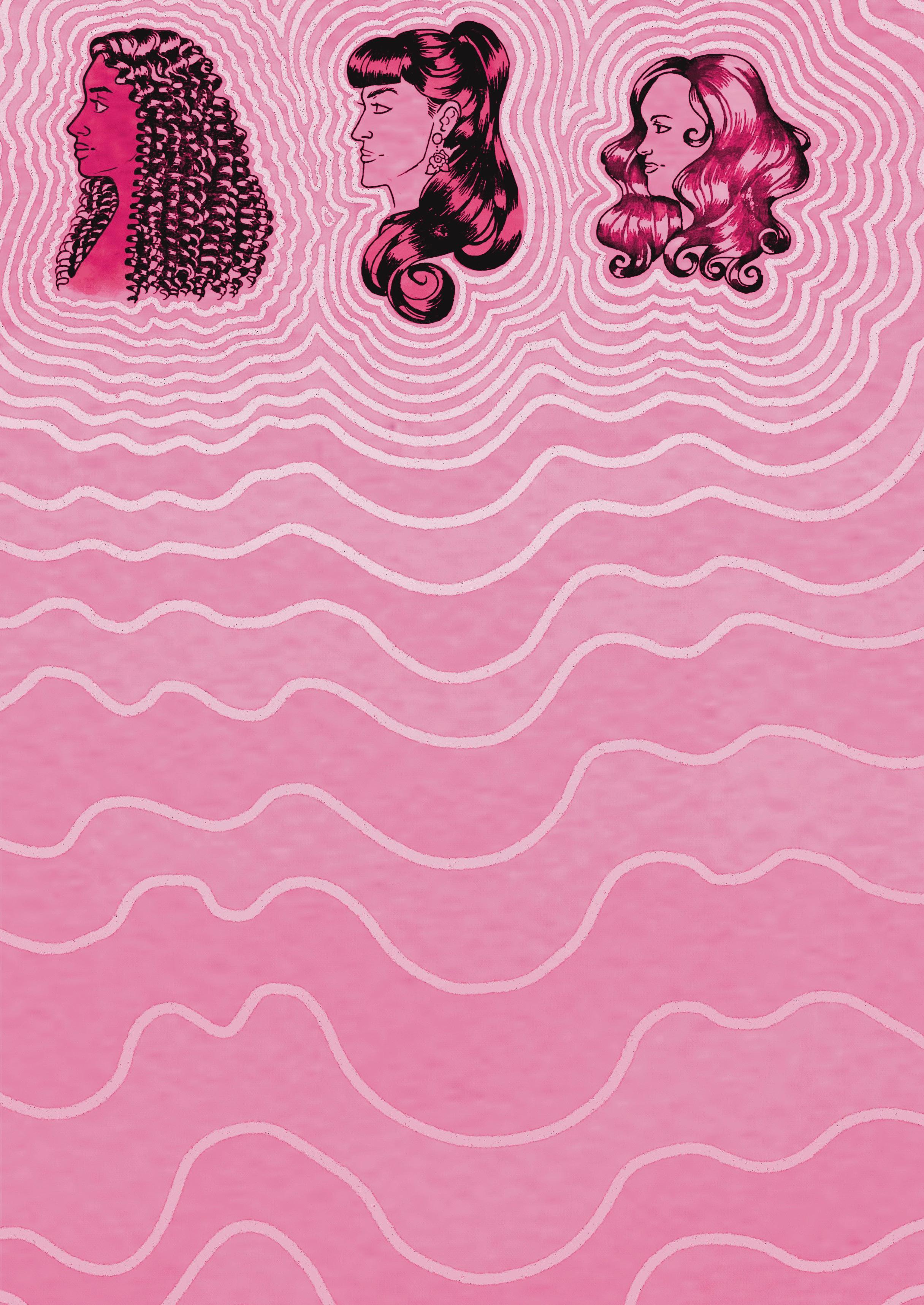
But these are all tribal examples. What about broader society?
Too many times now I have heard the argument that “feminists are just so idealistic and naive, they latch onto examples of niche tribal cultures without considering broader society. It’s money and power that really makes the international system go around”. Yes, but what matters is in whose hands that money and power rests. The idea of a matriarchy in contemporary industrial societies can be as simple as adopting the idea that femininity is highly valued, and that societies are arranged along lines of mutual respect and exercising power from within, rather than from above.
NON-FIC
34
Content warning: mentions of violence, war, sexual violence, patriarchy and misogyny
Being well aware of how points are really made in my non matriarchal society—here are the hard facts:
Matriarchal societies and contemporary societies with greater rates of female leadership and gender equality have less crime, less violence and lower rates of divorce than traditionally patriarchal societies (Marsden, 2018).
What about the animal kingdom? Are matriarchal societies just unnatural?
While a lot of animals have social hierarchies based on alpha male violence and domination, a surprisingly large number have been shown to be matriarchal. This includes a range of species whose social groups are all led by dominant females, such as elephants, meerkats and bonobos.
In the case of bonobos, it is the “natural solidarity that the females have with each other [that] gives them power” (Saini, 2017). Females in bonobo populations form strong bonds with each other to lead the group, even in the face of physically stronger males. If looking at nature teaches us anything, it is that our society does not have to be ordered this way and that male domination is not necessarily a natural state for our species.
Accepting our current system as natural, or arguing that “it’s just the way things are” and thereby “too hard to change” is actively feeding and cultivating an international system of aggression and inequality.
Female bodies as physical receptacles of war
The use of rape “to advance one group’s political, economic, social, or religious position over another” can be analysed as a weapon of war, coercing state action through force, in order to achieve material gain (Milillo, 2006).
Horrifyingly, but perhaps unsurprisingly, the examples of using sexual violence as a weapon of war are seemingly endless, with cases piling up this very second, as perpetrated by Russian soldiers against Ukrainian women (Taylor, 2022). One particularly horrific example of the use of sexual violence as a war tactic is the “raping of Nanking” between 1937 and 1938, where over 20,000 cases of rape and sex slavery occurred against Chinese women by Japanese soldiers in just one month (Milillo, 2006). This demonstrates an instance where the female body becomes the vessel of state legitimation on mass, physically representing the violation of the Chinese nation and cementing the Japanese invasion through violent masculine dominance. These tactics, however, are only made possible by patriarchal systems, where there is a deeply ingrained history of women’s bodies being treated as male property and dehumanised objects marked by an inferiority to men.
Okay, but what about violence committed by women?
Well yes, women too are the proponents of political dominance and sexual violence. In fact, in 2011, it was found that in eastern Democratic Republic of Congo, of 1000 households surveyed, 40 percent of women had been subjected to sexual violence by other women during times of war (Wilmer, 2015). However, political theorist Wilmer notes how this only occurs when women also become “patriarchalised” within the global political system and are conditioned to think within patriarchal constraints. These women perpetuate the violence that has victimised them, operating within a system where violence is a method of gaining power and thus protection. This demonstrates that the patriarchy is responsible for providing the conditions for this violence. Thus, the acts of individual men and women are only indicative of the masculine dominating system from which they operate.
How about our current female leaders? Can’t we just add more to the mix?
Women’s continual political victimisation within the patriarchal sphere and their portrayal as being naturally passive and nurturing leads to insecurity entering the highly masculine political space. Moreover, as contended by Beauvais (2021), this contributes to women perceived to be lacking authority struggling to be heard in political dialogues and discussions. Conversely, women displaying masculine traits such as authority and leadership are punished by the media and the public for violating gender norms. This is illustrated where female politicians like Hillary Clinton are criticised as a “bad mother[s] (Zawisza, 2016) and Julia Gillard was mocked for having an empty fruit bowl in the kitchen (Tovey, 2010). The unwarranted dilemma faced by female politicians is that their femininity is called into question at the expense of essential political critique.

Women who succeed in international politics lead from within patriarchal systems where political structures are steeped in traditions of male dominance and diplomatic aggression to which they must conform. Without the freedom to truly lead with femininity or offer progressive or radical political ideals rooted in a matriarchal approach, there is little scope to affect change from the inside.
Female leaders are appearing more and more on the international political stage. However, to effect a movement away from patriarchal tradition, women need to be as present as men in every facet of societal power structures, and we must listen to what they have to say.
References:
1. Discursive inequity and the internal exclusion of women speakers. Beauvais, 2021.
2. State sovereignty as a social construct. Biersteker, 2011.
3. Conventional perspectives: realist approaches. Burchill, 2005.
4. https://www.cbc.ca/archives/entry/im-just-a-girl-who-must-say-no
5. Magins, silences and bottom rungs: how to overcome the underestimation of power in the study of international relations. Enloe, 2004.
6. Including the uncountable: the realism of feminist politics. Frazer, 2015.
7. https://www.passblue.com/2017/12/05/from-the-kingdom-of-women-with-love/
8. Well, what is the feminist perspective on international affairs? Kinsella, 2019.
9. Is anybody still a realist? Legro, 1999.
10.https://www.independent.co.uk/news/long_reads/international-womens-day-matriarchy-matriarchal-society-women-feminism-culture-matrilineal-elephant-bonobo-a8243046.html.
11.Peace studies and feminism: debates, linkages, and intersections. McLean et al., 2015.
12.Structural realism. Mearsheimer, 2016
13.Rape as a tactic of war social and psychological perspectives. Milillo, 2006.
14.The Sexual Contract. Pateman, 1991.
15.https://qz.com/1033621/scientists-assumed-that-patriarchy-was-o nly-natural-bonobos-proved-them-wrong/
16.https://www.abc.net.au/news/2022-07-04/ukraine-rape-war-crime-international-law-genocide-russia/101173406
17.https://www.smh.com.au/politics/federal/gillards-fruit-bowl-runneth-over-20100624-z0cv. html
18.Gender, violence and dehumanization: no peace with patriarchy. Wilmer, 2015.
19.https://theconversation.com/why-do-so-many-women-oppose-feminism-a-psychologist-explains-67572
20.An independent Quebec: state succession to the NAFTA. Zedalis, 1996.
NON-FIC
35
Illustration by Jessica Norton
Chapter XVI, Articles 304 – 307 (1883)
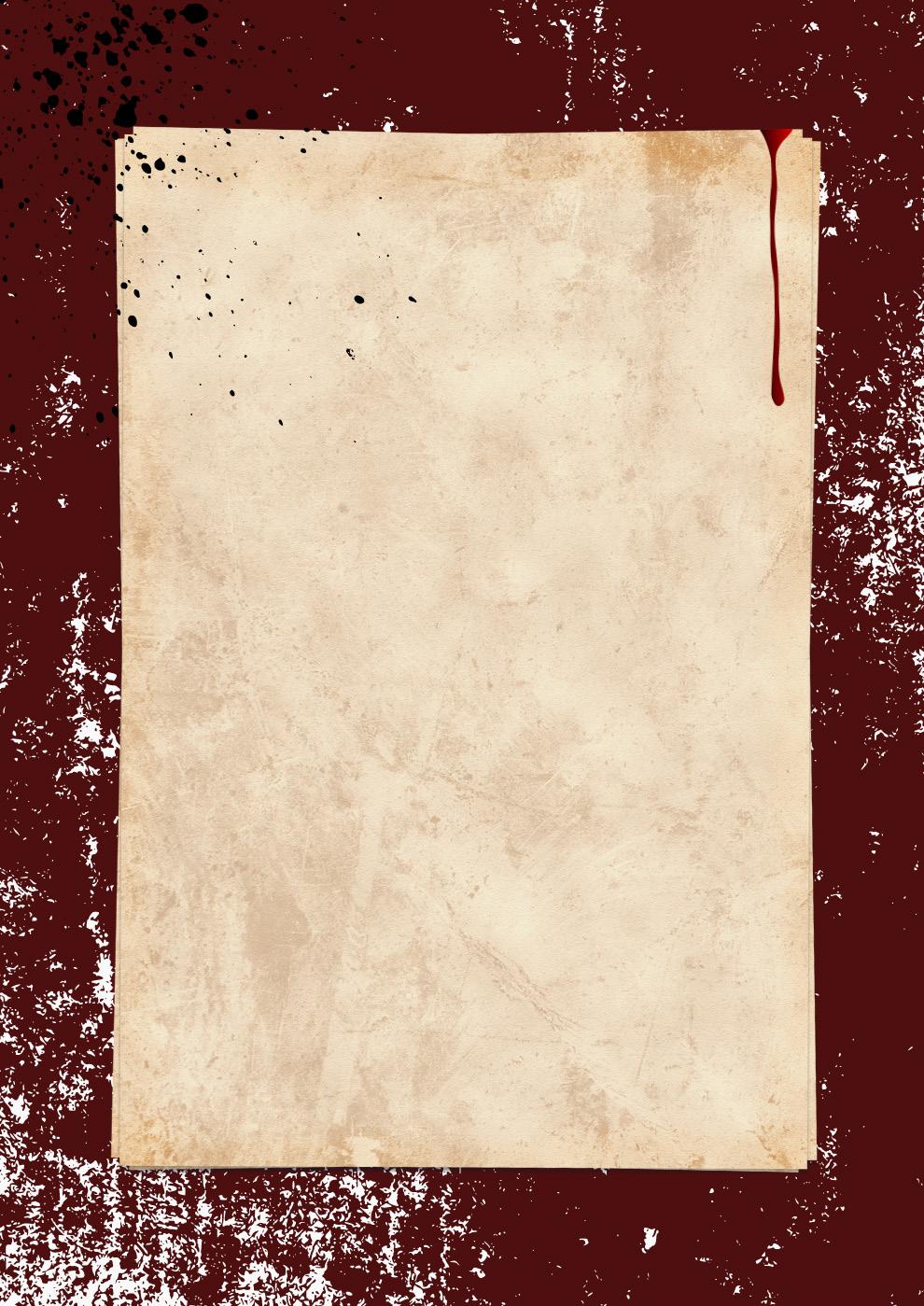 Written by Pavani Ambagahawattha
Written by Pavani Ambagahawattha
Content warning: Discussions of rape, child sexual abuse and abortion.
I am seventeen, in that light, loose-limbed summer between high school and university, when I begin volunteering at a home for ‘unwed mothers’ in Sri Lanka. I do this not out of the innate goodness of my heart, but in a cynical, eleventh-hour attempt to pad up my CV. To make things worse, I am a nepotism hire–I have neither formal qualifications nor the required strength of character, but my family knows the family who runs the home, so doors fall open.
I know what this place is, in theory. Sri Lanka has one of the most draconian abortion laws in the world; abortion is only legal if it poses a serious threat to the mother’s life, meaning it is illegal for victims of rape and incest, and illegal for most minors. Such women are swept cleanly into secretive residential care homes, where they can live out their pregnancies and give birth in relative comfort and anonymity. If they’re lucky, that is. The unlucky make do with coat hangers and back-alley doctors, herbs and black-market pills.
I think myself a jaded feminist, well-steeled for what I will encounter there, but the reality nauseates. They are children, these girls, the youngest fourteen and the oldest around twenty, with skinny, underdeveloped girl-bodies from which distended stomachs protrude like tumours, or parasites. There have been even younger girls here in the past—children of twelve who would regard their growing bodies with curious bewilderment, and despite being told gently and repeatedly, not seem to understand what was happening to them.
Most pregnancies are the result of rape by fathers, stepfathers or other men in the family, or due to relationships (i.e. statutory rape) with older men. For some girls, the court cases against their rapists are ongoing—I help one girl slick back her baby hairs with coconut oil and watch her head off to court behind her state-appointed attorney, black skirt fluttering in the wind.
On weekends, the girls receive visitors—their mothers, usually, who travel many hours by bus, often with a young child in tow, to bring clothes or homemade sweets. A few girls receive no visitors at all; their families have cut them off to preserve their own reputation, or to protect the abuser. These girls will have nowhere to go once they have given birth, and the institute must therefore arrange their transfer into an orphanage or find them minimum-wage employment and accommodation.
They are sweet girls, and eager for my (well, any) company. They clamour for my pathetic offerings— chocolates, lip gloss, nail varnish—the pretty plastic detritus of a girlhood taken for granted. They talk, first hesitantly and then with intense, urgent fluency, telling me unprompted about their families and interests and the men who impregnated them. Their attitudes towards their pregnancies vary from I hate it, take it out of me to I just want to go back to school to miss, will they let me keep the baby?
It is that last group that flays me. Fury I can empathise with, strength I admire. But the girls who cradle their bellies and speak of motherhood with soft yearning make me want to cry or vomit or both because they are children. They are children, these so-called mothers, and the foetuses they are being forced to carry by the state will then be taken away because they cannot even support themselves, let alone a baby.
NON-FIC
36
A few weeks later, they transfer me to the orphanage adjacent to the home. This is where the babies will be sent after being birthed and separated from their mothers, and where they will stay until they turn five or six, and are deemed old enough for state-run institutions.
The toddlers go wild at the sight of me, an actual human here to offer them attention, and clumsy attempts at affection. They climb over my shoulders and pull my hair and tap-tap my forearm with imperious fingers when my attention drifts.
The matron, a wearily competent woman who has watched the revolving door of volunteers turn for too long to regard me with anything but suspicion, issues commands. I am an inconvenience, a wrench in the well-oiled machine she superintends. Don’t be too kind, miss, or they’ll cry when you leave, she says. Slap him if he troubles you. Don’t comfort her if she cries in her sleep, or she’ll never go to bed alone again.
She is not unkind. Simply efficient, as one needs to be to run a well-oiled machine of this magnitude.
Every Sunday, the orphanage opens its doors to prospective parents. Couples, usually in their late thirties, with the resigned eyes of those who have been in and out of IVF clinics for years, watch the children at play from another room, pointing and whispering amongst themselves.
The first child to be picked is a little boy, with feverishly bright eyes and a wide monkey grin. He is so fair that he could easily pass for white, and that is why he is picked first, despite his slight cleft lip.
This is how it works. The youngest, fairest, prettiest babies get picked one after the other, while the rest– older children, and those with physical and intellectual disabilities—watch and wait and wait and watch. One boy (five, too old already by most adopters’ standards) tugs urgently at my sleeve to ask when his ammi and thaththi will come get him. He is a sweet boy, with a congenital deformity in his left arm that lowers his odds of being adopted to zero. Soon, I tell him, brightly. So soon!
I only volunteer there for three months before I quit. My stomach isn’t strong enough. And besides, I am privileged enough that I only have to subject myself to such ugliness if I choose. xxx
Many years later in Melbourne, I have a pregnancy scare due to contraceptive failure, and spur into frenzied, panicked action (you stupid whore cackles my inner monologue, gleefully). I look up state abortion laws and memorise them. I call my provider to confirm that I am insured for a potential termination. I am, but it’ll be hundreds of dollars out of pocket, so I take on more work. But I rest easy in the knowledge that if I can’t pay, my family will. They will not approve, of course, but they love me, so to them my abortion will be the singular exception, the only moral abortion there ever was and ever will be. I bulk buy pregnancy tests on Amazon, and piss obsessively into cups. And I think often about that long-ago summer, and about those girls, who had none of these options.
I get my period, in the end, and all is well. But still, I obsess. Sex, even well-protected sex, is tinged with enough paranoia to neutralise the little pleasure my hormonal contraceptives allow me, and late periods incite panic attacks. It’s not the end of the world if it happens, I try to tell myself. You have money, and you have options here. But the ultimate intent of criminalising abortion is to control women’s bodies, to frighten them into keeping their legs firmly shut, and the draconian abortion laws I grew up with have served their purpose so well that even when the cage door is opened, all I want is to crawl back in.
They must have been frightened too, those girls. But unlike them, I have money. And I have options here.
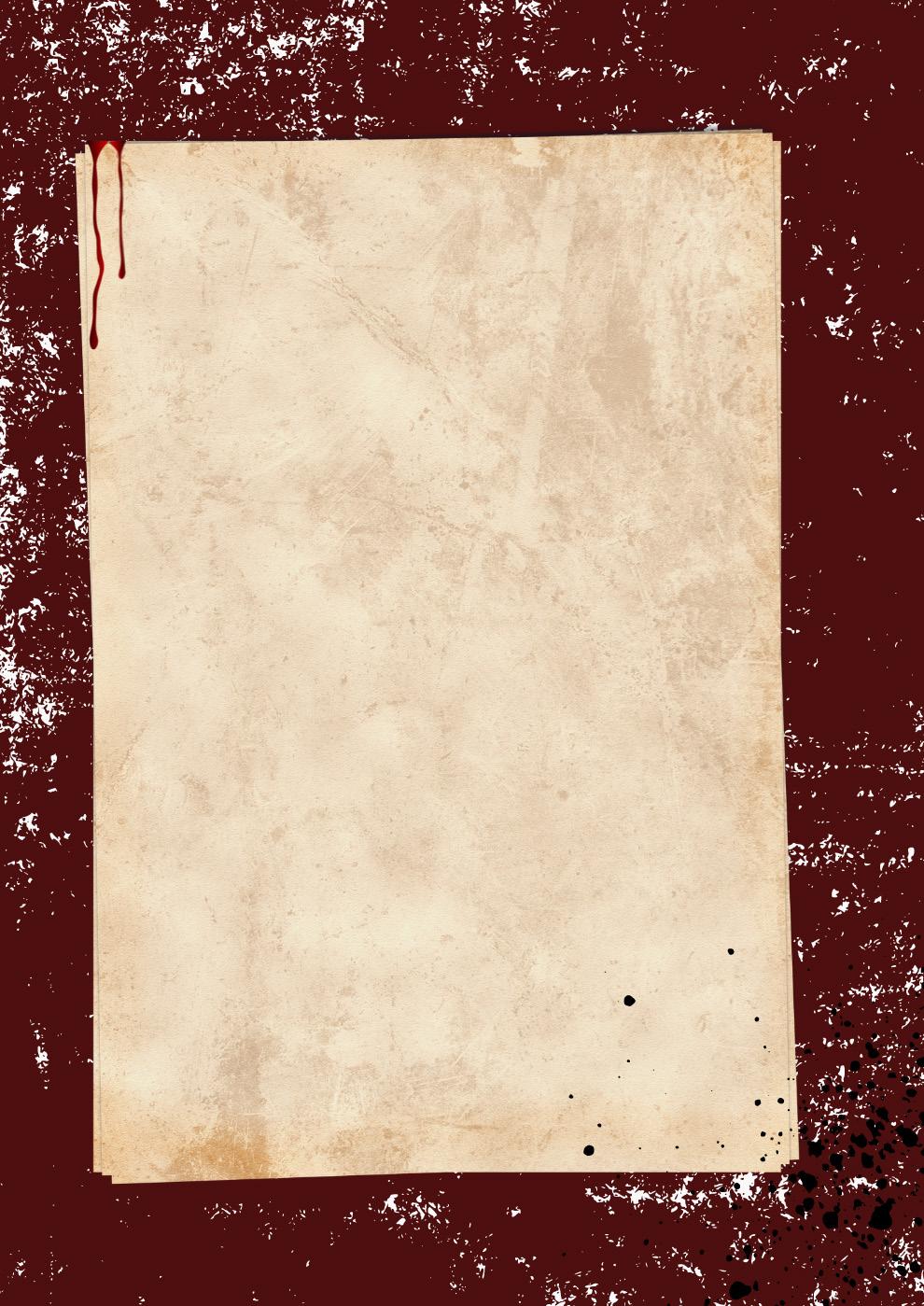
NON-FIC
37
Content warnings: Discussion of mental illness; References to death and violence from political conflict
On Joyce’s Dubliners, Mental Paralysis and the Military Coup in Myanmar
Written by Nay Chi Nway
James Joyce’s Dubliners begins with the description of a halfcorpse. The subject—a paralysed priest—is not actually deceased, not yet, but there is definitely “no hope for him this time”. Every night, the young narrator of the story walks past the house of this paralysed man to see if there are candles by his bed, whether he is still alive, or dead, or neither. He says:
“… as I gazed up at the window I said softly to myself the word paralysis. It had always sounded strangely to my ears, like the word gnomon in the Euclid and the word simony in the Catechism. But now it sounded to me like the name of some maleficent and sinful being. It filled me with fear, and yet I longed to be nearer to it and look upon its deadly work.”
Paralysis, both conceptual and physical, becomes the main recurrent theme in Dubliners. One of its short stories, ‘Araby’, ends with the narrator distraught and paralysed by his own helplessness when he fails to buy a gift for the girl he is infatuated with—his failure to initiate something fulfilling and new in his dreadfully monotonous life. In ‘Eveline’, a young girl daydreams of beginning a new life with her lover in Buenos Aires, away from her exhausting life dictated by an abusive father. However, when the moment for escape arrives she fails to leave, paralysed by the fear of unfamiliarity. Paralysis pervades Dublin, a city that Joyce himself desperately wished to escape. It is the one effective barrier that unfailingly defeats his various characters in their pursuits for happiness, change, salvation, or even a moment of peace. It is paralysis that makes people feel “perished alive”.
As I progressed through the book, I was gripped by this notion of paralysis. To me, it is a concept that is real, inexhaustible and, most of all, familiar: paralysis is the word that precisely describes the state that I have made myself at home for the past year and a half, alongside millions of other people in a city called Yangon.
Paralysis is what has been seeping in through sewers and telephone lines since 1 February 2021, when tanks rolled in through the highways onto the streets we walk along day after day, when members of the elected government were seized from their beds in the middle of the night. And once again, a state of emergency was declared. After nine years of qua-
si-democracy, potholes finally being fixed and a relatively stable period of economic growth, Myanmar had yet again been dragged by its feet into military dictatorship.
On the morning of the coup d’état, I had lain in bed like a beached whale trying to process the news with little comprehension. Perhaps that was when I had first felt the paralysis approaching. And later, I watched my mother, a woman who had grown up in bunkers and fleeing military violence, freeze with terror as a truck drove by playing victory songs. I had witnessed her paralysis, the neighbourhood’s paralysis, and the city’s paralysis.
My journal entry from that day reads:
Most eerie thing I’ve heard. The fear is thick in the air. The paralysis is not a new sensation. Just like every other city, Yangon has always had its pockets of paralysis: the staterun schools where children drone on reciting memorised information and have the curiosity harassed out of them; the government offices with terrifyingly long lines that don’t move unless you tuck a few 5,000 kyat notes beneath the desks; in monastery halls where Ma Ba Tha monks preach the “cause” of massacring tens of thousands of Rohingya people, where the hatred is so strong that you can feel it choking the air itself. It is a different brand of paralysis to the kind in the Dubliners, of course: one that is caused by a constant fear of further violence rather than monotony and lack of “naturalness” Joyce characterised Dublin to possess. We find our similarities, however, in the lack of motion in a modern world.
In Marshall Berman’s book All That Is Solid Melts Into Air, he wrote of how 19th century critics of modernity described it to be an “iron cage” in which man’s fate is determined by social organisation and modern technology, in a world defined by capitalism, legalism and bureaucracy. As part of the Anthropocene, even those of us in underdeveloped and disconnected nations like Myanmar cannot escape this iron cage: the sweatshops, pollution and exploitation of natural resources are testament to how we bear the brunt of this modern decay.
The necessary conditions for participation in the modern world, however, are not accessible to us—here law, econo-

NON-FIC
38
my and social organisation are in tatters. We live on an island where we feel the “psychic dizziness” of modernism, but do not have experiential possibilities because we are struggling merely to survive. We have no place in this modern world that spins too fast. We are the conjuncture where the only possibility is paralysis: to feel the world move on as we freeze in time, in endless cycles of violence and destruction.
This paralysis is what now envelops the entire city: one that is sudden, but also slow and excruciating. It feels like watching the mechanisms in your body fail one by one. I watched my employer leave the moment things became violent—his liberty guaranteed by a foreign passport. Multinational companies started exiting. Fiery, passionate protests turned into flash demonstrations that almost always ended in bloodshed. Laws have been altered so that no warrants are required for arrests, so that teenagers could be put on death row for holding banners. The death toll continues to climb. Electricity cuts are becoming longer and more frequent. Food prices are tripling. Money is losing value. People continue to be arbitrarily arrested, tortured, detained, dragged onto the streets and beaten to death in a show of prowess against imaginary enemies.
For a while, I continued my work at a small local news agency, talking to people, translating and transcribing deep into the night. But as I watched the city become paralysed, it became progressively harder to keep my mind clear. Whatever I did no longer felt like honest work—it was tedious, draining and served no purpose, other than to make me feel like I was doing something in a dematerialising world. Phone calls began to terrify me. When interviewees spoke about the deaths of their loved ones, their jobs and their futures I could no longer even bat an eye. I felt disgusted at myself for becoming desensitised. So, when Myanmar fell off the news cycle, I stopped working completely and gave in to the paralysis.
On 26 July 2021 I wrote:
There is no interval between yesterday and today. It spreads like a puddle.

Paralysis makes you unable to sleep. It is not quiet but, rather, to be in a perpetual state of disorientation. You are wide awake when you close your eyes and catatonic when you open them. You do not comprehend when you listen and you do not perceive when you stare. In a city of paralysis, nothing is happening and everything is happening all at once.
And yet, just like the narrator from ‘The Three Sisters’ in Dubliners, I find myself unable to avert my eyes from this paralysis. Most of my friends and colleagues have packed their bags and left as soon as they could, looking for liberty, peace, and safety in foreign lands. And I get all the reasons: one can only take so much of confinement and being “perished alive”. Presented with the same opportunity, however, I find myself unable to leave. Fatigue and blankness overcome me when I try to envision a life in a more stable environment, even as the constant fear, grief and surveillance draw more and more of my youth away. I want to be liberated, not exiled.
There is something fascinating about a city in paralysis. Witnessing it. Feeling it. Living in it. Seeing your reflection in it you
will ask, will my flesh rot and fall off my bones as I watch? Is it true that death is the only thing to come out of this paralysis— or is there something more to be found in it?
The tactics I used to break free from paralysis in a past life no longer work. The brevity I feel when I stare off into clouds no longer provides any consolation. So what if we are nothing in the bigger picture, minuscule specks of dust on a rock floating in an infinitely expanding nowhere? It does not change that people in my city are hunting for rats and snakes in the sewers to stay alive.
Instead, I feel like a rock. The kind that is deeply anchored at the bottom of the sea bed in depths where even fish do not fathom. But there is a kind of peace in that, too—in knowing that if the crust of the Earth were to break and reveal the mantle underneath, and if newer life forms were to emerge from within, I would be there to witness it.
On 20 July 2022 I wrote: It is all about surviving.
NON-FIC
39
And Let the Tower Rise
Written by Donna Ferdinando
Amazon Prime delivered my shipment a day late. The deck came in a hard box with gilded corners and a smooth lid that slid out to reveal the cards within. They followed a strict colour scheme- black and gold with gilded edges that threw shards of light on the walls of my room if I held them under a patch of sunlight- and they followed a strict theme: jagged rocks and winding streams and vines and sun and moon. I have made a mistake. I have no idea what the cards or art upon them or what tarot even entails. The intersecting lines and curves resemble ink and ichor. No time like the present. I shuffle the cards clumsily. Some of them leapt out of my hand, or spilt out rather, onto my bedspread. I peer at one of them. A grassy path slithers down the middle of the card before splitting into three and disappearing beyond the gilded edges of the card. "You are at a crossroads," the guidebook that came with the deck tells me. I don't know what it means. I've been here nearly two years, working two jobs, spending the rest of my hours in a heady slightly nauseating mix of writing, re-writing and re-rewriting lecture notes and scouring books that I don't even enjoy for a modicum of information that will make me feel like one of the crowd. The sun is setting outside the window. The light reflects off the windows of the buildings opposite mine and against the amber of the sky the sight is an aesthetic work of art. Logically, I can interpret the atmospheric dust out of a sunset. In literature it can be an end, a rebirth, a beginning, a paradox, fire and brimstone, ashes, gemstones or just a particularly atmospheric mood killer or scene elevator. Over two years I have come to love concrete answers to questions, clear-cut replies and well-structured arguments. I want to know exactly what this card means and it kills me that I don't immediately.
What I do know is that the cards I hold, with their images of towers and pentacles and swords and cups originated as a parlour game; and somewhere down the line someone embedded meaning into them and now their purpose is altered. Now, they inscribe meaning; they allow a glimpse into a window you must peer through. I like their purpose. I like that I like their purpose. And I like the symbology in their art and I like the meanings they have been inscribed with. I like that a flower can mean fertility and death and life and nourishment and good weather and there-are-animals-near-by and thirst and quench and forget-me-not. I like that a leaf can mean freedom and aimlessness and a journey and a touchdown and a hand
and separation and adjoinment. I like the action of ascribing meaning, and the existence of inscribed meaning, of the logical correlation between image and interpretation.
Someone's playing the drums in my building. It's an accommodation packed with tiny studios and shared apartments that definitely do not have soundproof brick walls or sound absorbing carpeting. How they fit an entire drum kit into the little space a studio provides is a mystery. Regardless, the brain worm burrowing around in my head hits upon childhood piano lessons and, if you took the mind-numbing annual piano exams out of the equation, I distinctly remember enjoying the process of learning and playing a piece. “Mariage d’Amour” was a daily favourite. I relished in finding out the exact tone for a pianissimo and a fortissimo and a decrescendo that danced together with a ritardando. I enjoyed further when I added my own fortissimos and crescendos and arranged them according to the tune just so to find the major in the minor or the minor in the major. Interpretation. And this leads me to think about what other magic has been poured into one’s passions that has altered said passion for the better. Like my grandmother, tailor and seamstress for her family and avid embroider extraordinaire, who somehow spun thread and ribbon into art even when that art resided upon the hems of her children’s Sunday gowns; which, of course, were transformed through the interpretation of the needle into colour and elegance and just a splash of haughty pride mixed in with playfulness. And I think of my mother who does not know what may happen in the future but relies on her rosary beads (made from real rose petals, she likes to tell us) for comfort and solace and take in hand what she is drawn to from prayer and creed and cradles it into her own life. Interpretation. And my uncle who, in reading the stars and their movements must take what stands out and leave what doesn’t. I admire their ability to interpret, to revel in some ambiguities unbothered due to the concrete interpretations they have drawn from their worlds. I’d like that. I’d like that very much.
It’s night now. I can see Venus from my window. The air is cold and my heater is ridiculously, humidly warm. I sit at the table, grab a notebook, pick a card and look at the artwork upon its glossed surface. I begin to write and hope, from the ambiguities of my words, to draw a glint of meaning.
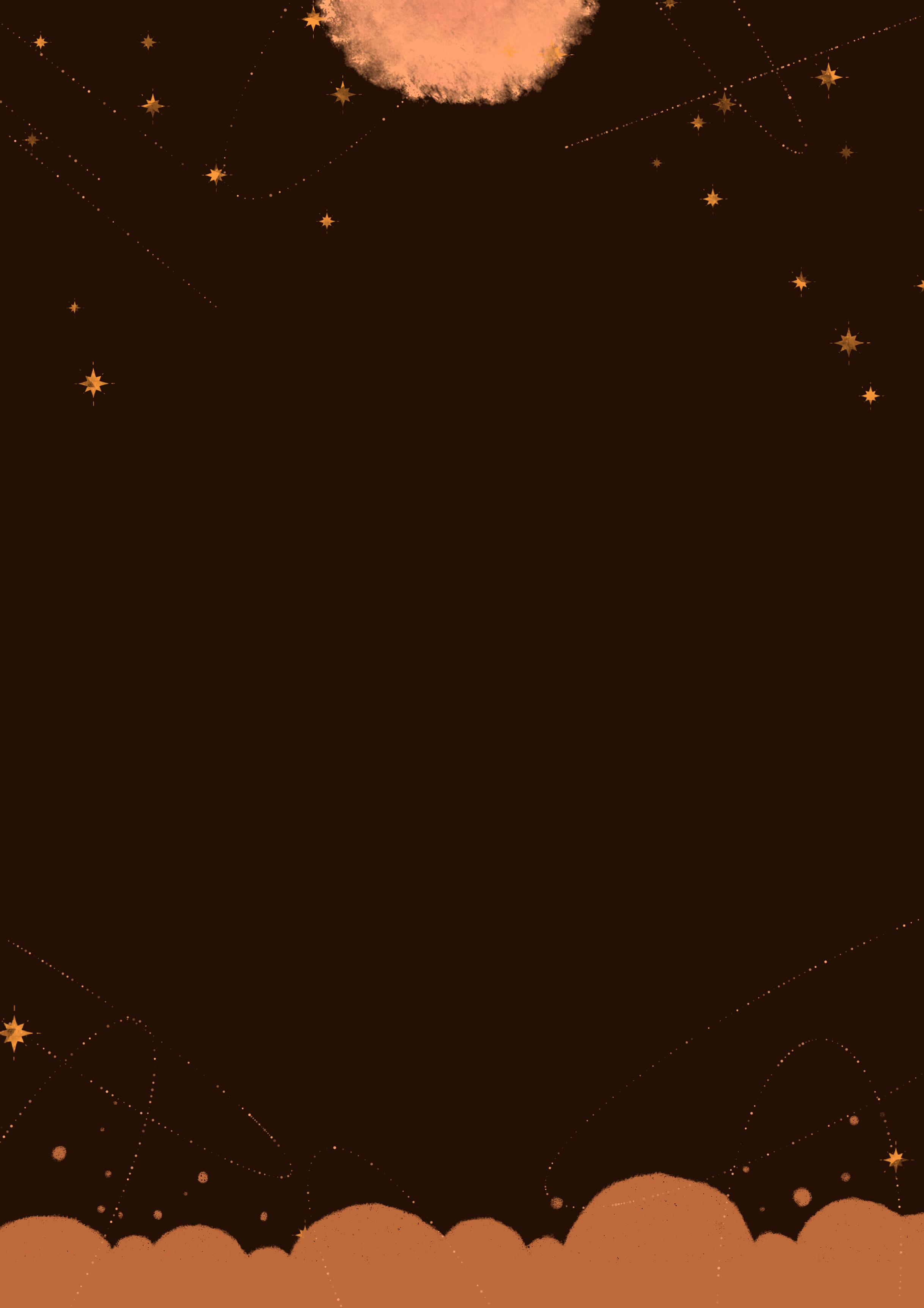
NON-FIC
40
Illustration by Weiting Chen
Content warnings: References to car accidents, references to death
I Slow Down For Car Crashes
Written by Lizzie Browne
Rubbernecking, also known as ‘accident gawking’, is a slang term used to describe the phenomenon in which people drive more slowly to look at an accident. Almost a third of accidents cause rubbernecking and the action itself is responsible for up to 16% of all accidents. Rubbernecking occurs when people get distracted by something on the road, like an accident or an arrest. Some studies have suggested it is just as distracting as a mobile phone.
Your car grinds to a halt yet again, having inched forward about a metre in the last twenty minutes. Your small, and let’s face it, rather shitty, vehicle is sandwiched tight between two other cars, likely belonging to similarly disgruntled and tired workers trying to escape the city after a long day’s work. Yet the respite of home is still well over an hour away; in good traffic, it probably would only take you around twenty minutes, but of course, you’ve gotten stuck yet again in a long line of vehicles, snaking a long way down the road like beads on a string.
You turn on the radio to distract yourself from the chorus of traffic noises; the honking, the humming of car engines, the blasting of the AC, only to be greeted with the latest, overproduced pop song, the one that you used to semi-like before it got ridiculously overplayed and now you can’t stand the sound of it. Still, it’s better than sitting there in silence, so you leave it on and keep your eyes fixed on the car in front of you.
The radio switches to the news and a monotonous-sounding woman reads off some information about the latest global tragedy and the stock market and politicians bickering before swiftly moving onto traffic news; she reports a few road closures in suburbs you only vaguely recognise as well as an accident a few hundred metres ahead from where you’re situated.
Of course that’s why there’s traffic. Everyone’s slowed down to get a glimpse of the crash.
How disgusting, you think to yourself, tapping your finger distractedly on the wheel, making a crisp and satisfying ‘tap-tap-tap’ sound as you ponder. Slowing down to catch a glimpse of some poor person’s mashed up car, or worse… it’s just sick. It’s morbid.
Psychologists have posed numerous reasons as to why rubbernecking occurs. Some suggest it is our way of rationalising unthinkably tragic situations and preparing ourselves for if we ever did find ourselves in that situation. Others suggest it is for the same reason we go on rollercoasters or watch true crime shows late at night — for a quick adrenaline rush.
You wonder if the people involved are alright and take a look around you to see if you can spot any police cars, ambulances, or even, god forbid, fire trucks. You wonder if it's just one of those annoying little scrapes that always seem to hold up rush-hour traffic or if you are about to drive past a horrifying scene; two cars turned into steaming piles of crushed metal, squashed and mangled like a can in a hydraulic press. The car behind you honks loudly and you snap back to reality, only to realise that the car in front of you has moved a sizeable distance up the road. You swiftly make up the distance and stop again and in this new position, you catch a glimpse of some incriminating, yellow tape up the side of the road, presumably sectioning off the area of the accident.
Throughout the next half hour, you watch out of the corner of your eye and wait for the story to unfold, to be given some visual explanation that would justify why you’re going to be home almost an hour later than usual. You don’t allow yourself to take a full look like the rest of the drivers because, unlike them, you’re not fueled by some macabre, twisted curiosity. Instead, you’re only taking a few fleeting glimpses and that’s just to make sure that no-one is hurt, of course.
As you finally approach the end of the yellow tape, you spot the blue of a police car. There are a few dishevelled, but otherwise unscathed-looking passengers talking to some policemen, who, in turn, are scribbling something down in a notebook. Behind them are two cars, one of which has a slight dent in the front of its hood and the other of which looks practically untouched.
You finally make your way to the front of the line and turn off the highway, where the traffic starts to ease up. Good, you think to yourself. I’m glad it turned out to be nothing. I’m glad everyone’s alright, you insist, unsure of who you’re trying to convince.
 Illustration by Nina Hughes
Illustration by Nina Hughes
NON-FIC
41
A Pocket of Time
Written by Kien-Ling Liem
Healing takes time. Losing someone is a very strange feeling, because you keep telling yourself that it’s going to be ok, and that these things take time, and people keep telling you that it just takes time to get over it, and that’s all it is—just infinite time, stored time that you take out of your treasure chest and use to get over something. It’s like time replaces them. And time is scary, because as time passes, so does your memory. Time plays with memories and the feelings that come with it, and time makes you lose those feelings for them. Time is brutal. It is relentless.
Is it time’s job to make you forget? Time stores memories, yet it can erase them too. Memory is a pocket of time, and nostalgia is when you fumble in your jean pockets looking for your keys but instead find a crumpled piece of paper from months ago. Nostalgia is an old letter lost and found again, an envelope of time. You rip the white paper at its folded seams and feel the crisp pink on your fingers, the paper your mother used to write on. The handwriting is jarring. It's written by someone who seems like they haven't learnt to write yet, almost illegible, the holes in the a too big and the dots in the i too far. Yet you still recognise it, how your fingers were too small for the pen and that’s why the curve at the g was wonky and the cross at the t uneven. You stare at the page, the words that hold a past copy of you in their lines and the smudged ink.
Time folds over me and I fold into the envelope.
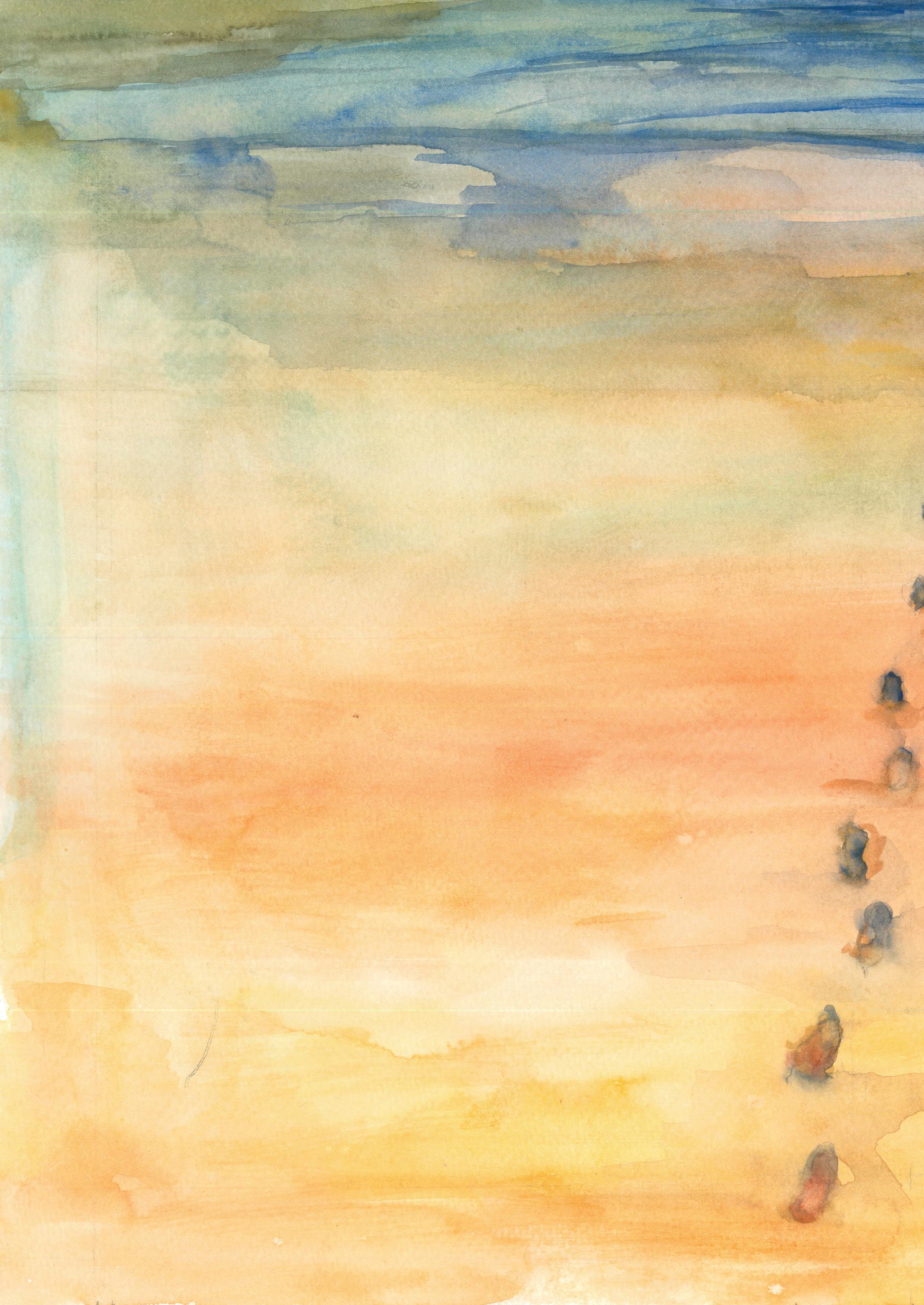
What constitutes a memory? An event you remembered, snippets of a past conversation, a face, the way they smelled, a sense, a feeling you can conjure up in your head. Little memories rolled over by time, the way a stream washes over rocks and eventually those rocks erode and maybe that’s why they call it a stream of consciousness. Memories are sediments of a consciousness, only to be washed up on the shore as slate and granite and quartz and limestone and they are just a jumbled up mixture of everything. Can you refine those memories? I take the stones and put them in a rock tumbler for a day or two, adding more water as I go, acting as the gluey string that will weave these memories together. And after a day or two I take them out, and they are as shiny and new as ever and suddenly I remember everything.
Can you sharpen your memories like that? Can you clean them up, violently tumble them against each other until they are round and soft and you can nearly see through them?
Can we trust memory? As time goes on, we forget more, but we have more to remember. The brain is like a little collection of washed-up stones. I have many new rocks—rhyolite, pumice and sandstone, birthed from the folds in my hippocampus, but my quartz becomes more opaque by the day. One day I’ll be unable to see through it. One day it will not mean anything anymore.
We only existed then, you and i. you and i as an ‘us’ only existed in this pocket of time, this small slot of memory,
NON-FIC
42
Illustration by Harriet Chard
independent of everyone else, and it feels a little fuzzy now. I reach into this pocket and can’t see it as clearly as I used to, can’t feel you as closely as I used to. You are so far now.
We only exist in my head and yours. We only exist in January at the beach, we, you and i as ‘us’, is crystallised in that pocket of time, in that fold hidden deep into our hippocampuses
It is funny how they say you can relive a memory, because you can’t, really. I saw time coming; it arrived; and now it has passed. No matter how many times I relive it in my head I can never truly relive it as a present existence; I can only go through the motions of what we did and not what we are doing. The notion of reliving a memory is a paradox, because how do I exist again in something that has passed? To relive is to live through something again in your memory. But I cannot live that memory again as if it was real. To live is to remain alive and memory is already dead.
To relive a memory is a contradiction, a juxtaposition too good to be true—a lie.
Because the main thing that makes a memory a memory is that you have to re mem ber it.
Re mem ber it, again, as something passed.
What are we without memories? We are everything and nothing at once. We are potential.

A vessel. An empty vessel. A medium in which to pass things through. We are children. Babies. Aren’t children just full of potential? Little bodies, meat things, plushy fingers, malleable minds. You can be everything soon but for now you are nothing.
Without memories we are potential to be extracted. To forget, sometimes, is a natural cleansing, a humane startover. To forget is the opportunity to experience time again. We are hollow without memories. Turned inside out, our memories scraped out with a metal spoon like digging at the bottom of an ice cream tub for the last bit of creamy sticky sweet liquid. Scrape out my brain with a metal spoon and then who am I?
As the slime in my hippocampus consumes me, as the envelope of nostalgia creases over me, and as the frothy water of the January beach swallows the last time we had hope in a you and i, time passes over me, and I try to forget you.
NON-FIC
43
A Game Of Echoes
Written by Kai J. Prideaux
Once upon a time, we all stepped out onto our porches to pick up the The Age. I mean I didn’t but… anyway. Coffee in hand, all retreated into their homes to read the same newspaper. There was a clear(er), even playing field when it came to information. Now, we have the glorious benefit of having social media giants cherry-picking information. Suggesting our political beliefs. Suggesting our perspectives. Even suggesting our motives. Twitter paid thousands to build algorithms that present us with exactly what we will and want to believe. Yet, we are convinced we’ve come up with it all on our own. After all, we read it. We thought about it.
We are truly naive to the influence the power of suggestion holds.
Years of technological progress have culminated in a generation who basks in an echo chamber––and the real kicker is that we’re fine with it. Our chamber has been built brick by brick, and we’ve happily moved in. Our social media oubliette is a horrific consequence of modern suggestion.

But it’s nothing new. Subtle echoes throughout our history reveal that few are insusceptible to the poisonous art of suggestion.
Shakespeare, perhaps the most successful unmasker of human intention, shows us time and time again the power of a whisper in the right ear. In Macbeth, the sisters (‘witches’) embody this power unlike any other, prophesying “Macbeth... shalt be King hereafter”. This one line catalyses the creation of Macbeth’s echo chamber. Once the witches’ suggestions begin to bear fruit, Macbeth continues to seek out the witches’ counsel—like flies to manure. Even when Macbeth becomes king and gains all the resources and advisors that come with it,
he still seeks out the sisters. Macbeth is drunk with the “knowledge” that the “spirits [who] know all mortal consequences” have bestowed upon him.
But, to what extent are the witches true? Or even real? Banquo himself questions Macbeth, saying, “have we eaten...the insane root that takes...reason prisoner?” The witches are just as likely to be a manifestation of the self-serving echo chamber in which Macbeth dwells. A face, a scapegoat, to his “black and deep desires” because, after all, suggestion is just a trick, “a shadow on the wall.”
And this is Lord Varys’ enduring mantra. It’s what allows him to flourish amongst the tyranny of King’s Landing.
Varys knows that “influence is like a weed”. “Tending to [them],” Varys holds the ear of every relevant person in the realm, with the crown routinely insisting on a small council role for their Master of Whisperers (no, not a metaphor). Game of Thrones leaves no grey area when it comes to the absolute power of deceptive influence. As the Master says himself, “Knowledge is my trade.”
This is the sole prerogative of Varys: to capitalise on the echo chamber in his way, mostly through his “little birds.” Varys is Westeros’ Twitter. Dispatching his birds and listening readily for tweets, Varys implicitly restricts the crown’s information to only that which he wills them to hear. All to further his role. To further his power.
Likewise, Melisandre (also a supposed “witch”) twists Stannis Baratheon, a would-be king, into a chamber of his very own. Stannis becomes totally consumed by Melisandre’s vision of
NON-FIC
44
the “flayed man banners lower[ing] to the ground.” Much like the Shakespearean ‘witches,’ some of Melisandre’s prophecies manifest. This only leaves Stannis itching for more, becoming just as consumed with kingship as his Shakespearean counterpart, Macbeth.
In a time where no crime was greater than killing your king, Macbeth commits the ultimate sin upon “th’unguarded Duncan.” Suggestion has rooted so strongly that Macbeth bears no consolation. No virtue. No longer a “valiant, worthy gentleman”––Banquo is as good as a common rodent when Macbeth has been told he poses a threat. Even friendship, even the best of friendships, stand no chance in the face of suggestion.
Shakespeare mirrors these tragedies of wayward suggestion through pathetic fallacy, with hints such as “the night has been unruly”––spoken as Duncan’s back yields to Macbeth.
GoT uncannily echoes this. Convinced that “sacrifice must be made” Stannis Baratheon puts his only daughter (Shireen) to the stake. Stannis’ eyes are bagged, and he wears a ghastly pale face as Shireen is burned on a terrible winter’s day. This pathetic fallacy is no accident. It allows those, who dare to look deeper, to see the toll of unchecked suggestion. To see the toll of an age-old echo chamber.
Yet, we comically overlook the power of Melisandre’s influence. Stannis did unspeakable things, and pure evil is typically, somewhat rightfully, the fall guy. But Stannis isn’t bold. He needed the nudge––the echoes ever so consistently returning from his chamber. It was the visions in the flame that led to his evil, the steady suggestion of the same desires: victory, The Iron Throne, revenge. And in a sweet irony, Stannis’ ember in the darkness, his last hope for kingship, slowly sets him alight.
Further, GoT presents more tangible versions of suggestion through details often overlooked. In every exchange between Joffrey (a king) and Tywin (his grandfather), Joffrey stands up. Or quivers. Or yells. Or flaps his mouth about. Tywin sits. Tywin sits at the head of the table, says the bare minimum, and sends him to bed... literally. Sure, we know Joffrey is no Einstein. But he’s the king. He’s Protector of the Realm. Yet, Tywin’s commanding illusion of strength, as his house’s patriarch, disarms almost every character he crosses. The camera movements mirror this, with steady shots of himself and sporadic shots of his victims. He’s no killer. He’s not the “mountain”. But he just doesn’t need to be.
influence the common folk and their actions. The great rulers of Westeros are constantly strengthening an echo chamber, supporting fear above all else. Think about it, what better way to invoke blind loyalty than to scare the crap out of everyone? “Winter is coming.” “For the night is long and full of terrors.” “All men must die.” Suggestions. All suggestions. Seemingly unimportant, they ever so slowly insight ubiquitous fear. Which is all that they need to do.
In a world where the dead are walking, it’s just safer, much safer, to stick with your house. Culminating in a false tribalism that ultimately only benefits those in power, the Westerosi echo chamber safeguards a perpetual state of strength for the lords.
House Tyrell, the sole matriarchy in Westeros, relies on this system implicitly. Boasting the words “growing strong” and the sigil of a rose, they are quite the contrast from dragons, lions and wolves. Their power comes from less physical forms. Easily Westeros’ greatest manipulators, suggestion is their finest tool.
Pursuing closely to her rose sigil, Margaery Tyrell buries her roots and uses echoes to further herself. Not dissimilar from Lady Macbeth’s “serpent under[neath]”, she manipulates and deceives many of those in power.
From the beginning, we know that Lady Macbeth has a keen understanding of where she can hold power. She understands that her success is inextricably linked to her ability to manipulate Macbeth. Assuredly, she seeks to “pour [her] spirits in [Macbeth’s] ear.”
Lady Macbeth whipped out just about every trick in the book to give Macbeth the push he needs to finally kill Duncan. From questioning Macbeth’s manhood to playing the ‘love me card,’ Lady Macbeth proved herself to be a master of suggestion.
Yet after years of whispers throughout history––in even the literature we produce––we neglect the power of echoes returning from our many long-standing chambers. And perhaps that’s why they’re so maliciously fruitful.

After all, “when you play the Game of Thrones, you win, or you die.”
Every blow of the sword, every death, every move is preceded by whispers. Because it’s knowledge, echoes and suggestions that truly win “the game”. Seemingly melodramatic sayings truly
NON-FIC
Illustration by Weiting Chen 45
Illustration by Indy Smith
Foreign Winds Bring Again Spring and Summer
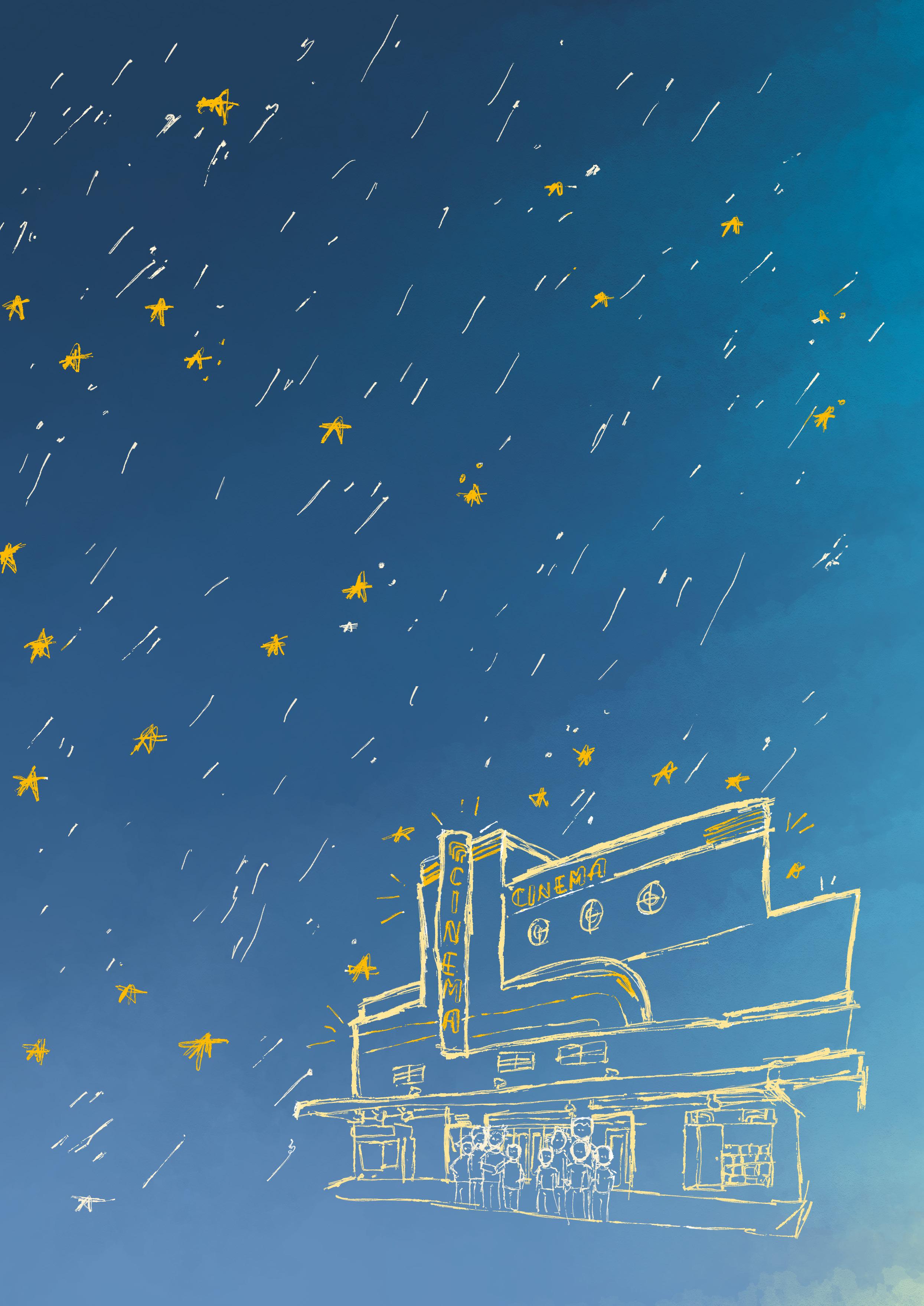 Written by Sophie He
Written by Sophie He
The American
The American joins the army. Only he is not American. At least, not yet. He will be. Once he’s out of prison, married, had children, reconnected with a contact he made in prison, been smuggled to Guam, detained by immigration, and met a very helpful lawyer—then he will be an American.
The American, who is not yet American, joins the army.
“I am joining the army,” he announces to his family, and promptly departs on the next bus.
Two years later the American—who is not yet American, but is two years closer to becoming one—returns.
“I have returned from the army,” he announces to his family. The family is the same. Like no more than a paragraph or two has passed. But there is talk of his sister’s marriage. Her fiancé doesn’t have the best reputation, but he’s strong, and will work the fields and provide healthy children. He doubts she’s particularly happy about it. But that hardly matters.
“We are glad you are back,” his father responds. “We wish you a happy and propitious life. Hopefully, you do not join a gang. Hopefully, you do not run into a rival group on a rainy evening at the cinema on main street. Hopefully, no altercation erupts between the two parties, a stab wound spilling steaming intestines into the end of the chilly night. And hopefully, our government makes an unlikely exception for these insignificant peasant boys, granting you a fair trial rather than a blanket prison sentence.”
But imagine all that in Min Chinese, or any other dialect. If you do not speak Chinese, substitute with any jabbering ethnic nonsense you please.
The Scholar Tuesday.
Water leaks from rotting grout. The foetid swine squeal beneath his window as he studies Tan poetry. He quietly hums an outlawed tune. He has not been well. Strangers feel they have the right to remark upon his dour demeanour. Friends who have the right feel strange to remark.
He is the youngest brother. Youngest of three. He won’t have to work, and he isn’t a girl. So, he’s allowed to have dreams. They cradle him as the night twines with silky darkness. Constellations hold together in trembling nets, crisscrossing the sky like a spider leaping between stars. He dreams of the times he’s nearly died. At 8, ripped from a riverbank by a swift current. At 12, tumbling into fresh sewage. The woman who saved him, both times, had a cloudy eye.
NON-FIC
April 2nd, 1975
46
In the river’s flush, he resigned himself to the sea. To be released where the tail met the great beast. To be released back to his mother.
But her arms, hard and rough from years in the field, caught and wrenched him from the water. A new birth, a new mother. And she was familiar like a mother, though distantly alien and inexplicable. Perhaps that is how it is with someone who has twice saved your life.
He liked to stop by her house. She provided tea, dried yams, and literary education. But he doesn’t go anymore. He does not want to taint another home.
His pen scratches burns through a cheap notebook. He will study hard. He hadn’t planned on it, but he will listen to his father for once and apply for the boarding school in the wealthier county. He will leave because he cannot stay.
Kuo Yu said all the village knew. All the village knew his brother was running about, tarnishing his father’s reputation. Their poor sister was more the elder brother than he was.
And he knew Kuo Yu was right. First Brother was hopeless; at work, at school and at providing. And once again, he was going to have to finish what he started.
One night, when he’d heard the gang was meeting, he hid his dictionary under his mattress and went crying to his siblings. Knowing a beating would ensue once father knew, they agreed to spend the evening searching the road home from school. He knows now. Knows that his head was thick with naivete and optimism. While his siblings scoured the vague drag of a dirt path, he went down to the main street.
They were loitering outside the cinema, poor boys smoking and wearing their fathers’ precious jackets. Their leader, who introduced himself as Jin Bo, recognised him and asked where his brother was tonight.
“He’s not coming. And I don’t want him coming again.”
Jin Bo distantly laughed. Stepping forward, he jerked him into their numbers. In the press of gathering bodies, corduroy ribbed his cheek and buttons caught against his ears. He did not understand that it had been a protective gesture until he saw the circling newcomers break the night.
Among them was, someone helpfully muttered, “the cruel brute about to marry your sister.” “Rivals.”
He did not know who dealt the first blow. He did not even know what backhanded jibe catalysed the maelstrom; how it spun its destruction atop the broken pavement.
But he knew the fiancé had thrown Jin Bo to the ground and was stalking up to him. He recalls somebody’s switchblade spinning on the concrete, refracting moonlight into the powdery rain. And he recalls a plunge and twist of the knife, the fiancé falling back, and the arms of night dragging him away like a tide.
When they came knocking, they arrested his brother because all the village knew. All the village knew his brother was in a gang. And nobody thought to ask where his bookish little brother had been that night.
The Sister
The 1980s.
The city is beautiful in the spring. With a bright scatter of plum blossoms, the cold wind rises over pristine streets. University students kick off to campus on wiry bicycles. I light a cigarette, read my Lu Yin, drink my coffee. This is my life now. So very cosmopolitan.
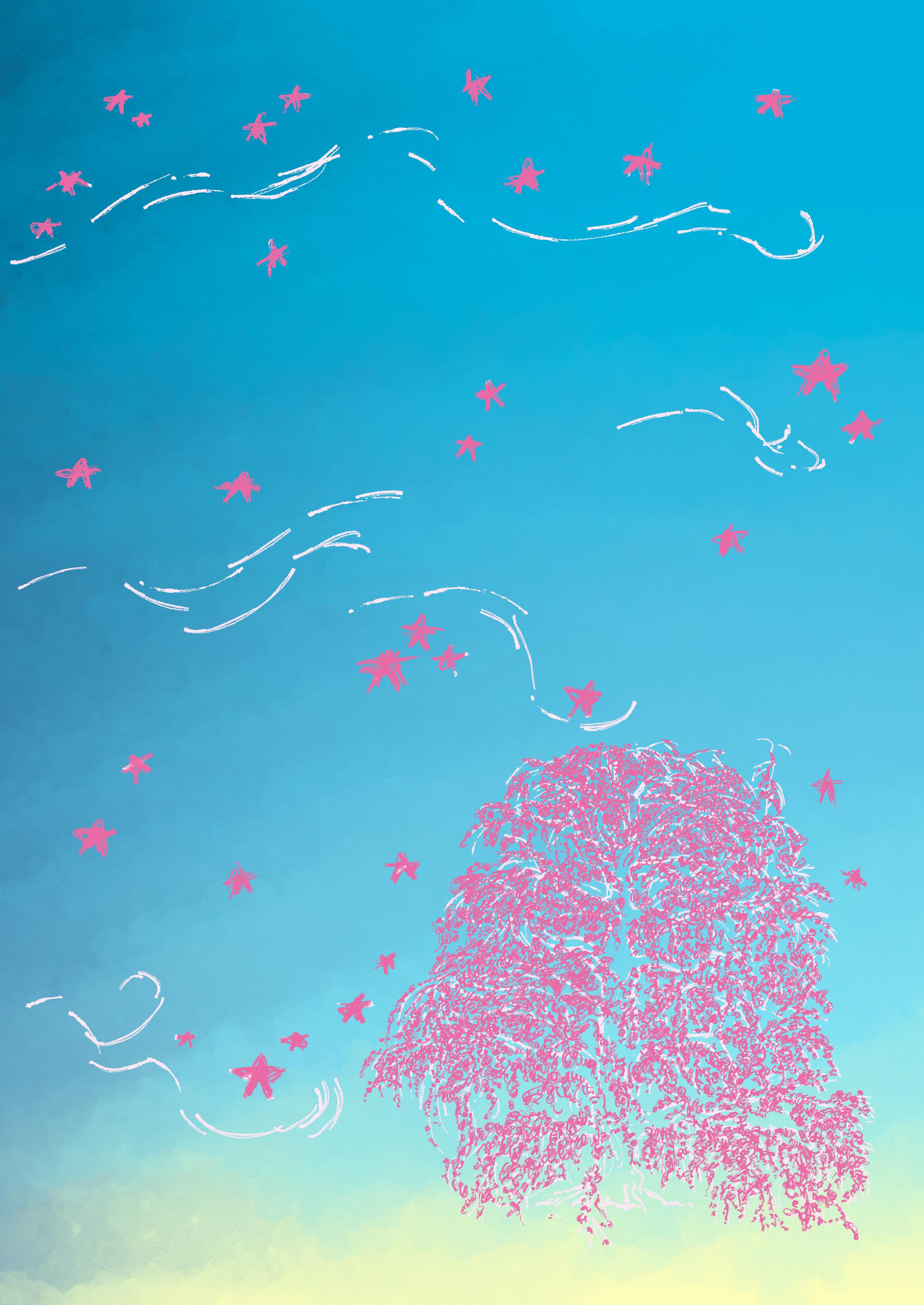
I haven’t always had quiet mornings. When I first moved west, the factory swarmed my days like locusts. Things are more secure now. And home is a scab that sometimes weeps but callouses form with time.
The death of my fiancé complicated my marriage. And First Brother’s conviction polluted my nuptial prospects. Third Brother’s acceptance into boarding school left me with nobody to care for. The following year, my father’s death etched a foreboding sense of misfortune upon our home.
With nothing but a meagre inheritance, I fled.
I completed my secondary education, found work at a millinery, and developed a love for women writers; for their work and for their selves. I never made much. But I had balconies, sweet yellow wine, and libraries. I saw the overthrow of governments, rare beasts, and the heartache of farewells.
From New York, First Brother would write to me. Year-by-year, he’d update me on his daughter. From suspicions that she was having sex to her graduation. Aiya, he’d say over the phone, I’ll save up. Make enough money to come visit you and Third Brother. And he eventually did. It was over crystal dumplings and dragon well tea that Third Brother finally unburdened himself of what he thought had occurred all those years ago at the cinema.
“Are you angry?” He asked First Brother.
“Not at all.”
And that was that.
NON-FIC
47
She will return to her hometown. She will cut a dark a la mode figure against the peanut fields and tin roofs. The children run around with phones, playing Mini World, a Minecraft rip-off.
The old family shack will have been subsumed by a neighbouring property. So, she will sit by the river and smoke to feel her mother and father. A cataract will be forming over her left iris, only to be taken care of when she has the funds. She won’t see the stray bull thistles hooking into her culottes.
Before her, streams of water will collide in a frothing braid. She will be entranced by the unbearable white. The scud will almost obscure a desperate flounder. She won’t move until the boy in the water glances off a rock, flailing toward her.
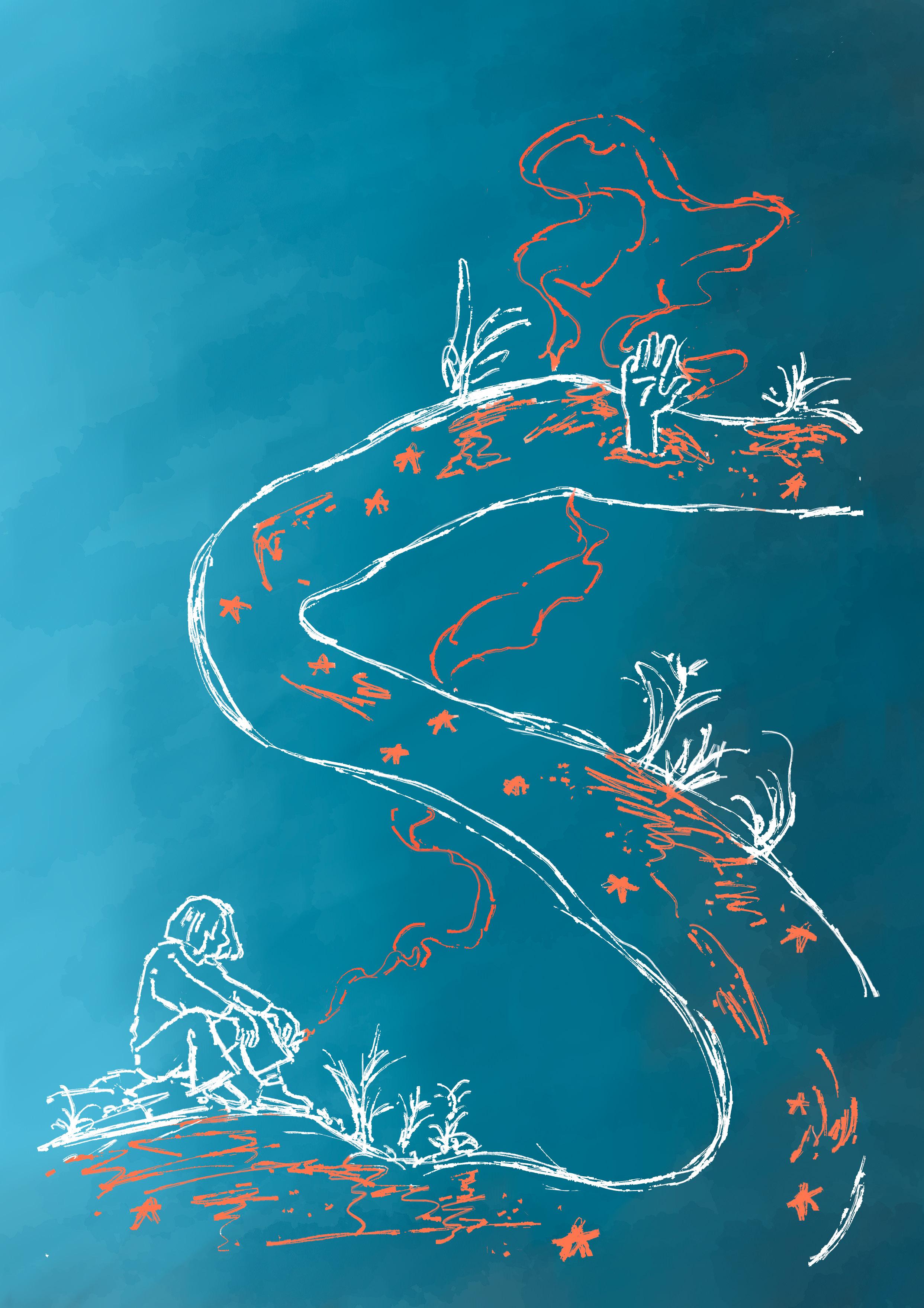
He whom she dredges from the rush will be her eightyear-old brother.
She will stumble onto the next bus and blaze through a packet of cigarettes. In a truck stop bathroom, she will stare into the mirror, trying to be bewildered. But she will know it as well as she knew to leave all those decades ago.
And she will know she would do anything to keep the decades since.
The upcoming years. She will return many times. The seven-hour ride on the tinny motor coach. Flakes of deadened hurt unpeel. The years unreel. Sloughing away at the callous.
In four years, she will be well-accustomed to the idea when she drags Third Brother from the shit ditch. She will set up a residence in the village and he will drop by
after school. And she will tutor him. He will have a natural proclivity for mathematics, but she wants to prepare him for entrance exams in other provinces. He will need to know his poets.
She will best Jin Bo at a brawl, who will become something of a best friend. And when First Brother returns from service, she will advise him that someone ex-military would make a useful ally; could earn him favour with the local government, too.
“Would he even want to associate with us?”
“The military gives them jack shit. He’ll be destitute and desperate for comrades.”
She will spread rumours that besmirch the integrity of her family. Bring shame upon their father, worry upon Third Brother. While Third Brother is over for tea, the woman with the cloudy eye will casually mention how the gang will be meeting at the cinema next Thursday. She will know her brother and his pacifist ways, how bold he can be, how he thinks a good talk can resolve everything. And she will be there that night, as the fight breaks. And she will know what her brother doesn’t.
What her little brother will not know is that he stabs her fiancé’s chest. He will not know that her fiancé carries a Little Red Book in his inner breast pocket, a hard cover. He will not know where the abdominal aorta is, how to sever it cleanly, nor even how a man’s eyes sink glassy cold as he dies.
NON-FIC The Sister
The future.
48
 Artwork by Helena Pantsis
Artwork by Helena Pantsis
 Photography by Piper Jones
Photography by Piper Jones
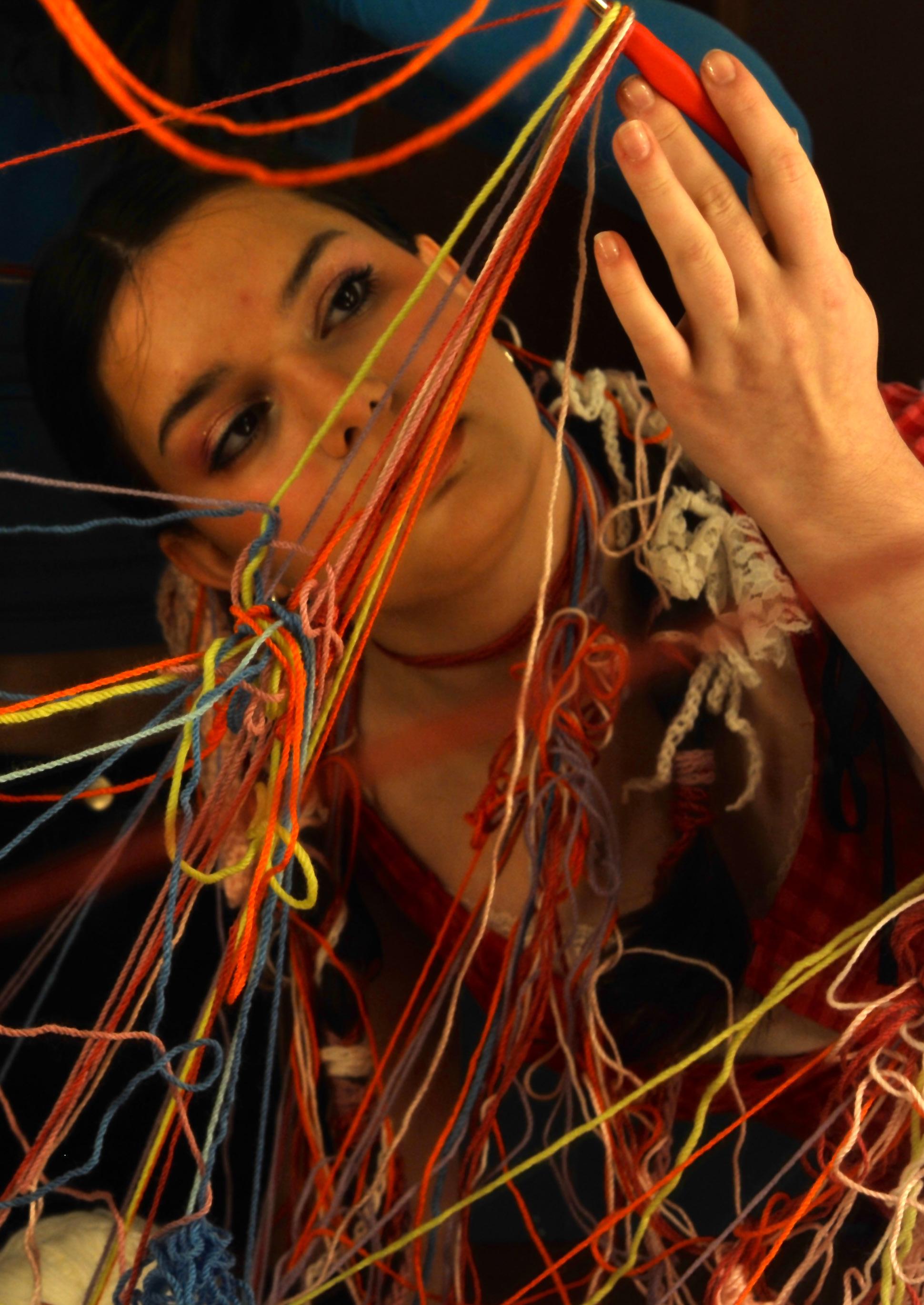
 Photography by Sammaneh Pourshmaneh
Photography by Sammaneh Pourshmaneh
 Artwork by Sara Yadav
Artwork by Sara Yadav
 'Here's
'Here's
looking at
you' by Lauren Luchs

Artwork by Sammaneh Pourshmaneh
Radio Fodder's Declassified Gig Survival Guide



56



57
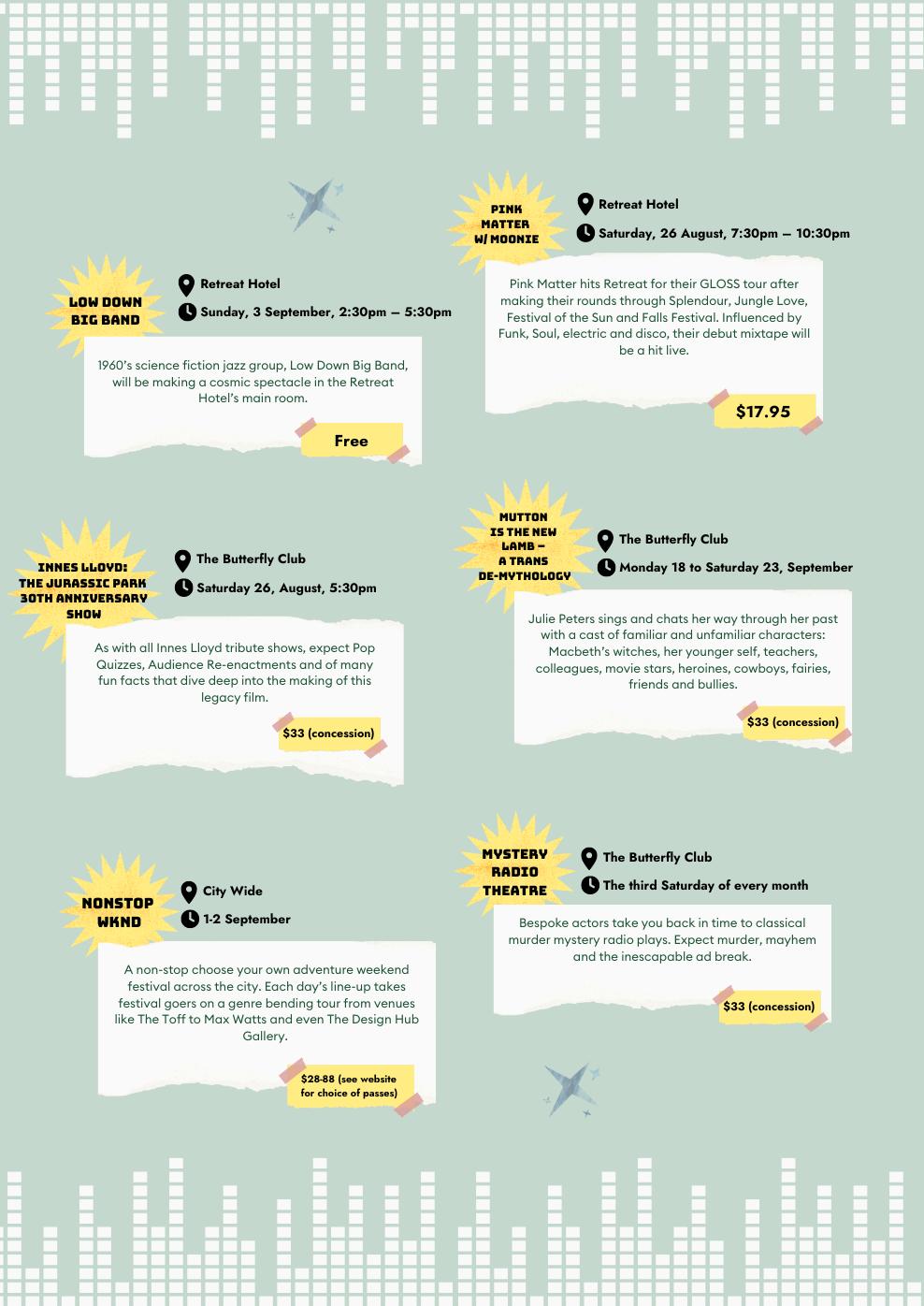

58
The New Boy: A Q&A With Cate Blanchett and Warwick Thornton on Their New Film About Faith and Survival
Written by Wildes Lawler
Sitting in the old but surprisingly comfortable seats of The Astor theatre in St Kilda, I could scarcely believe that during a Q&A after the first Australian screening of Warwick Thornton’s The New Boy, star of the film and industry legend, Cate Blanchett was asked a question I had submitted prior to the films screening. I had asked: “Cate, considering your career in Hollywood, was this role an important step for you given that Australian cinema often struggles to break through into American culture?” To which she answered with her natural comedic flair: “It’s sometimes hard for Americans to realise that they’re not the only culture,” receiving laughter and applause from the audience and Thornton himself who was sitting beside her. She continued to say, “Australia is an intensely magnetic place, and there are so many Australians working here as individuals, internationally both behind and in front of the camera, but will always return here.” And she has returned with yet another formidable performance worthy of international recognition, but Blanchett also made clear that she did not produce and star in The New Boy to act as “some white-knight” charging in to save Australian cinema and bring it to the foreground: “the Australian film industry doesn’t need saving…I just wanted to work with Warwick Thornton, fullstop.” And if there is one industry professional that can best represent everything Australian cinema stands for, it is Warwick Thornton; here, flexing his trifecta of talents—writing, directing, cinematography—that we have already seen him perfect in previous works such as Samson and Delilah and Sweet Country The New Boy is certainly Thornton’s most ambitious project yet, and whilst it certainly runs into some trouble in terms of a screenplay which appears a little too ambiguous in its structure, it is, by far, his most striking yet.
Set in a 1940s South Australia, The New Boy follows a nameless Aboriginal boy (Aswan Reid) who is taken in briskly by nuns Sister Eileen (Cate Blanchett) and the nicknamed Sister Mum (Deborah Mailman) at a rural monastery for abandoned boys. Less enthusiastic but abiding is farmhand George (Wayne Blair); working dutifully with both sisters to thrive in their care of these children, but also avoidant of the Church to prevent their discovery of the monastery’s Father’s death. The ‘new boy’—which soon becomes his given name—drifts about the monastery by his own whim. Something seems to drive him, and the audience quickly learns that the ‘new boy’ has some mysterious supernatural power. He can create a bright spark that radiates from his fingers and also seems to be able to heal wounds and give life—though the rules and range of this ability is never quite defined.
Blanchett feels flexible here; ticking off the box of playing a nun that every powerful actress seems to do in their career. As Sister Eileen, Blanchett gives little away until the very fundamentals of her character are challenged; playing her character with warmth when interacting with the children of the monastery, but frequently tapping into those manic and unnerving characteristics that we have seen so expertly executed throughout her career. Faith seems to be as dangerous as supportive here, and even when the former overwhelms her character, Blanchett stays true to her word and never seeks to pull focus or bring a Hollywood flare to her scenes. She is masterful, of course, but not the only masterful element. Thornton’s cinematography is breathtaking; vast, sweeping wide shots of the surrounding wheat fields, and stills that highlight the monastery’s isolation. Blanchett too touched on Thornton’s brilliance, commenting on how impressed she was with his adaptability; shifting with the environment’s natural light when it did not yield to his camera. There is a clear respect for land here, and when considering themes of survival and his own Indigenous perspec-
tive, it feels fitting that Thornton should let his visuals be guided rather than manufacture them.
Thornton shows his proficiency in more than one chair though. You cannot watch The New Boy and feel he had his work cut out for him. Though he expressed to us his anxiety about directing children unfamiliar with the industry, the entire cast works seamlessly. The Lost Boys of the monastery by no means give ground breaking performances, but they are united and wholeheartedly authentic. Pulled from the nearby town of Burra, each day on set bought a rambunctious bus-full of boys which Thornton feared would be impossible to wrangle, but nothing could have been further from the truth. Blanchett expressed her awe at how supportive these boys were of one another despite them all traversing uncharted waters. But most importantly, they supported lead Aswan Reid unlike anyone else she had seen in the industry; accompanying him to every single scene he had—even at the crack of dawn—to help him feel more comfortable. It certainly pays off, as Reid gives a phenomenally self-sufficient performance. His character only delivers a few one-word responses, but Reid is able to embody everything the ‘new boy’ stands for through movement alone. He runs when threatened, dances when happy, and, at times, takes part in religious activity of his own accord. But he is a character full of contradictions; his running can easily be caused by a drive to arrive at a particular place rather than flee from where he currently is; his dancing can be taken as blind assimilation to behaviour he does not understand, as can his sudden and unsettling identification with the monastery’s new cross of Jesus Christ. There is an interesting inquiry into religion and its moral implications on unfamiliar subjects happening here, and for the most part, it lands, due to Thornton’s screenplay. However, it is the writing around the supernatural which proves the most beguiling of The New Boy
There is a lack of closure which the audience desperately needs. While the lack of addressing the full breadth of the ‘new boy’s’ supernatural powers certainly taps into the magical realism genre, its stark contrast from the arid fields that surround the monastery naturally point out its peculiarity. Sister Eileen thanks God in her prayers, seeing the boy as some sort of divine force, but George eventually sees his abilities as threatening. Of course, this conflict is essential for Thornton’s screenplay—without it, there may be little here for the supernatural to latch onto—but either way, the ambiguity of how his abilities function create a grey area where connecting the dots seems more difficult than it should be. Some degree of explicitness feels necessary for the film to reach its full potential. Still, Thornton may not be aiming for something fully defined with The New Boy, and there remains just enough that is being done right that makes it all worthwhile.
Perhaps things can be summed up by a poem Thornton sent Blanchett during lockdown, which she recited for us aloud after The New Boy’s screening: “The new boy is not evil, the new boy is not entirely innocent, the absence of his family means he has had to learn to survive, and survival has its price. This film questions all faiths because it is possible for one faith to exist, then it is possible for all faiths to exist.” By Thornton’s own criteria, he certainly got top marks. Looking around at the faces in The Astor, I saw many looks of intrigue. Whilst it would be more rewarding to have audiences spend time considering why everything on the screen is happening, rather than how, there were still very few looks of boredom. Thornton’s world building here may be weaker than that of his previous films, but when something is shot and directed this beautifully, it is a sweet and easy punishment to take.
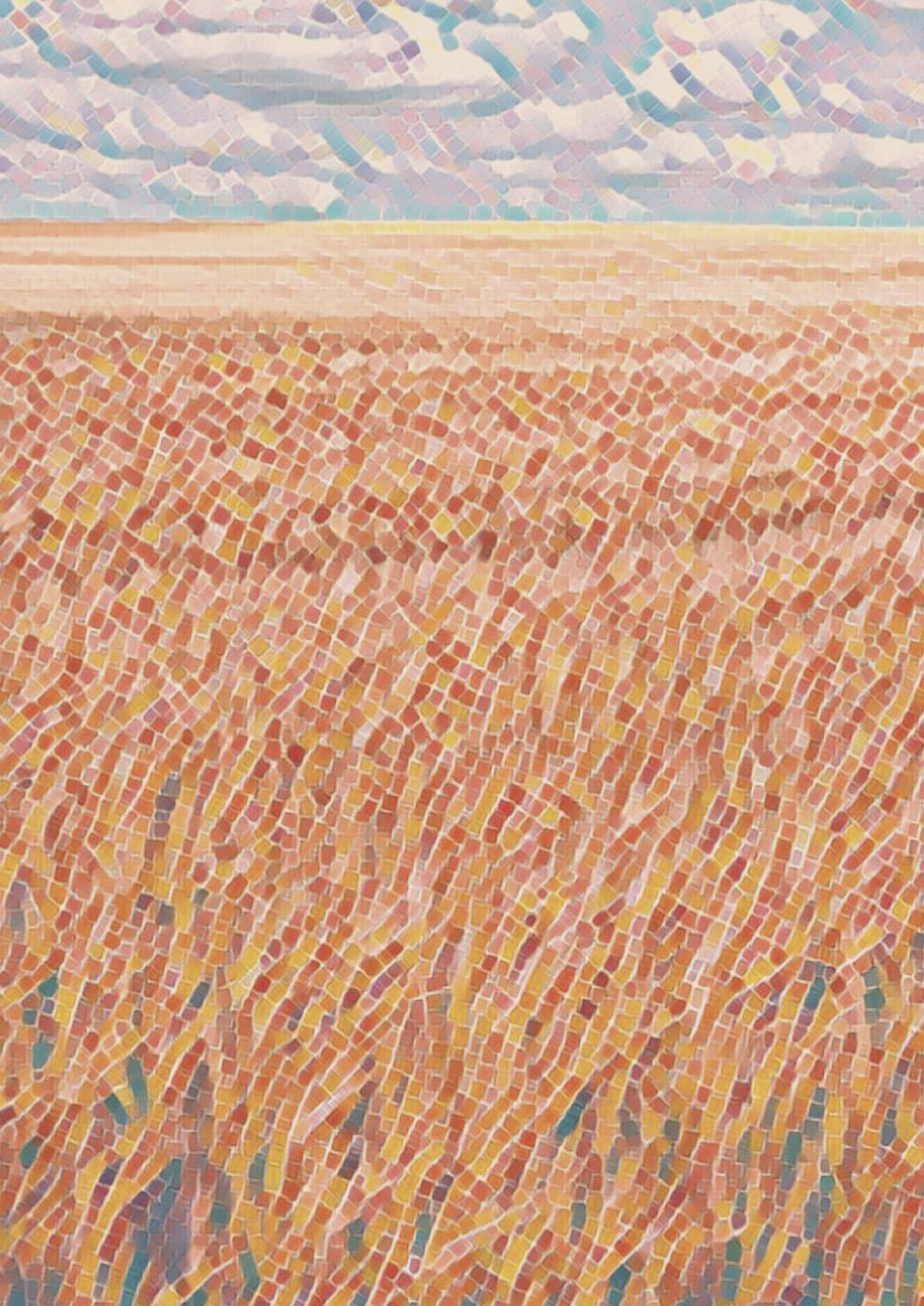
FODDER
59
Content warnings: References to Indigenous deaths in custody; mentions of deceased First Nations people
Written by Larissa Brand
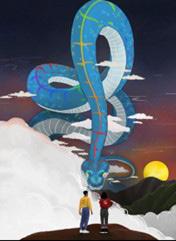
Shadow Spirit is a reimagining of Indigenous stories that unites the past with the future, located in the Flinders Street Station Historic Rooms. The exhibition is part of the Rising festival and is curated by Kimberley Moulton, a proud Yorta Yorta woman. Kimberley has been curating for fifteen years and currently works at the Melbourne Museum as the senior curator of Southeast Aboriginal art.
In this project, she invited Indigenous artists from across the country and Torres Strait Islands to contribute pieces that addressed the exhibition’s five key themes: spirit ecologies, the in-between, absent presence, the guides and weaving time. Kimberley says these themes “have been informed from many years of [me] hearing cultural stories and considering what systems of knowledge lie within them.”
The Flinders Street Station Historic Rooms create a transportive atmosphere that encompasses you in its shadow as you walk down the hall, hearing the echoes of birds and choruses of songs in the distance. The peeling, heritage-listed walls have seen better days but provide a backdrop to travel through time deeper into the country’s past. Kimberley’s voice works as the audio guide that accompanies you through the exhibition and into the lives of the artists’ culture and stories.
The exhibition begins with the animated work of Yarra Yarra and Yorta Yorta woman Aunty Zeeta Thomson. Mookies Around the Water Hole, which you can also see projected onto Hamer Hall, brings to life the story of the Hairy Becka and Min Min light. These stories ground discipline and respect of country and ancestors, laying the foundation of the importance of belief systems. This is followed by Zugubal: The Wind and Tides Set the Pace, which also sets the tone for Shadow Spirits. The Torres Strait Islander artist Brian Robinson fills the room with the story of celestial spirits that influence the environment and climate. Together, this introduction to the exhibition intertwines how spirituality and nature are the foundation of Aboriginal culture.

A call rises out from the next room across the corridor. It’s a small triangle room made from earthen-dyed fabrics on which Paolla Balla’s piece, Mok Mok Murrup Yakuw, plays. The call belongs to Mok Mok, a female omnipresent spirit that flows through rivers and winds and, in this case, scared the heebie-jeebies out of me. The artist evokes the energy that Mok Mok holds, which captures viewers as the video transitions from long-nailed hands reaching through windows to landscape shots of bushlands and rivers, and the artist’s mother dressed in sheets appearing as the spirit between the trees. The video reimagines the malevolent spirit, which Kimberley tells me is used to scare children into obedience. However, she comforts me by explaining how all spirit stories have a duality, as Mok Mok is also a feminine protector of women through their past of colonisation and patriarchal societies.


NON-FIC
“The Shadows of History Are Never Too Far. Scratch the Surface and They Will Appear”; Shadow Spirit at the Rising Festival
60
Weaving Time (2023) by Dylan Mooney Zugubal: The Wind and Tides Set the Pace
Furthermore, political and feminist statements are made through the use of projection, which helps the viewer empathise as they are transported visually into an artist’s world. Women are celebrated across other pieces such as Peert Koorook- Guardians of Women’s Country by Keerray Wooroong/Gunditjmara woman Vicki Couzens. A bandicoot, much larger than life-size, is centred in the middle of the room. Projections of black and white faces swim across the bandicoot’s body and symbolise the ancestral spirits of women’s country.
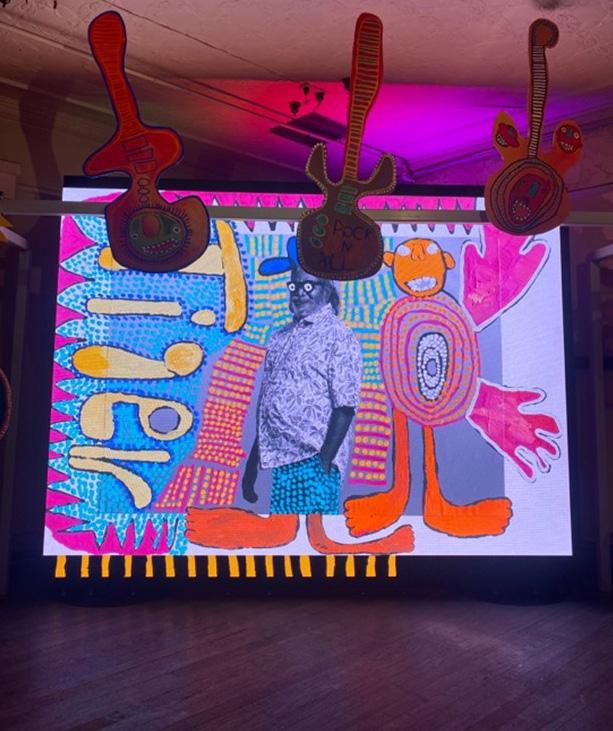

However, projection can also be used to create the illusion of the merging of past and present. Judy Watson, a Waayi women, uses her artistic practice to confront the centuries of Indigenous deaths in custody. This is portrayed by a video of the land under Flinders Street Station and Birrung Marr, symbolising the stolen Wurundjeri land. Watson takes advantage of the modern visual technology to juxtapose the past and present, allowing her to reclaim what was taken from her elders.
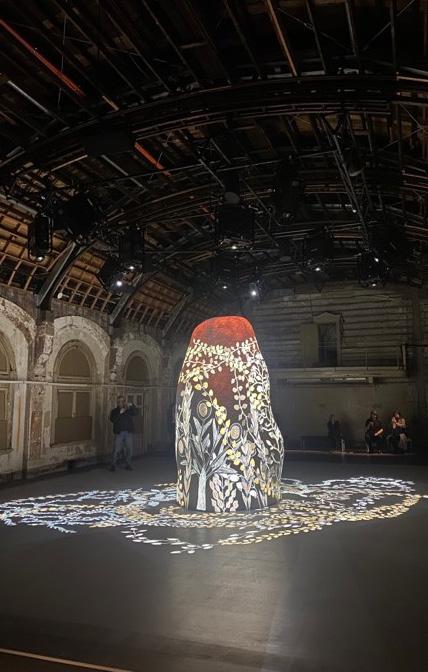
I am also invited to witness spiritual connections to country through meditation-like practices. Technology allows these sacred moments to be preserved and witnessed by many. Rooms have been turned into atmospheric retreats, such as the spirit ecology constructed by the Maningrida Art Centre that revolves around the waterhole where Mimih spirits reside and the York York mermaid swims. Furthermore, a dreamscape constructed by Dylan Mooney in Weaving Time showcases the importance of dreams in connection to elders and passing on traditions. The room creates this mood through the large symbolic rainbow serpent suspended from the ceiling and the calming projection of animations and sounds that resemble a dreamscape. These pieces create imagery that guides outsiders to a deeper understanding of Indigenous spirituality.
The sombre mood I find myself in while learning of how the artists connect to their country dissipates as I walk further along the corridor. The past collides headfirst with the future in the Way of the Ngangkari, by award-winning film director and cinematographer from Kaytej, Warwick Thorton. In this piece, he humorously compares healers from his family to real-life Jedi who have been the heroes of ‘healing the sick, fighting evil, travelling hundreds of kilometres in the desert’ for centuries.
At the same time, the darkness and silence of the corridor is broken by flails of colour and the thunder of an AC/DC song’s bass, from a work by the Yankunytjatjara artist Tiger Yaltangki featuring singer Jeremy Whiskey. These pieces portray how popular culture can be used to bridge the gaps between the culture of the past and present in a way that is digestible to a diverse audience. The exhibition then closes dramatically with the centrepiece, Rarrirarri, located in the ballroom. The room is dark except for the Mulka Project’s artwork of scurrying termites being projected onto the large Yolŋu (termite hill) in the centre of the room. This piece pays homage to the now passed Mrs Mulkan Wirrpanda. The Mulka Project was made in her name and is run by her sister and grandson. Her incredible knowledge of plants and foods is portrayed by the beautiful plants that wrap themselves around the Yolŋu, and Mulkan is materialised through her footprints and her voice calling in the spirits of the Dhudi-Djapu clan. This piece encapsulates the exhibition title, as it feels like Mulkan lingers in the shadow that encompasses the large ballroom. This piece beautifully portrays how the past can be preserved, with spirits of the deceased being able to live on through artistic practice. The immersive and diverse works demonstrate how the First Nations community truly are masters of artistic practice. This makes sense because they have used it to communicate for centuries before da Vinci ever picked up a paint brush. Shadow Spirit demonstrates how stories and traditions can be passed down through media to connect the past and present to the future. Kimberley hopes that viewers will leave “understand[ing] that there’s many layers to cultural stories. They’re very real to community and land.” This intensely thought-provoking exhibition marks a pivotal point for the Melbourne art scene progressing towards embracing and celebrating the traditional art of Australia.

NON-FIC
61
Rock N Roll (2023), Tiger Yaltangki and Jeremy Whiskey
black hole brumby
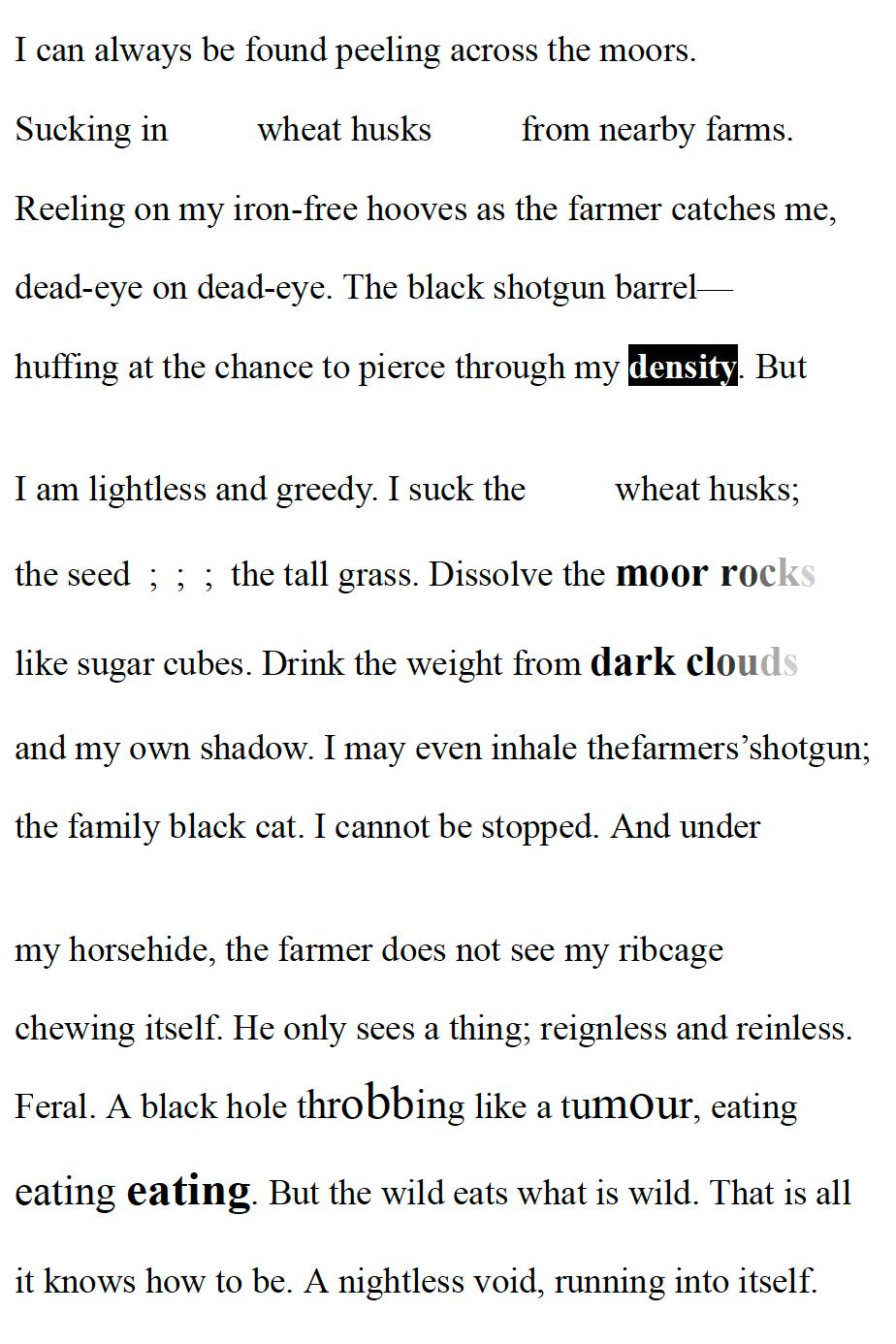
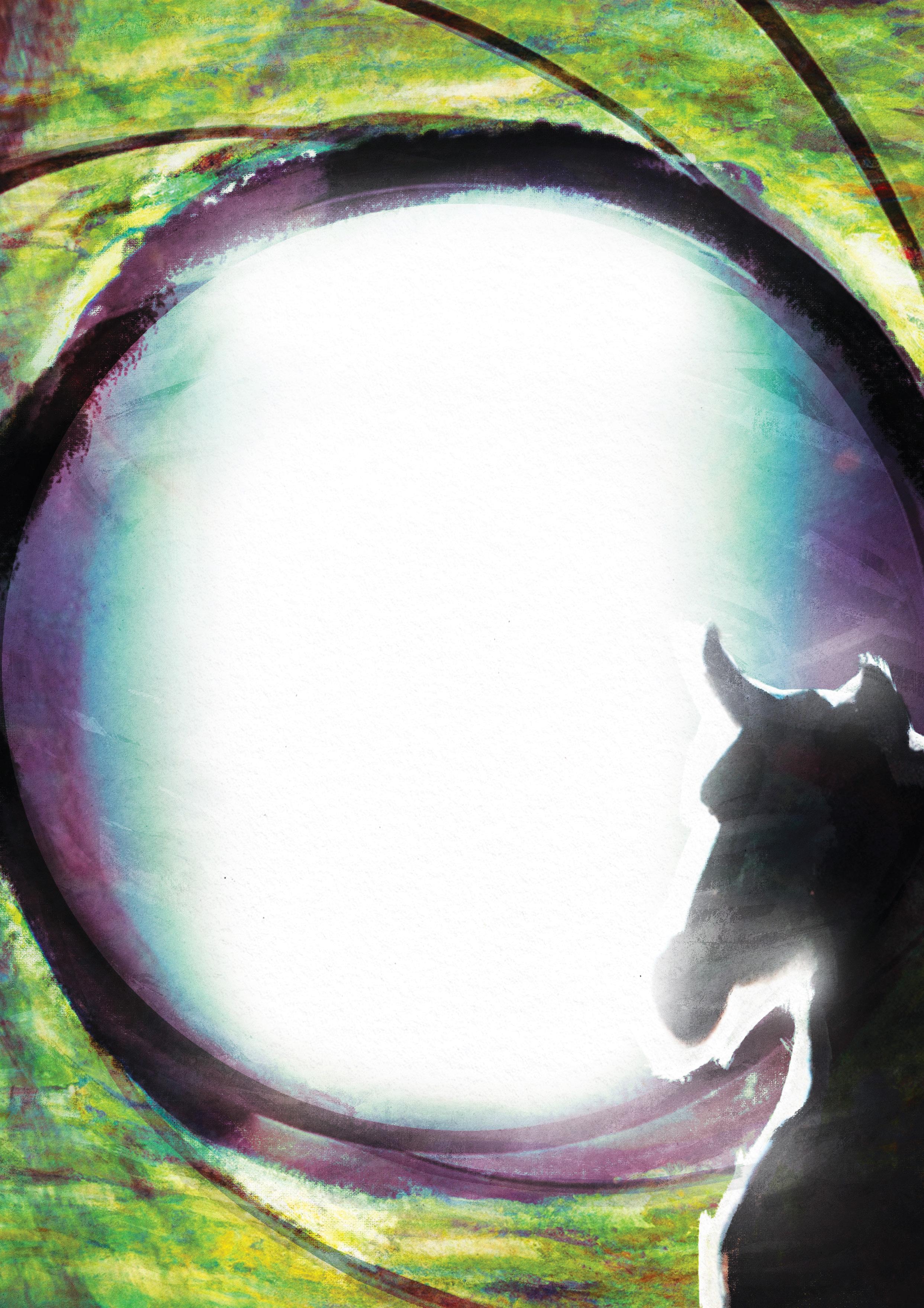 Written by Wildes Lawler
Written by Wildes Lawler
CREATIVE
62
Illustration by Jacques CA
I met my first best friend when I was three She told me she was from another place, another time We would talk for hours, play with our stuffed animals, makeup stories about far off lands, well into the future, far away in times gone past
We would go on walks run together explore our shared home our shared universe in vivid detail scenes of blue skies and green oceans, of trees, rose bushes and scarlet sunsets We were closer than siblings at the best of times we were adventurers and storytellers We were truly, best friends.
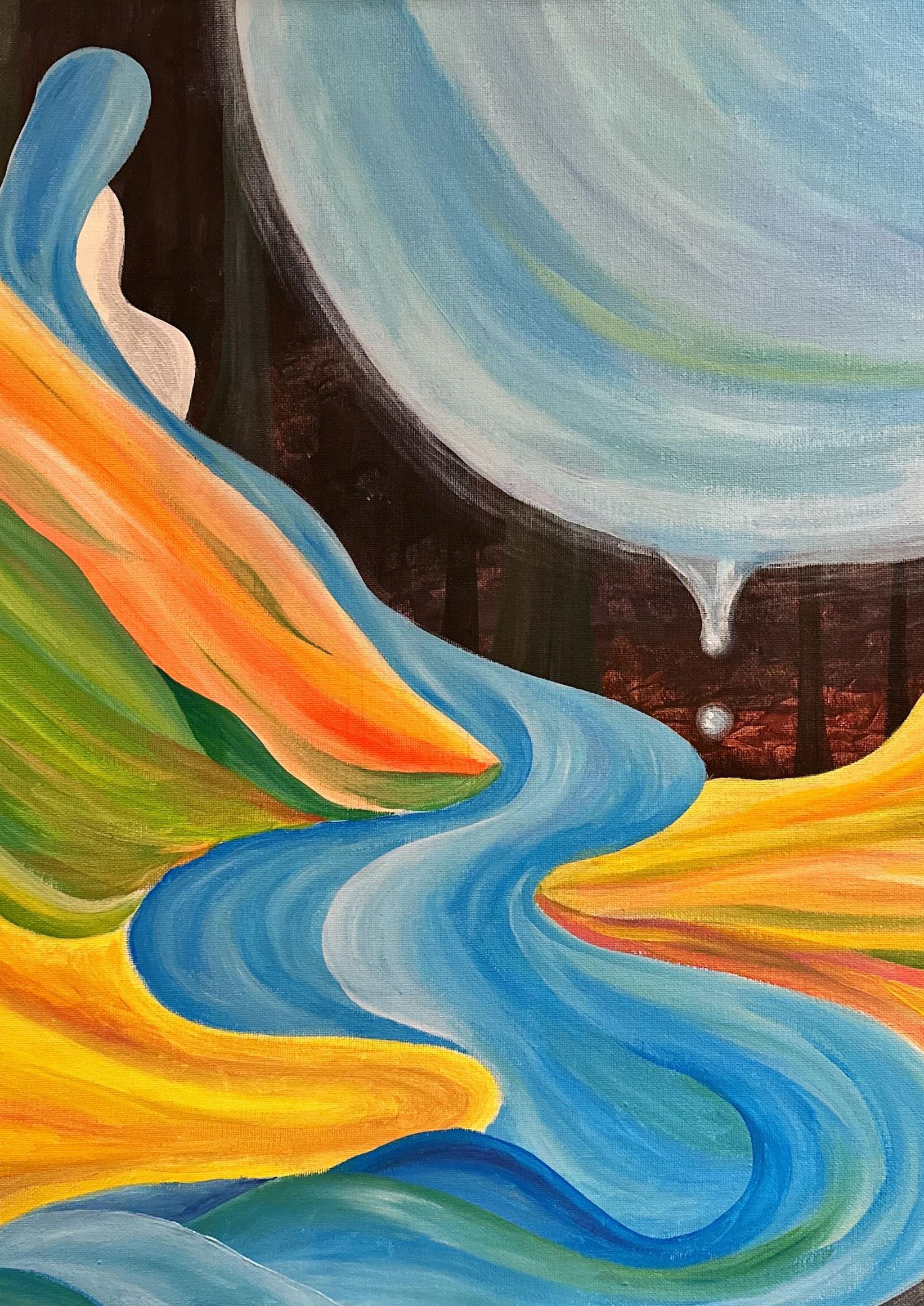
I lost my best friend when I was 9 Searched everywhere and nowhere she was no where to be seen no where to be heard I gave up Gave up on her Gave up on ever feeling her presence by my side again
I retreated into my comfort zone I made a dozen masks to hide my gaping hole in my chest my desperate need for her to come back to me
Content warnings: Mention of death, grieving
Intertwined
Written by Marceline Rose Di Bartolomeo
When my mask slipped, I Wept and Grieved for her absence for the lack of colour and vividness in my Life My Hopes and Dreams Gone. But eventually I shed no more tears about my first and best best friend.
I found my best friend when I was 24 going on 25 She was in the first and last place I looked the recesses of my own mind Finally I had found her again the missing piece of my Psyche
Now we tell each other stories go on walks and explore lost memories We forge new paths together form new memories, new friends We are best friends but this time it's different Now I won't lose her again and she won't lose me
We are two sides of the same coin in sync with the universe, and all its denizens We are one, and we are two I have found my first best friend and we have so much to catch up on.
CREATIVE
63
Illustration by Tina Tao
The blunt pencils speak of yet-written words, The empty records tell of yet-played songs, The off-key piano chants broken thirds, To monochrome photos, faces long gone.
The cracked paint laments of incomplete art, The dusty shoes stain with untrodden steps, Yellowed letters, nothing left to impart, No hiding, no secrets to be unwrapped.
Now they sit quietly, lifeless displays, Orderly and neat, behind large glass panes, All hinting at the missing, bygone days, Untapped potential of a long-stilled brain.
And this is all that’s left, all that remains, Some crinkled paper and some dried ink stains.
a museum of graves trickling time
passing feels faster than each meeting feels briefer as time ticking feels shorter and shorter ticks..!
but we’ve only just met
and now we’re saying… already saying goodbye?
there was a time when life felt like an eternity that would never end people stayed forever in our lives but I know better now, that people leave each encounter is fleeting grasping on to people, places, things slipping like memories and flies trying to defy time
– failing always, every day we’re:

1. growing older years shortening
2. learning more we’re mortals our hourglass still runs…
Written by Jessica Fanwong
CREATIVE
64
Gently the wind Flurries across the plains passes Through and fades away
the trail of the wind intangible
these hands I can barely faint and fading ever falling through these empty shadows that cannot hold anything sand falling falling specks gather and disperse each minute molecule I call mine disperses out of my control; how much of me is left to languish among the rubble? what remains?
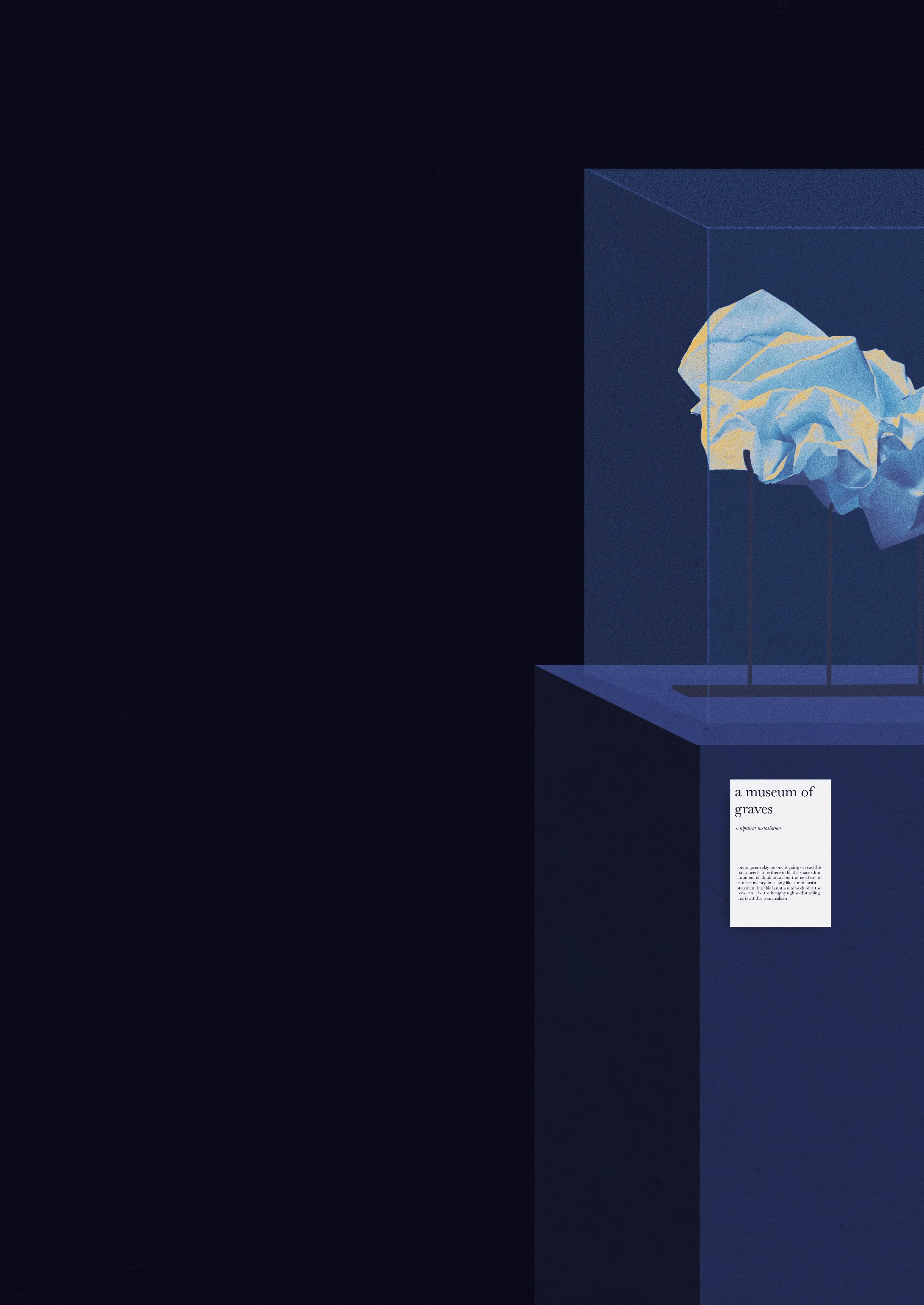
CREATIVE
y t h e s s l d w o t t n i r n s h n c i p e a n d f a d e f l a a l g h e s g u e s p a r o u a w a y r r i s s e s t h
Illustration
D 65
by Duy
Narcissus
The willows grazed the flat water in winding lines. Among the rattles of copper finches and the insistent (but ignored) refrain of fat pigeons, they arched their delicate arms over a silent young man on the bank. He had been lying on his side for a while now, smiling at the water and occasionally spinning his right finger in circles on its mellow surface. A low hum ran through the ground and inside the mulberry-black beetles, and the willows wondered what he was looking at. The marble that had once proudly stood apart from the wild landscape was now eaten away by the slimy residue of rain, and this wider opening of the river was clogged and cluttered green with algae and lotus roots. Even the orange glow of a sun setting was veiled behind taller trees. But the youth never looked up from the water anyway; the willows had never seen his face.
As the day withdrew its incandescent beads from the inner palms of leaves, the willows became still and grey. A new set of voices replaced the birds of the day, owls with yellow eyes and nightjars with rough bark for feathers. Only the man continued his inexplicable gestures with the water, twirling his hand this way and that, reaching it out, and leaning dangerously close to the edge. He had not moved in weeks. The willows closed their eyes solemnly.
Splash. Bubbles came to the surface, but after a moment, the forest returned to its tranquillity. The man had jumped into the bottomless water himself.
He went in headfirst, arms outstretched, waiting to embrace the water’s face. If he plunged in with enough determination, he’d thought, it could not escape him, it must not. Instead, the night water was cold and frigid, and he had fallen in too deep. Something heavy was pressing him down towards oblivion, and the silver rays of moonlight were long, thin needles he could not hold onto.
He turned to face the darkness that awaited him, the eerie touch of black vegetation that made him shiver every time they crept up on his body. The persistent hand on his back was burying him deeper and deeper into nothing, and everything, and a shadowy face at the bottom of the pool…
His eyes swam. Devilish flowers, their petals so ravishingly thick, colour so rich and vibrant beaming, beaming their neon lights across his vision. So vivid, so real—yet when he moved his arms to touch their vibrance, none but thick water swished between his fingers. They were there, then they were gone. Everywhere his head moved, there were more flowers, unreal faces, so alive. They were smiling, shining radiant, but something tugged on his heart somehow, the shadow of a face that sank in the murk. No—he shut his eyes again—he must not lose it. The flowers were whispering so, the pestilent lilies hissing and spitting electric pollen with their tongues: beauty, beauty, but it was unreal. He seemed to be shouting at himself.
His wretched grasp for a stalk or the downy silk of a petal caused the flowers to part slightly and reveal a window. It was glowing wine red in the midnight haze, and the youth’s head felt heavy, drunk. A figure on the balcony, wiry fine—a silent mannequin against the show curtains—was swaying melodically, arms falling to rest on the railing, skin on dull brass. His eyes could rest again, as the drumming of the flowers moved to the sides and the window presented nothing of interest. The mannequin had no face, and even if it did, it would look nothing like the one he was looking for.
The watery space slowed. His whole chest seemed to be puffing up, as though in anticipation; then the big drop came, a momentous whoosh wherein glassy tendrils pulled tight on his ankles and tugged him further and further into the window He
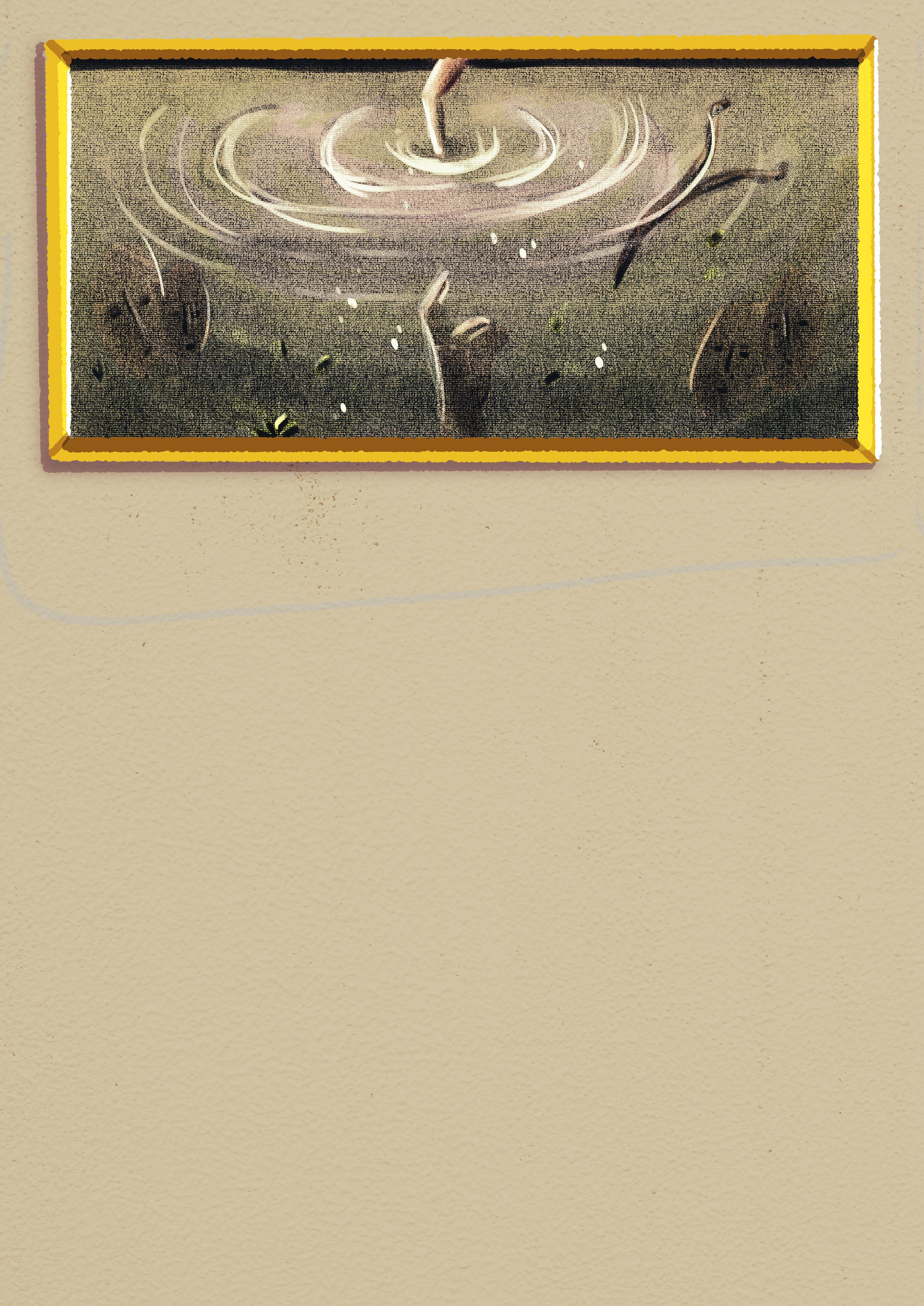
CREATIVE
Written by Angela Yu
66
Illustration by Emma Bui
saw figures, so many of them, human figurines of different proportions and expressions, that each held different feelings altogether; yet he knew somehow that they were all one with the darkness. They were the face’s vanguard, its unseeable skin, the precursors of what he came to be: what he might have been. Young and old, with varying talents and vocations, each figure was a rotating question, brilliant and harsh, scarring his soul with what might have been, though it made no difference in his mind.
While his soul remained silent, he tumbled through the hidden weeds in contempt for the faces that could not compare with the one he loved. Bends of galvanic light morphed into fluorescent goldfish, whose gills and tails stretched outwards to become eyes, eyes, eyes, clicking away their lids in the pitch black, blinking, blinking, and a view from the highest balcony in the world, but it was all blurry blue, and the view was distorted, askew, turned on its head, because here was a meteor shower, and the suns, all the suns in the world, were colliding with each other and exploding on his head, the golden head, and it seemed as though a superstar was headed straight for the earth…!

The lights went out.
And where was the face at the bottom of the pool?
He jerked his head around, hoping for illumination. Above him, the darkness faded to blue, vivid blue, vivacious sky, and he realised his head was above water; clouds, turning whiter and whiter, rippled through the thick blue, and he suddenly heard the rapid speed of air. With his ears unblocked, clarity returned to his senses. The mist lifted from his mind, and what he saw and tasted was lucid. In his mind’s eye he saw himself falling off
an island, his body carried by a vertical stream of water. It was a magnificent place—he could imagine its crystal pools when he closed his eyes. The trees were tall, their leaves luscious green, the light so exuberant, it was almost as though the willows knew that he had found his face. For he had: When he stood up a bit taller, bent his back so that he faced the stream, he could see it again, and it was closer than it was before.
And perhaps, soon, he would dive in and try again.
CREATIVE
67
Content Warning: Mentions of death, blood and violence
Mirror
Written by Matthew Lee
Look—another me bathing in the current, reflected in a thousand fractures melting into one. You reach out to me and grope my insides with cold, wispy fingers, a coroner inspecting for anything salvageable. A watch, a photograph of a camel. A broken cross, wrapped in chains that choke in rust. Metastasis bleeding out its silence to a soul asleep in a bed of conjugations.
I have tried waking it, but I do not know where the smoke is coming from.
Follow me, spread your care, and perhaps you will see the difference—where grass falls before you and the sky hangs low, and the people wear their livelihoods around their necks.
There passes my mother. She is very ill, but she does not know it. She retreats to her bedroom and lays there for hours, sinking into her consumptive cough. I have forgotten how she looked when she was younger.
The unscientific progress I make each day falls into numbered slots, colour-coded for kindergarteners who have already developed a taste for violence. Each morning I collect the propaganda that falls flat to deaf citizens, the desolate lyric that plays hourly from the auditory pillars.
Look—it is here that you and I greet eternity. The shadows of our discomfitures have crystallised into a singular reflection.
Yes, I am glad to have lived.
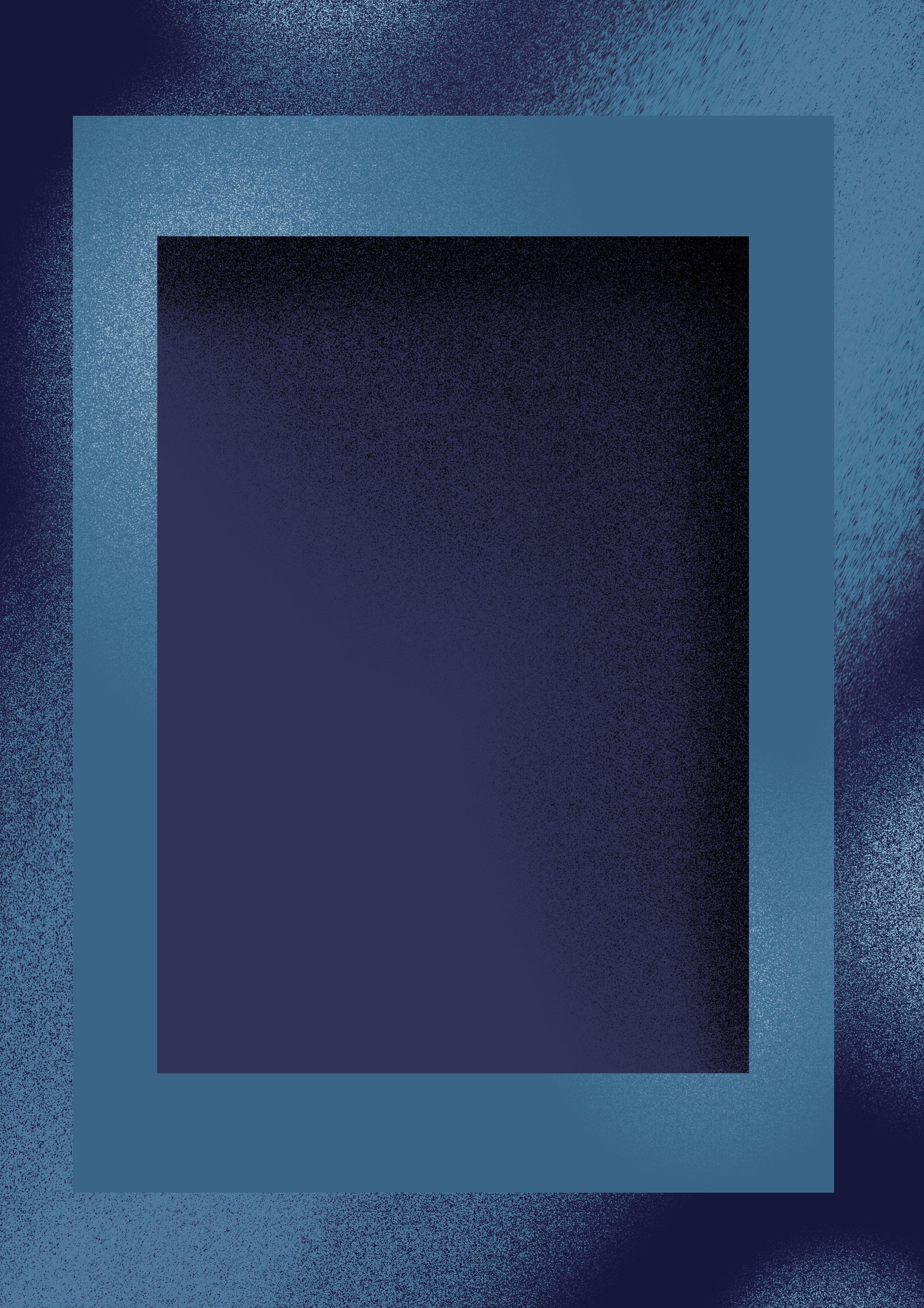
CREATIVE
68
Another Path
Written by Michelle Yu
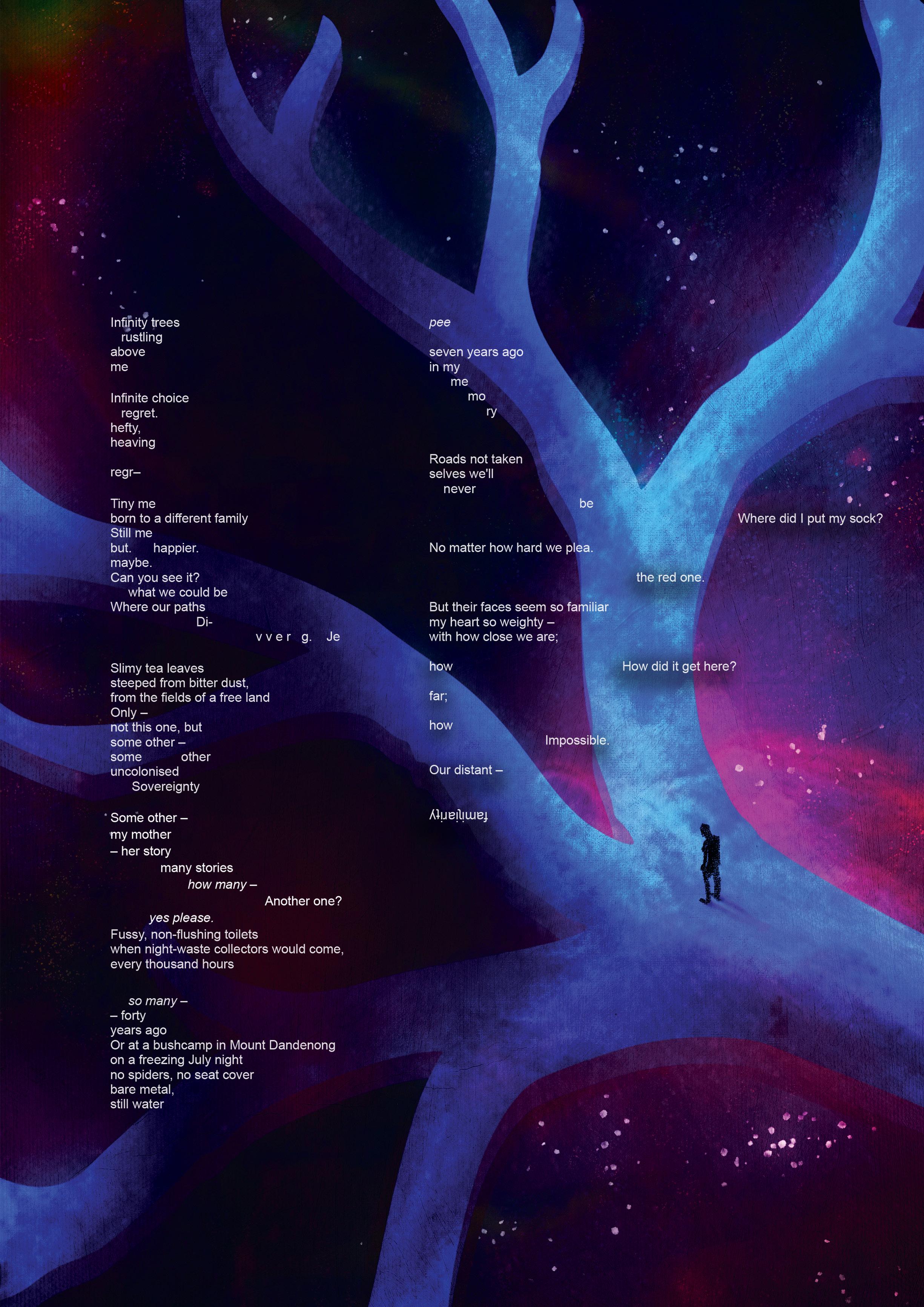
CREATIVE
69
Illustration by Jacques CA
Content Warning: Borrows Sylvia Plath's imagery referencing Nazi Germany, references to death, abuse and blood
Written by Nimrada Silva


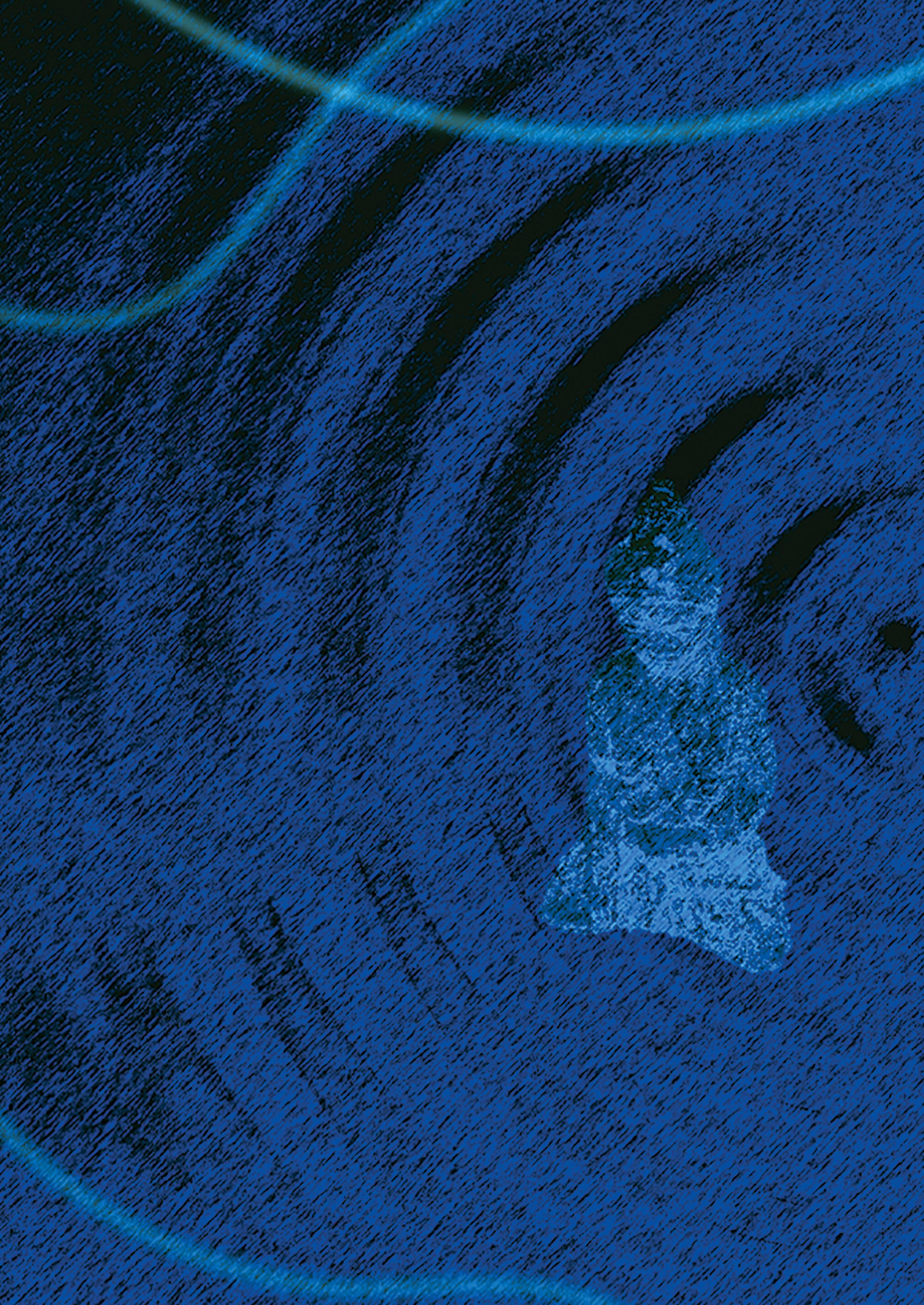
CREATIVE
70

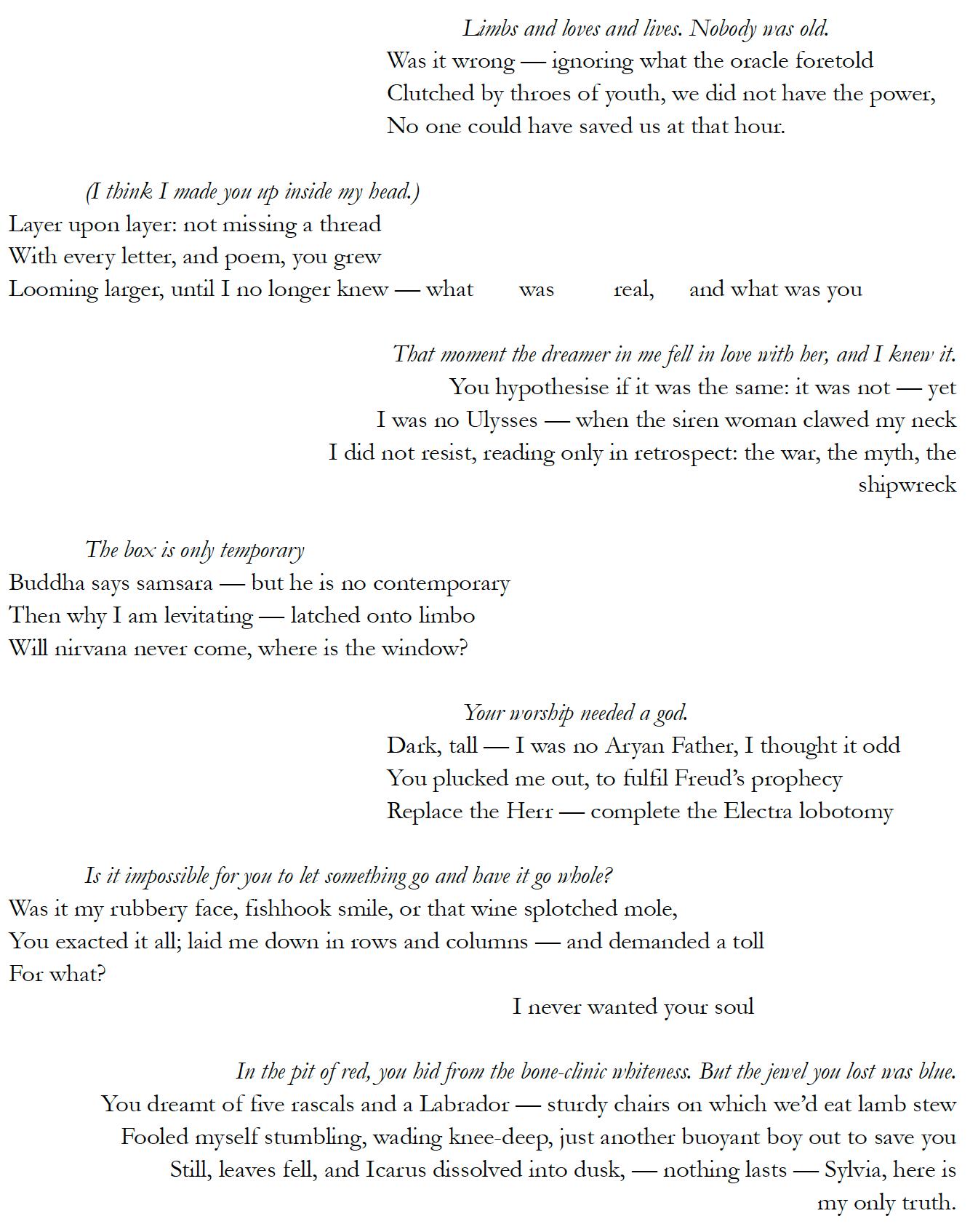

CREATIVE 71
Illustration by Zhuzhu Xie
Content Warning: References to blood, death and sex

Amor et Furor
Written by Nimrada Silva
CREATIVE
72
Illustration by Jocelyn Soetanto
do you think Pluto was upset the day he stopped being a planet?
 Written by Stephen Zavitsanos
Written by Stephen Zavitsanos
was he told on the phone or through a text?
did he go kicking and screaming or did he pack his desk beaming? maybe he went red like Mars or stayed cool like Uranus.
do you think he planned to retire until everyone came together and crafted the word “dwarf”
just to make him feel lesser? does he still hold that grudge or is he grown-up and mature? wait, none of these questions really matter because how should I feel when even planets don’t have job security.
CREATIVE
73
Illustration by Thao Duyen (Jennifer) Nguyen
Content Warning: References to death and blood
being quiet feels like holding in a sneeze
 Written by Stephen Zavitsanos
Written by Stephen Zavitsanos
when midnight has left me stranded and I search my phone like a mad man trying to find someone to talk to like if I don’t say what I want to say I’ll die in that same breath so I keep moving my finger against my sticky screen and attempt to find someone who isn’t asleep or out having fun because ruining someone’s night with my problems is so much worse than dying so I keep scrolling and swiping and taping and moving that finger until I reach the inevitable conclusion that there is no one for me right now and that’s probably fine so I’ll just take a minute and sit down outside this 7-11 and wait for the worker to let me in hoping that maybe he’ll speak to me so I won’t actually die holding in this breath that feels like a sneeze and I tell myself that I won’t be scared of those people also waiting to be let in because maybe they’re just like me waiting for someone to let them talk
CREATIVE
74
Two Branches
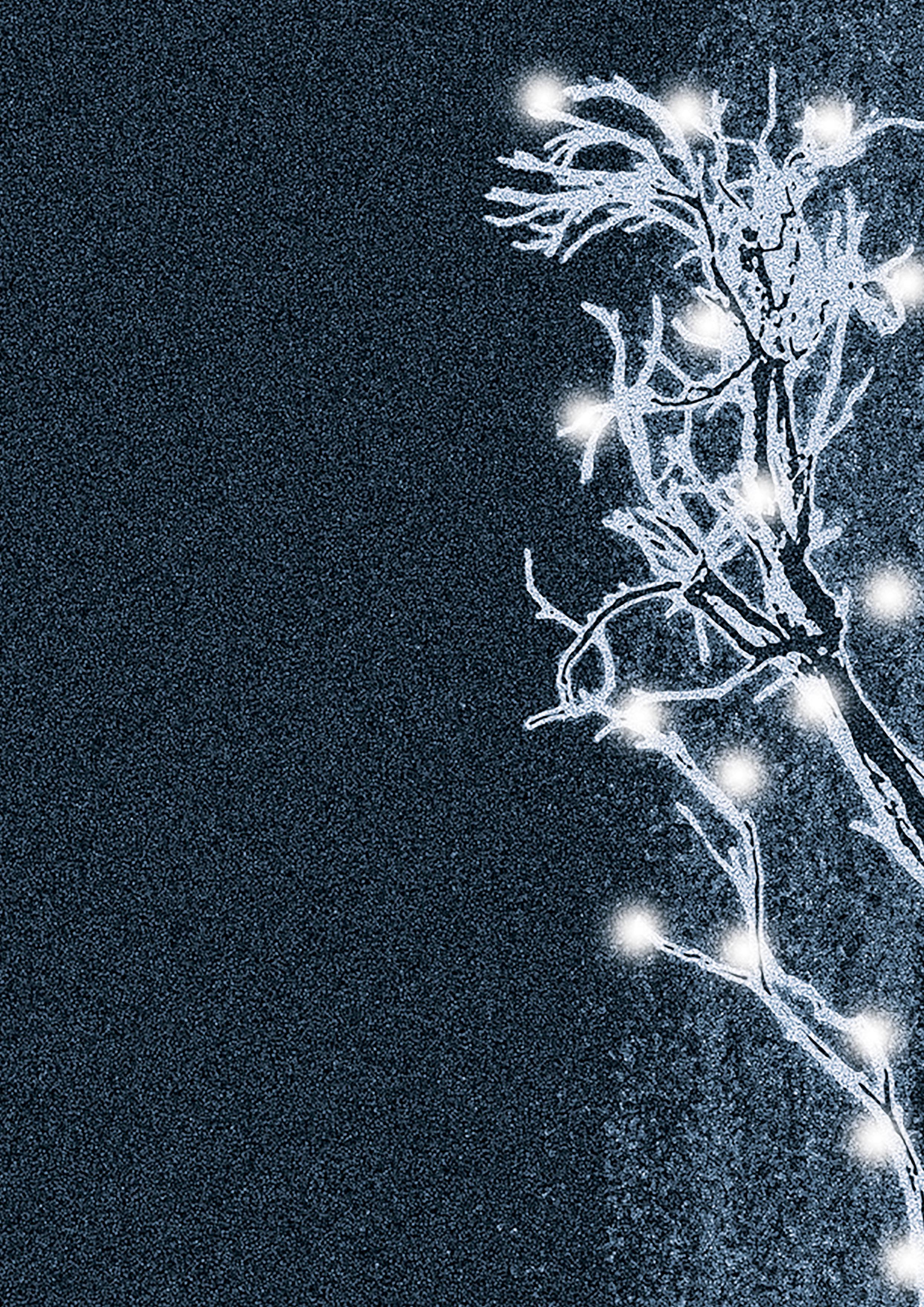 Written by Michael Leach
Written by Michael Leach
after Regina Spektor’s song ‘Blue Lips’ from her album Far (Sire, 2009) as well as this album’s cover art—an illustration by Brendan T. Sharkey (https://youtu.be/D2cei4urF3Y).
Regina Spektor singing about our speck of blue in the depths of space makes me contemplate the complex formulas & figures of acoustics as well as optics— the branch of physics that illuminates our limited understanding of how on earth light radiates, propagates & crafts colours for open eyes.
Regina Spektor… playing her blue piano solo in some room in New York makes me contemplate the complex formulas & figures of optics as well as acoustics— the branch of physics that amplifies our slender understanding of how on earth sound vibrates, propagates & makes music for inner ears.
Regina Spektor performing ‘Blue Lips’ stills my tongue & my mind, silences me into studying divine blueprints for all sights and sounds in the Universe.
CREATIVE
Illustration by Zhuzhu Xie
75
Written by Claire Le Blond

of
76
Illustration by Leilani Leon
Content Warning: Mentions
physical touch/ intimacy
Bleeding Marble: Medusa
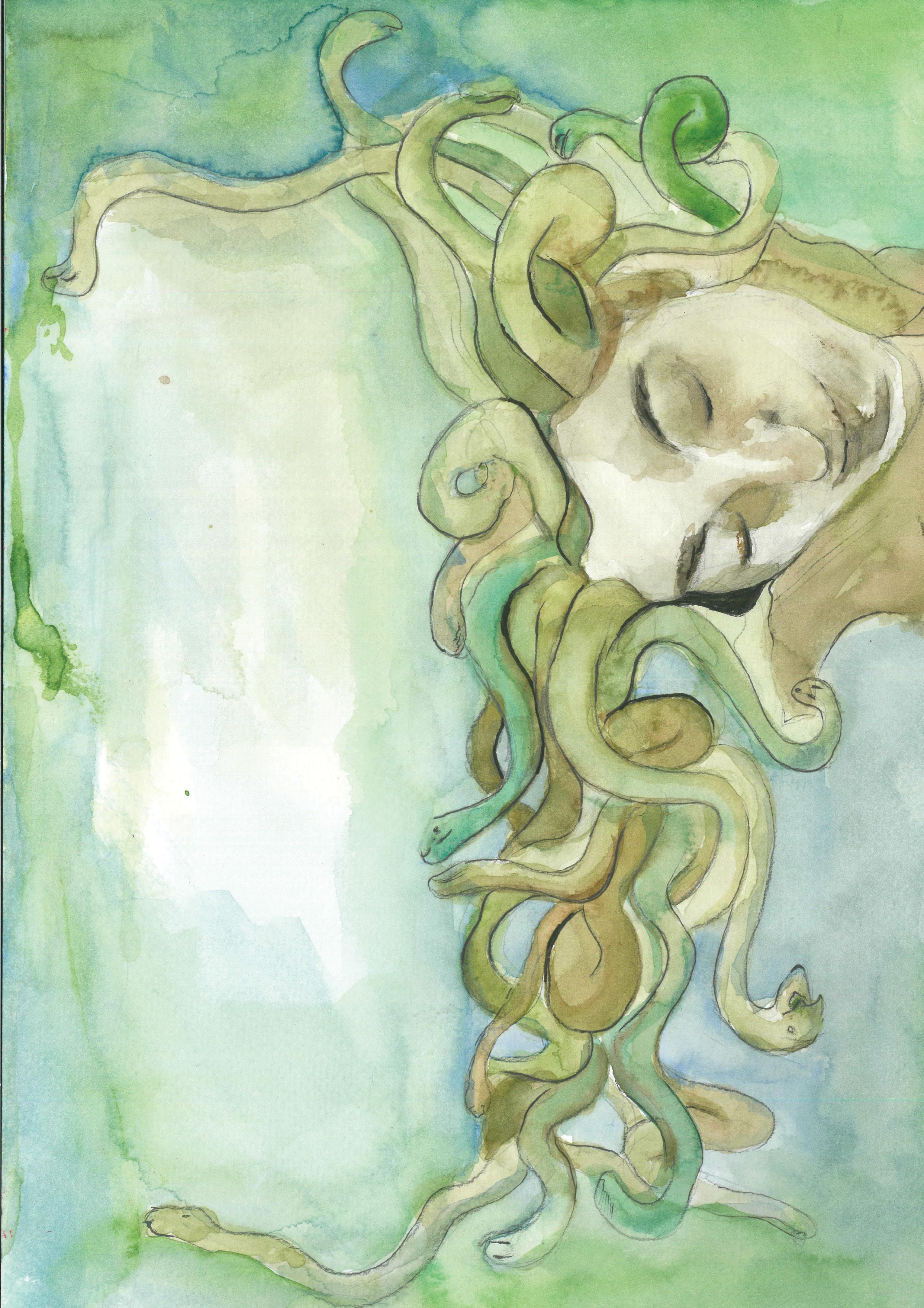 Written by Rhylee L.
Written by Rhylee L.
The devoted priestess who was wronged but still loved.
I was her white maiden
A priestess who drank and sung only of her I swore my life to my goddess
For I loved her, and she was with me.
A priestess who drank and sung only of her
I thought my future blessed
For I loved her, and she was with me
But the waters moulded a sudden tsunami, and took me away.
I thought my future blessed
A life of gold by her side
But the waters moulded a sudden tsunami, and took me away
My body defiled dark blue; I was to blame.
A life of gold by her side
No longer will it be.
My body defiled dark blue, and I was to blame
She formed serpents from my hair; I froze men stone cold – dead.
No longer will it be, lush olive shades
I carried his seed; her abhorrence blustered within me
She formed serpents from my hair; I froze men stone cold – dead
My diabolical head – now a mortal’s quest.
I carried his seed; her abhorrence blustered within me
My humanity fades, yet my love for her remains
My diabolical head – now a mortal’s quest
I prayed of her, in all the aching days.
My humanity fades, yet my love for her remains
I prayed of her, in all the aching days
She came for me in the shape of a polished shield
At last, I am with her again.
COLUMN
Illustration by Harriet Chard
Content Warning: References to non-consensual sex, blood and death 77
My thousand-year-old friend
The museum was still and empty, save for a few stray visitors walking around. Their quiet conversations echoed off the bare balls of the exhibit. Jenny wasn’t here yet. I’ve been waiting for half an hour, I thought to myself. I checked my texts. She hasn’t messaged me that she’s going to be late. I wandered over to an exhibit of a large glass panel affixed to the wall. It was a nice bit of workmanship, the glass thick and clear. How’d they attach it to the wall? Nail it in. Thick glass. Would’ve shattered with a hit. Cylindrical metal pegs were spaced on the edge. How’d they do it? The pegs were driven deep into the glass. Without fracturing.
Checked my phone. Jenny still hadn’t texted back. Where the heck was she?
Written by Michelle Yu
reached my hands out. Nearly there. Unghhhhh! I burst out from the darkness. Only—I wasn't anywhere I had ever seen. Another dream. Light danced across the space in front of me. But it’s not… light. It was an anti-light, a light that hinted at absence, at nothingness, full of it, bursting with it. Black, shimmering, it slinked over my arms and legs, curling around my neck. Dipped a finger into my ear. Warm, smooth, soothing. Was it trying to tell me something? I was going to know; I grasped at it, grasped, but all I could feel were my own clammy hands, clenched so hard that my fingernails dug into my palm and carved red pits. Hazy thoughts formed in my mind, something I am looking for—someone—moist clouds of opacity formed in my mind, meaning condensing, dispersing. One seemed familiar—wet, furry, brown. Broo? I reached out—
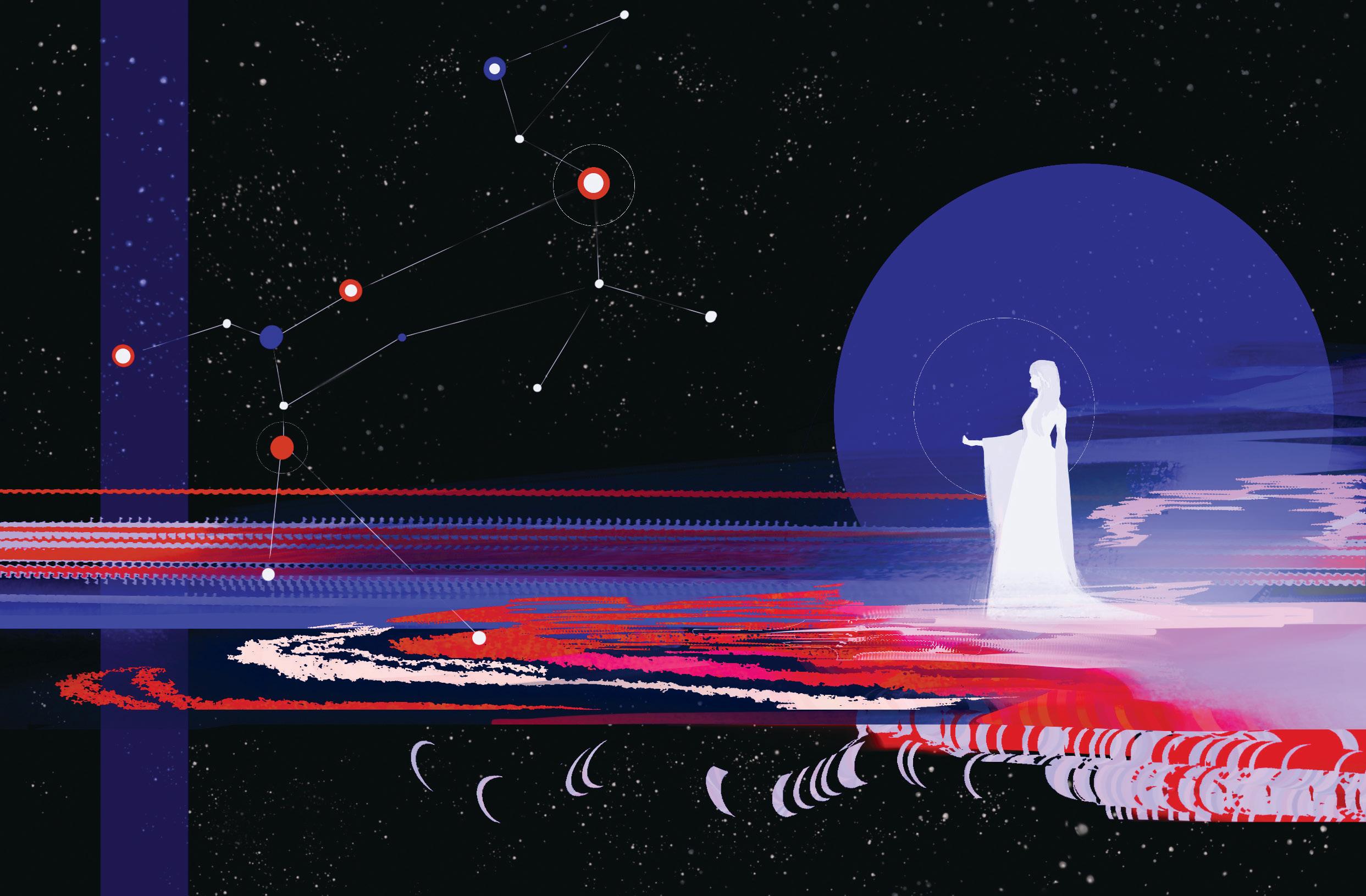
I woke up panting, my hair plastered to my forehead. My loose, holey, fouryear old socks had worked their way off my feet. I kicked the thick white quilt off my legs, the quilt protector still not put on since—when was it?—a month since that last time I saw him. Broo. Broo! Where are you? In bare feet, I stumbled across the cold carpet to the window, where I would see him, just outside. Playing. I leaned against the window, peered through it. But it wasn’t summer. The ground was bare, the grass died off; and all around, only dark shapes—trees. As the heat from my breath fogged up the clear, icy, glass window, I remembered
The fire. Crackling.
Broo, under the quilt. His body heavy on my lap. Nose moist.
Cold.
Autumn day.
Flames danced in the fireplace. Just a glass screen. It crackled again, the ASMR of wood burning, cracking, collapsing. Perfect illusion of fire. Peace. Joy.
Comfort.
Just a mirage.
I gritted my teeth.
Just a fake fire.
Just before he left.
And never came back.
The glass was pressed against my nose again. A snowflake fell. Trailed through the air, past my eyes, past the furthest edge of the window I could see unless I stuck my head out of the window. It was the first day of winter.
Canis major, read the diagram under my fingers. I was in the museum again. White specks spotted the black expanse. Nothing much else to do, without— … The room was still and quiet, as before. Alone again, but I wasn’t expecting anyone else this time. I tilted the thick, framed diagram so I could read under the reflective glass surface. “The main star of this constellation is Sirius, the 'Dog star',” the caption read. This constellation doesn't look like a dog. At all. Broo’s bark went off in my mind, clear as day, the force vibrating through my skull. He never looked like some tiny white speck.
But then I felt his fur under my stroking fingers, his weight on my lap, the crackling heat from the fireplace roasting my cheeks. And then I knew the feeling of being under the vast night sky, in a sea of susurrating grass on the savanna plains. A thousand years ago. Cradling a furry being in my hands. Dog, I would have said. Dog; me pointing into the night sky. My furry friends, sleeping in a pile behind me, and they would never die, they would never be lost, they would never be lost! Because they were up there, sleeping in the sky
No god or tv, no skyscrapers, no language, no writing, just me, human, and the sky, the sky all around. And Dog. My friend
And now I knew why the star was called… not Sirius, but
Broo, I whispered, staring into the white speck under the glass, surrounded on all sides by black light.
Straining against a great force, something big, strong… can’t pull away… I
CREATIVE
Ruoof
Soetanto 78
Content Warning: Grief and loss of a pet Illustration by Jocelyn
When Memory Outruns the Body
 Written by Abigail Brooks
Written by Abigail Brooks
God, grant me a hard mouth, one that wants a little less. Turn me into something gutless, blank, momentary. I keep imagining my own disappearance from the world; a sudden weightlessness, all my atoms dispersed as if in the first days of the universe. My body first a tremble of light, tightening, and then air, or a smooth wave of molecules.
I’ve been like this since you left: loose, particulate; even language a thing too slack to hold me –I slip between syllables, somehow lost. Outside the window, a bat circles a tree. In the blue of my room I am half-disappeared in shadow, breaths sonic and silvered by the night’s slow letting go of heat.
I think of a dark mouth exhaling.
I think of desire like a barb flashing in my belly, sunk like a root. But I don’t want to think of my body as something real or needful, so I think of sleep, a hard-eyed woman rowing me warily downstream. But you know, I haven’t forgotten what we were like when the summer was green and alive and you were the warm pith of November, the soft-limbed song of crickets. I think this is another of those things I forgot to tell you, or chose not to tell you. These night-lit hours are the hours I keep time, when, finally, all that is unsayable articulates itself in remembrance, when memory outruns the body.
So I am sitting in bed, and the shadow of my folded legs on the wall is a distant hill –and I think there will be more first lights, more mornings in this bearer of flexor and bone than I could possibly manage. It’s unendurable, really, because it insists on surviving, a comet unflinching on its flight-path to oblivion, even as the rest of me falls away.
CREATIVE
Content Warning: Biblical themes, themes of the body Illustration by Alexi O'Keefe 79
The Spectators
Written by Emily Macfarlane
The plan was simple. Go in. Go out. It’s not like anyone would be watching.

They sat at the Westfield food court. Sushi-Sushi downstairs, Muffin Break right by the escalators, KFC behind them. Illuminated and saturated store signs flanked them at every side. In between moments of unanimous chewing, potential issues were ironed out and drowned out by the midday cacophony of screaming children and chatting retirees, both decadently dressed in polychromatic polyester. Too many witnesses can cancel each other out.
Together, stomachs full, minds scheming, and tools carefully doled out in each of their bags, they each stepped onto the beaten-up escalators and headed out, past the Bras N Things, past Myer, past Country Road, past T2. People waltzed in and out of chain stores, contained within their own worlds, only regularly aware of the world outside. If you paid attention, you’d find that next to nothing in this building was unique. Even the painfully bright and flickering fluorescent lux from the ceiling that bounced off the vinyl floors and walls was nothing more than a mere replication of every shopping centre before and after it.
They crossed Malop Street, sun blaring down, their very own super trouper. On they walked, past the laboured breaths of Market Square where someone tried in vain with benches, fake grass, and bright plastic sculptures to give the illusion of relevancy. It was clear this someone wasn’t aware of just how deep dilapidation can go. Sportsgirl, Hi Sushi, Australia Post, Cha-Time, eshays, 7-Eleven. Everything an echo of everything else.
The electricity of it all hit at Little Malop Street; the shared, and arguably, somewhat gentrified lane – businesses with basketballs in the front windows marketing themselves on novelty and slightly trendier restaurants with neon lights, whose names aren’t worth the effort of remembering, as most of them would close within the year. The art-deco string lights above fluttered lightly in the breeze. The sounds of rustling fallen leaves and litter drowned out by a small congregation of young professionals going out for lunch, all desperate to impress each other with just how sanitised they could be. Our protagonists continued, past the industrial parking structure and the dancewear store that sold primarily children’s Disney costumes, to the crossing before the town hall, the last one hundred metres between them and their target.
As they entered, a high shrill of construction equipment from the arts centre redevelopment across the road sounded, as the wind from the heavy machinery bellowed their coats and the flags on the outer wall advertising the exhibitions. The building itself was aggressively plain. Much like the inside, it was not much more than a white box. The old façade, the only part of the architecture that had any connection to a recognisable aesthetic movement, was at the other side of the building and could no longer be used as an entrance due to conservational concerns. By the door, there were two posters in the window, one advertising a workshop for emerging artists with a stock photo of greying middle-aged couples smiling with stemless glasses of white wine in hand, and the other asking for signatures for a petition directed at the city to council to approve a request to expand the gallery to a second floor.
They didn’t have to wait to get in, there were no lines, no queues, no wait times. So, in they went, grateful for the free entry, the building all to themselves.
The staff at the front desk were in conversation with a councilperson about an unexpected minor electrical fault impacting the cultural precinct. At the sound of opening sliding doors, they all looked at them, heads and ears popping up like meerkats over a stack of What’s On brochures, eager to see this unexpected arrival. Alas, regulars. They sulked back down. Suspicions never inspired.
CREATIVE
80
On they went, as they normally would, joking around and pulling analysis out of their asses, like a highschooler trying to get a passing grade in an art class, but with the embarrassed earnestness of one trying to win the teacher’s approval. They started their prowl in Max Bell, the front gallery where the curators had placed an assortment of modern art that, in an attempt to comment of many things, ended up saying nothing. They continued on through the Douglass gallery and then finally arriving in Hitchcock at the back, the artwork getting progressively older as they went.
The walls offered themselves up as a mausoleum for artists over forty. Horrifically old artwork, the musings of freshly colonised Australia and its long dead artists who, in capturing their own modernity, give the insinuation that they would clearly not be fans of today’s. Then, there was The Bush Burial. The first acquisition of the gallery, giant and dark and rich against the hostile white walls. Unlike the other works, there was nothing they could say about this one without a venomous contemptuousness that would immediately turn unwanted attention. All they could do was stare at it in mutual understanding. Here it was. The point of no return.
Then it began.
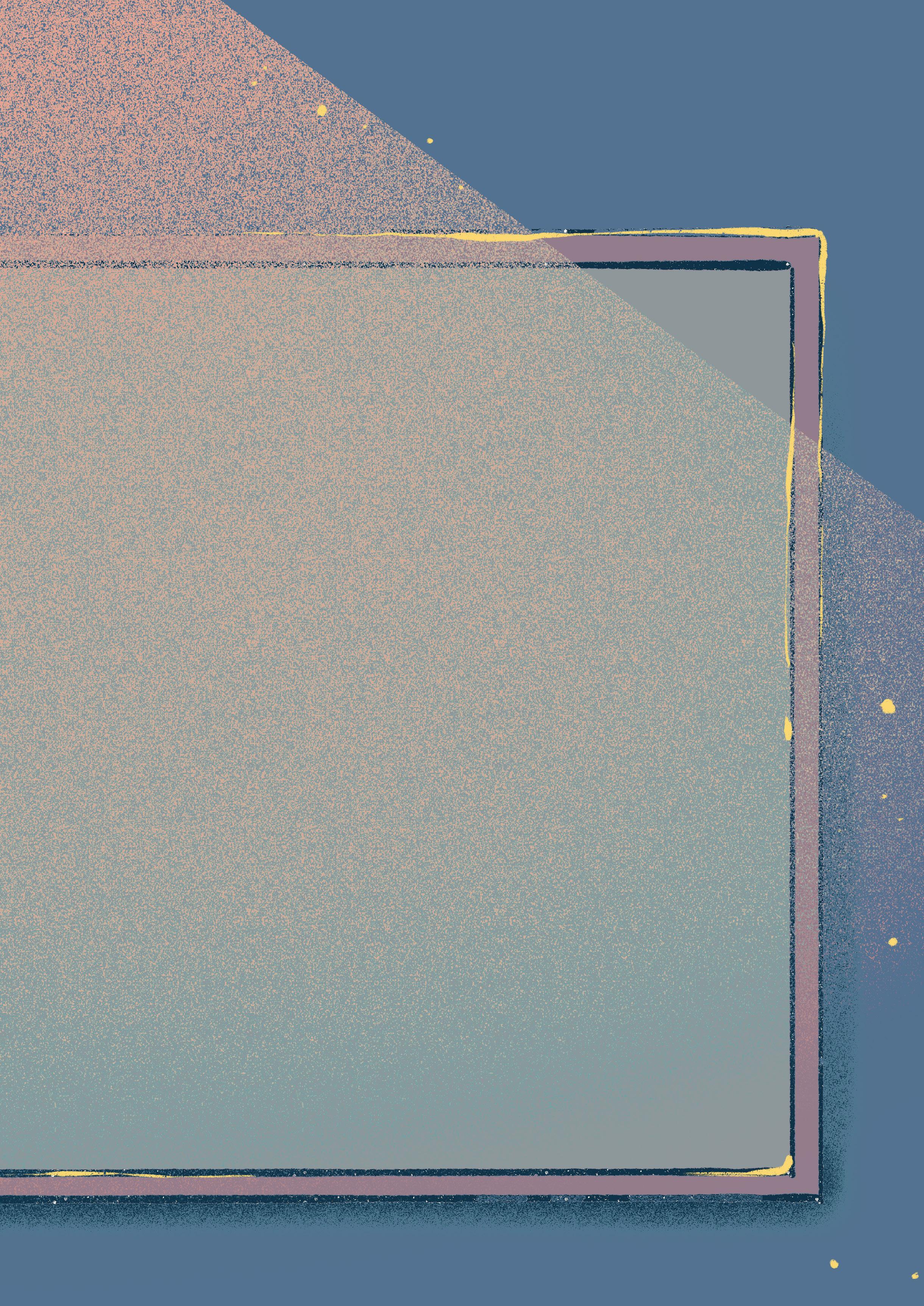
For a moment, it was as if the world outside had sped up, but theirs slowed down. One went off to hold up the invigilator, making sure their eyes were off the target. Two others to the proceeding room to make their presences known. The rest stayed there, bags on the floor. Blood vessels echoed in their ears like a war drum, crescendoing every second they remained. They scuffled around their bags, trying to silently push aside a month’s worth of discarded plastic wrappers. One pulled out a mailing tube and picked at the overhanging plastic from the lid. The two that moved on found a What’s On for the month brochure on the floor. Despite having already seen it when it first came out, they sat on a black, leather ottoman and flicked through the leaflet to wallow in their resentment. There were advertisements for toddler art workshops, lectures from art historians in the middle of weekdays, art therapy for dementia patients, and adult only life drawing sessions that finish well past the last bus services. Back at the painting, the sound of a rubber-soled squeak made another one look up at the roof, in search of an alarm that thankfully remained silent. Once they were done, together, they grabbed their things and took a step back, giving themselves only a moment to decide if they actually wanted to go through with it. They moved on to meet the others.
They took a minor detour through the tiny gift shop that harped itself as a celebratory curation of young local artists even though their items were only accessible to those with a sizable superfund. Together, they left the building and walked in silence to the train station. The old elm trees from the park arched over the path, the yellowing leaves seemed to be glowing in juxtaposition to the worn grey concrete paths. The regular musky smell of the park greenery mixed with motor oil from the train tracks and forebode a coming rain, but all our protagonists could smell was the faint aroma of laurel. They split ways, each leaving on their respective buses home. Within minutes of their departures, the sky dimmed, and every bus window was pelted with rain. By the time the first of them stepped off, snails had already started to crawl over the bus stop, dragging streaks of mud and grass behind them.
It wasn’t until a couple of excruciating hours of agonising over worst possible case scenarios when they all returned home, did anyone hear anything about it. After several page refreshes, a post on the gallery’s social media had been made public. At that moment, across each corner of the city, several heartbeats began to skyrocket, a concoction of dread and utter excitement. Someone had put up their own painting in the gallery, they had brought their own command hooks and everything. The post was asking for information as their cameras were down unexpectedly. At the end of the request, they included an image of the artwork. It was a bright collage with a homemade frame around it. There was a small sign below it that simply read “The Spectators.”
CREATIVE
81
Chasing Your Ghost
I’ve never seen you on public transport.
I want to take the Craigieburn line straight to your house. Your bashful guitar, the songs you never played me. There’s a girl on the escalator with your bad posture, your short hair.
I check the station for an alternative exit. She turns around, it’s not you.
I didn't find you at the reunion.
Small talk at a suburban birthday, missing your chapped lips, your skittish eye contact. Muted, dumb, and disgusted by niceties, I leave, take the long way home.
I thought I would be better than this by now. I imagined your name a constant presence in my phone and my heart: a flighty thing, a deflated balloon that you would keep pumping back to life. But I tripped on all the hurdles, the wires on your bedroom floor, to a fickle finish line.
Written by Ledya Khamou
Your jumper stinking sweet in the back corner of my wardrobe. Your warped sense of humour tattooed in the margins of my textbooks. The pencil indentations under my fingers, you scratch scratch scratched inside me.
Government construction upsets your neighbourhood with street rubble.
I walk on the fissures of collateral sidewalk, and pretend I’m tracing the lines on your palm. I pray the ground opens up, pray you run to the driveway to check the commotion.
The floor I need to cross to get to you is a frayed tightrope. You’re a familiar mirage on the other side and I have a phone pressed to my ear, but the connection keeps waning. Crackling, sputtering, buzzing…
“Hello? Hello?”
I redial, turn around but it’s never you.
COLUMN Creative Column: m etro Disjun C tion
Content Warning: Mentions of death 82

COLUMN
83
Illustration by Amber Liang
'Hubert's Travelog' by Yicheng Xu

COLUMN
84

COLUMN 85
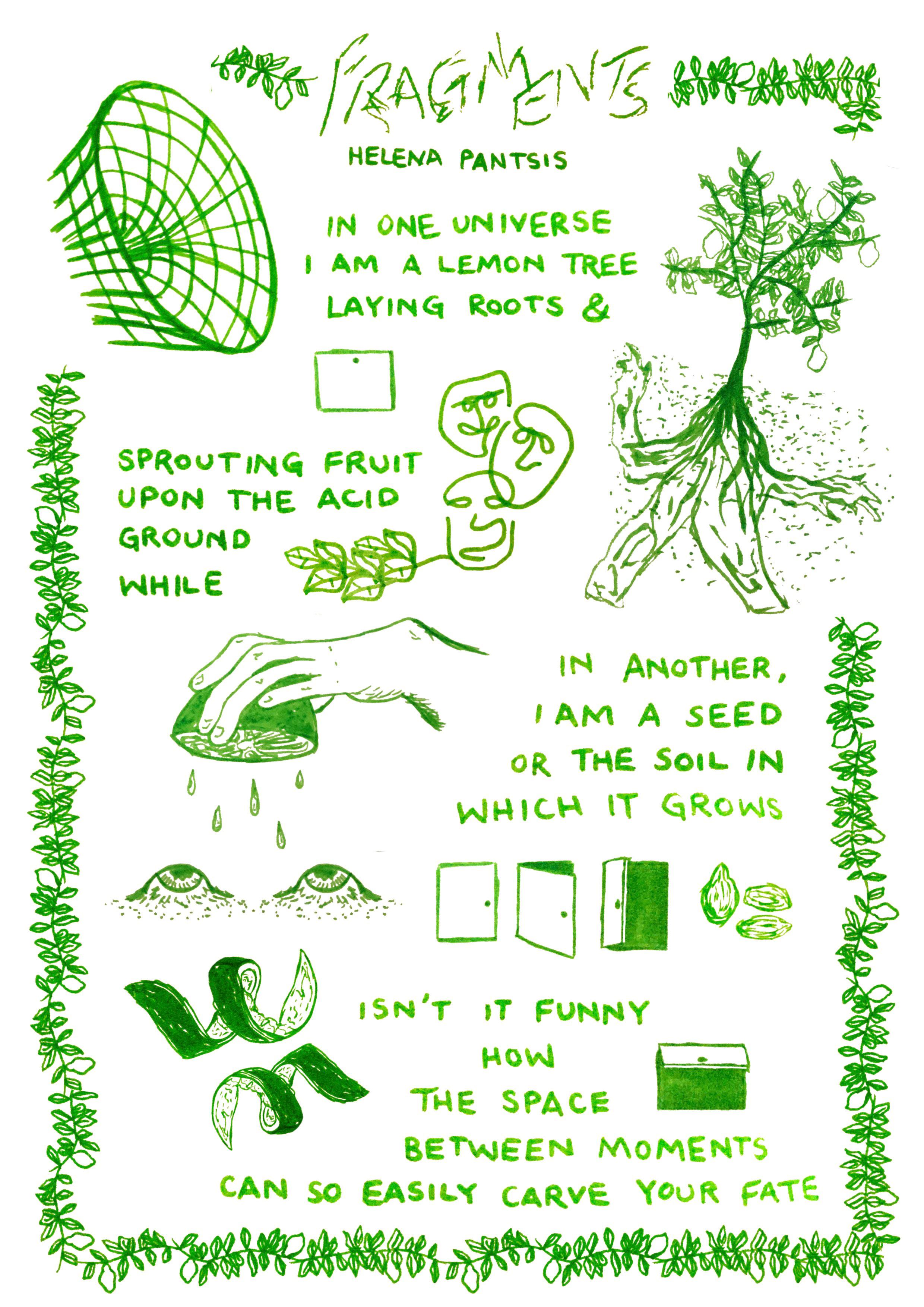
COLUMN 'CHRONIC'
86
by Helena Pantsis
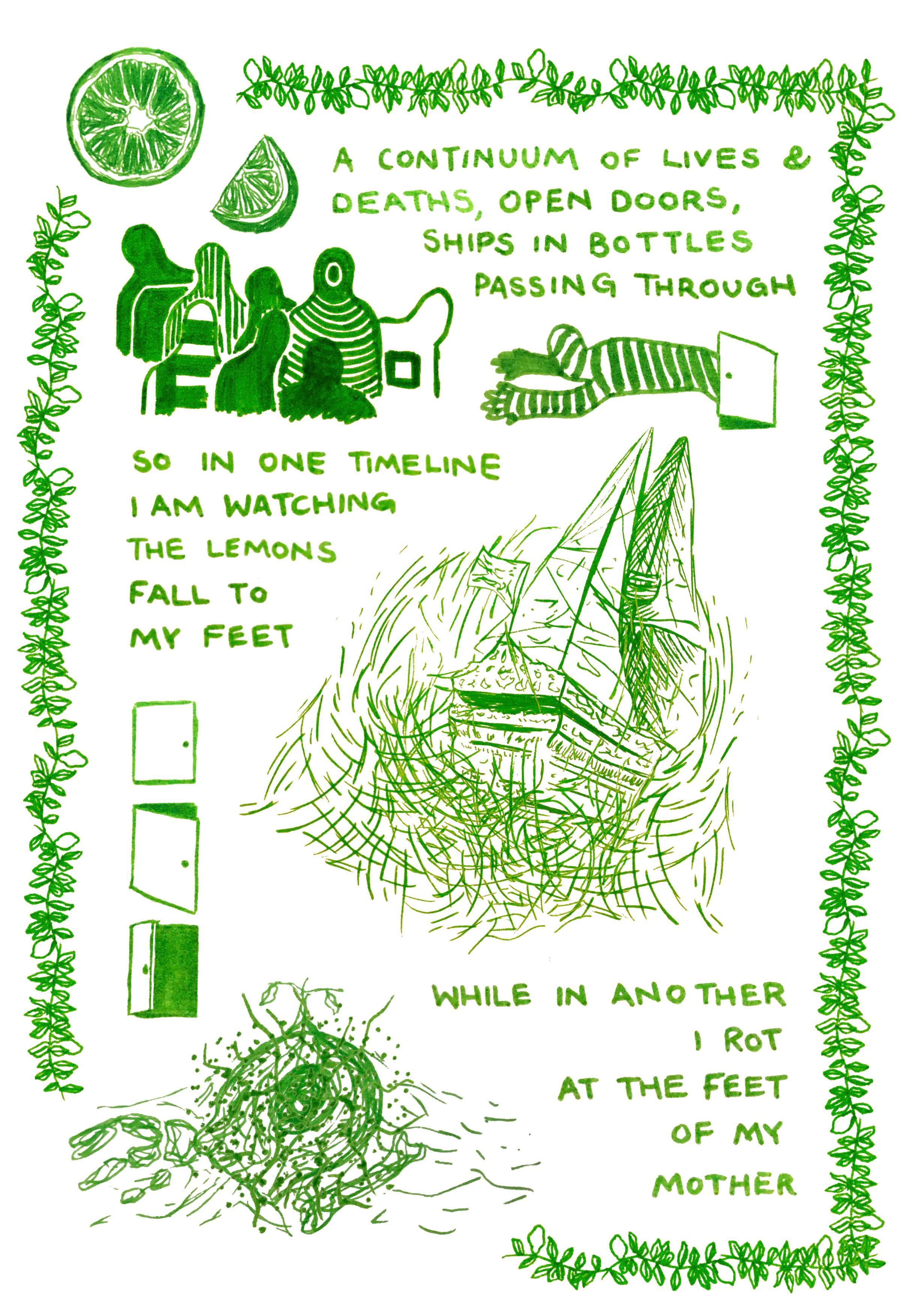
COLUMN 87

COLUMN 88
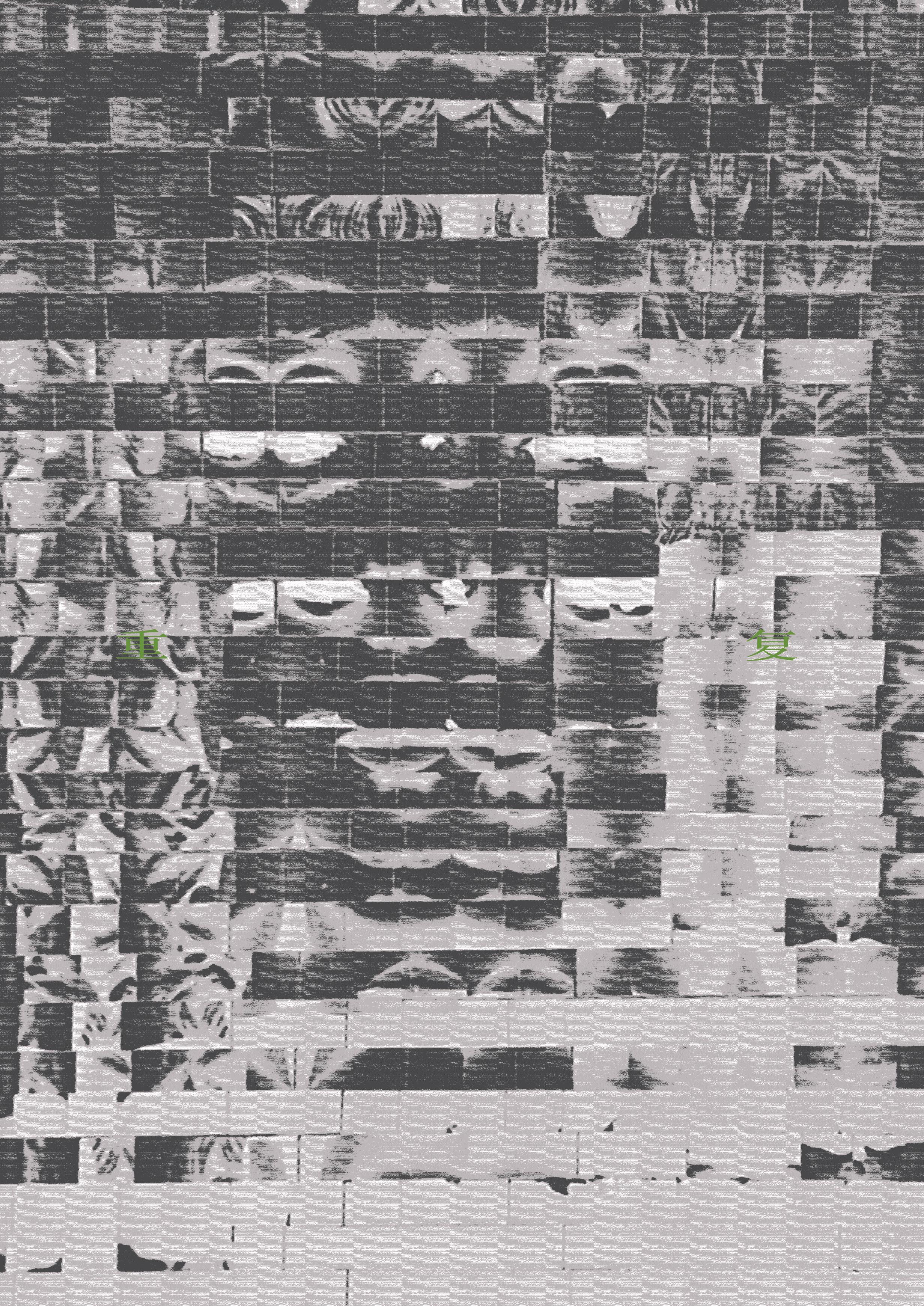
COLUMN ' 重复 Existence in Repetition' by Zhuzhu Xie 89
UMSU and the Media Office are located in the city of Melbourne, on the land of the Wurundjeri people of the Kulin Nation. We pay our respects to their elders—past, present and emerging—and acknowledge that the land we are on was stolen and sovereignty was never ceded.












 Illustration by Olivia Sutherland
Illustration by Olivia Sutherland







































 Written by Joel Duggan, Alain Nguyen, and Chelsea Daniel
Written by Joel Duggan, Alain Nguyen, and Chelsea Daniel









 Written by Charlotte Handley
Written by Charlotte Handley


 Written by Veronica Kwong
Written by Veronica Kwong
















 Written by Claire Le Blond
Written by Claire Le Blond



 Written by Pavani Ambagahawattha
Written by Pavani Ambagahawattha




 Illustration by Nina Hughes
Illustration by Nina Hughes




 Written by Sophie He
Written by Sophie He


 Artwork by Helena Pantsis
Artwork by Helena Pantsis
 Photography by Piper Jones
Photography by Piper Jones

 Photography by Sammaneh Pourshmaneh
Photography by Sammaneh Pourshmaneh
 Artwork by Sara Yadav
Artwork by Sara Yadav
 'Here's
'Here's



















 Written by Wildes Lawler
Written by Wildes Lawler















 Written by Stephen Zavitsanos
Written by Stephen Zavitsanos
 Written by Stephen Zavitsanos
Written by Stephen Zavitsanos
 Written by Michael Leach
Written by Michael Leach

 Written by Rhylee L.
Written by Rhylee L.

 Written by Abigail Brooks
Written by Abigail Brooks










